


















Preeti Jabbal
Farzana Shakir, Kalyani Wakhare, Dilip Jadeja, Noel G De Souza, Parthasarthy Chaganty, Hasnain Zaheer, Mohan Dhall, Geeta Khurana, Petra O’Neill, Rani Jhala, Nancy Jade Althea, Sarah Malik
Prashant
ADVERTISING MANAGER
Vivek Trivedi 02 9262 1766
ADVERTISING ASSISTANT
Nitika Sondhi 02 9279 2004
DESIGN
Danielle Cairis
Proud member of:
Indian Link is a fortnightly newspaper published in English. No material, including advertisements designed by Indian Link, may be reproduced in part or in whole without the written consent of the editor. Opinions carried in Indian Link are those of the writers and not necessarily endorsed by Indian Link. All correspondence should be addressed to
Indian Link
Level 24/44 Market St, Sydney 2000 or GPO Box 108, Sydney 2001
Ph: 02 9279-2004 Fax: 02 9279-2005
Email: info@indianlink.com.au

www.indianlink.com.au
It was a prayer that Tony Abbott probably said every night. With a parliament evenly split, it came down to two men: Rob Oakeshott and Tony Windsor, who decided to cast their lot in favour of the Gillard camp. Tony Abbott has been spitting bricks ever since that fateful announcement and has continually called on the Gillard and Rudd governments to call the election.
God has listened and an election has now been called, but perhaps not with all of the advantages which Tony Abbott had a few months ago. This time, the contest is between two formidable opponents, unlike the battle between Abbott and Gillard, which was heavily tilted in the favour of the leader of the Coalition.
The Labor Party change of leadership was a change which had to happen.
Labor was slipping in the polls and all indications were that they would be totally annihilated. While the Gillard led government was putting groundbreaking reforms in place, the message was just not getting through. Too much noise about leadership spills, backgrounding of journalists by those in the anti Gillard, pro Rudd camp, all caused a toxic atmosphere. To the Labor Party and all political observers, Rudd was whiteanting his leader and the more he did so, the more popular he became with the electorate and the poll numbers in his favour shot up. The public loved him, but his own party, other than a select few, despised him.
However, it was self preservation as Gillard was deposed and Rudd became the new leader of the Labor Party, and the fourth Prime Minister of Australia in six years. Since then, poll numbers have shot up.
For the Indian Australian community, Kevin Rudd has never openly demonstrated his friendship with India, unlike his love for China. The Labor Party has been more dismissive of the student issues than the Liberals. The issue which will emerge is which party aligns itself with the aspirational Indians
who have now made their new home in Australia. Trends have been changing in the Indian Australian community. A large number which came down under in the last 10-15 years have changed from being migrants in employed positions to those who have dabbled in small businesses. These businesses might be franchises of Subway, 7-11, or Australia Post, or even small businesses in exporting/importing, accounting services, food outlets, travel agents etc.
They now need a government which can support them in these activities by minimising red tape and the restrictions which lead to a free flow of services. The Liberals have form on this but Labor is trying to narrow this gap.
PM Kevin Rudd has increasingly spoken about his plan to connect with business. In his first term, he could not do this. If he cannot assure the migrant community that he now has a new plan to help the migrant community hoping to make a better life here, it is going to be difficult to get their ticks in the ballot box for the Labor Party.
Pawan Luthra is the current Parliament of NSW Multicultural Journalist of the Year.

Dixit, Saloni Kober,








STAGE
An Indian Embrace
21 - 25 Aug Nautanki Theatre presents Carol Dance’s play An Indian Embrace, directed by Lenore Robertson. Riverside Theatres Parramatta. Bookings 02 8839-3399, www.riversideparramatta.com.au
Utsavayaanam
Sat 17 Aug Sangeetha Souhruda Sangham Sydney presents a dance production entitled Utsavayaanam at Dundas Community Hall, 27 Sturt Street, Telopia. Details 0401 261 470
INDIAN INDEPENDENCE DAY
India Day Dinner
Sat 10 Aug The Council of Indian Australians invites you to celebrate India’s Independence Day at Bowman Hall, Campbell St, Blacktown, 6.00pm – 11.00pm. Details Subba Rao 0411 335 999
INDAUS Fair
Sun 11 Aug Indian Australian Association of NSW celebrates India’s Independence Day at Rosehill Gardens, Rosehill Racecourse, 11.00am – 6.00pm. Details www. indaus.org.au
Flag hoisting ceremony
Thu 15 Aug The Indian flag will be hoisted at a ceremony at the home of the Consul General of India (Sydney), No. 2 Pleasant Avenue, East Lindfield, Sydney at 11.30am. Immediately following this, the congregation will move to East Lindfield Community Centre for a cultural performance and serving of refreshments. All persons of Indian origin are invited to attend.
RSVP to indianc@ indianconsulatesydney.org
MISC
Multicultural Eid Festival and Fair Sat 18 Aug Fairfield Showground, 10:00am - 8:00pm. Highlights include Traditional dresses, jewellery, books, music, artworks, shoes, food, songs, folk dances and other displays Details: www.meff.com.au
NDIS and Person Centred Planning in Disability
Sat 31 Aug Samarpan Inc presents an information session on NDIS. Dundas Community Centre, 27 Sturt St, Telopea NSW. Details 0432 798 938 or www.samarpan.org.au
FUNDRAISER
EKAL Vidyalayas Charity
Sun 15 Sept Ekal women’s high tea at Mercure Paramatta Hotel from 2.00 pm to 5.00 pm.
Highlights include dance performance, special guest speakers, trivia game, lots of prizes and an open discussion on the goals and objectives of Ekal Women. Details Vineeta Bansal 0425 371 413 or www.facebook.com/ekalwomen
sPIRITUAL
AWgP Australia

If you want Yagya, Satnarayan Katha, various Sanskara (Vivah, Janma Divas, Vivah diwas, Namkaran, Punsavan, Mundan, House warming, Bhumi poojan etc.) at home please contact any one of the Gayatri Pariwar parijan. Donations welcome. Details: Archana/ Anand Jaiswal 0404 430 730 or visit www.awgpaustralia.org.au
shri shiva Mandirsri Navavarna Pooja, sri Yantra/ Chakra Pooja
sun 4 Aug 8am-1pm
All devotees are cordially invited to participate in the Pooja, but only the sponsors will be blessed with Sri Chakra. Pooja Thali (plate): donation of $21 per family. Shri Shiva Mandir, 201 Eagleview Road, Minto.
Details: Jagdish Chawla 0421 276 384 or jagdish1@optusnet. com.au
gopa kuteeram
4th sunday of every month
4pm-5:30pm
The Global Organisation for Divinity runs free spiritual educational classes for children aged 4-12 years. Crestwood Community Centre, Crestwood Drive, Baulkham Hills. Parents can join in the devotional lecture by Sri Deepak Vinod. Classes are also being run in Liverpool. Baulkham Hills details: Jayashree on 02 9620 4676. Liverpool details: Deepak Vinod 0422 127 956.


Twenty-year-old Jaipur girl Santosh has serious physical impairment as a result of contracting polio as a child. Losing both her parents at a young age, she grew up under the care of her grandmother as part of a nomadic community of banjaras (gypsies) in a remote slum area of Jaipur. Growing up with absolutely no self-respect, she felt like she was a burden on her grandmother.
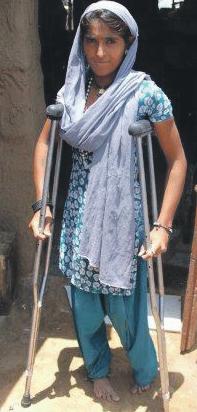
Determined to change her destiny, Santosh developed her skills as a jewellery and handicraft student and gained back her confidence. Today, she works as a trainer at the Franklyn Scholar Training Centre at Jhag Children’s Village just outside of Jaipur and earns a regular income. She is able to fully support her 90-year-old grandmother and does not let her physical disabilities hinder her.
Santosh owes her new life to Abha Goswami, founding director of the NGO I-India, who encouraged her to participate in the Ladli Vocational Training Centre in Jaipur in the year 2000.

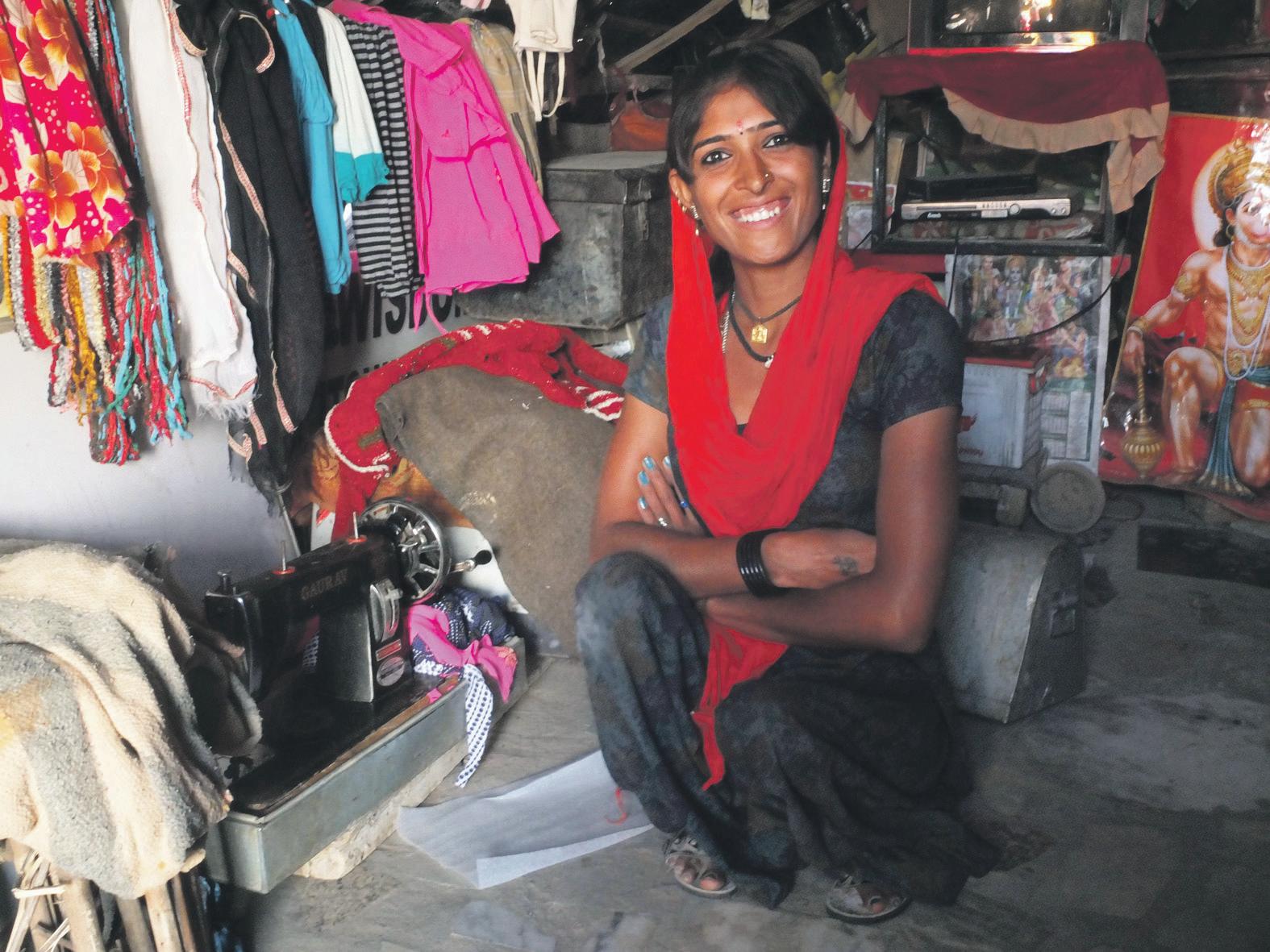
Franklyn Scholar, an Australian workforce education provider, along with I-India Project, inaugurated the Franklyn Scholar Vocational Training Centre earlier this year at the Jhag Children’s Village, located 45km south of Jaipur on the Jaipur-Ajmer national highway.
Opening this vocational centre has been a long standing endeavour for I-India
Australia, the local chapter of I-India, a registered not-forprofit organisation established in 2007. The centre is built on a 5-acre block of land in Jhag, which was sold to I-India by the Government of Rajasthan at a nominal cost. It aims at empowering women and children from troubled backgrounds who are living below the poverty line with only the bare minimum required to stay alive.

“Their homes are generally one room mud-brick dwellings with an outdoor kitchen and few meagre possessions,” recalls I-India Australia committee member Renate Barnett, who recently visited the village herself.
“I always feel so concerned about them when the weather conditions are extreme. The mid-40 degree heat that is commonplace through the summer is unbearable for a day, let alone a whole season,” she adds.
Last August, many villagers lost everything they had in the world when their homes were washed away in the monsoon floods.
“With the construction of the Franklyn Scholar Vocational Training Centre, I-India Australia hopes to not only improving the living conditions of the people, but also at developing a feeling of self respect amongst them,” says Renate.
A leading provider of workforce education across a range of industry sectors and qualifications, Franklyn Scholar took on the role of the sponsor and financed the entire construction and fit out cost.
In a difficult financial climate, Franklyn Scholar is a company that has not shied away from its social responsibility of giving back to the community. Instead, the organisation has embraced this task with an open heart and has been helping I-India Australia since 2010. It began when Franklyn Scholar had started raising money for I-India Australia through ‘Franklyn Footprints,’ a project that was developed with the desire to give back to the community and raise awareness.
“A footprint leaves an enduring mark and this is exactly what the Franklyn Footprint has been set up to do - allowing each and every person working for Franklyn Scholar to leave their lasting impression by engaging and participating in their State’s fundraising activities and creating awareness of this incredibly important project,” says Victoria Woodfall, Tasmanian based training consultant and coordinator of Franklyn Footprints.
Since 2010, Franklyn Scholar has donated more than $100,000 to help build the vocational centre.
fundraising activities such as raffles, morning teas, golf days, Bollywood dinners and movie and trivia nights. “The Jhag Children’s Village is in a rather remote corner of Rajasthan, off the tourist track and out of public view, so it is fantastic that the company is prepared to invest such a huge amount of its time and capital where it will not receive maximum exposure and recognition,” says Renate.
Besides the Franklyn Scholar Vocational Training Centre, the Jhag Children’s Village is planning two shelter homes for orphaned and homeless children, a health centre, sports field, produce garden, transport vehicle, as well as staff accommodation.
With the construction of this village, I-India aims at improving the quality of life for people in
villages through provision of medical services, educating children and providing vocational training services. The goal is to make the community self-sufficient and in turn, put an end to the high numbers of people migrating to the big cities in search of higher income but who unfortunately, due to their lack of education, join thousands of similarly disadvantaged people struggling to survive in atrocious conditions. Another focus point is educating women of the community in skills that can help them become self-sufficient and may even eventually help them to set up their own micro-businesses or cooperatives. With the resources and connections that I-India has to offer, women will be able to sell items they make without having to give a large cut of their profit
to the unwanted middleman. Not only will this benefit their local economy, it will also help build a feeling of self respect amongst the women and along with it, a feeling of self reliance and independence.
“Improving the status of women in these very traditional regions is a long and slow process, but through empowerment initiatives such as those offered at the Franklyn Scholar Vocational Training Centre, it is assured,” says Renate.
During the first phase of operations, the centre will offer students a number of vocational courses including tailoring, jewellery design, CAD, block printing and manufacturing of different kinds of handicrafts, paper products etc. Since its inauguration, the centre has been organising regular personal contact programmes, home studies of locals, and orientation camps to spread the word amongst neighbouring villages and inform them about how they can use the skills and training programme to improve their quality of life. As a result of this

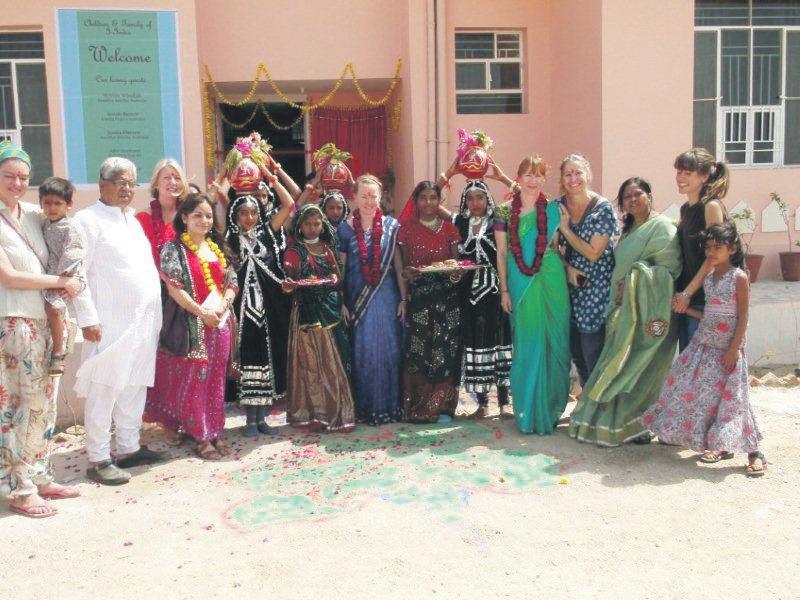

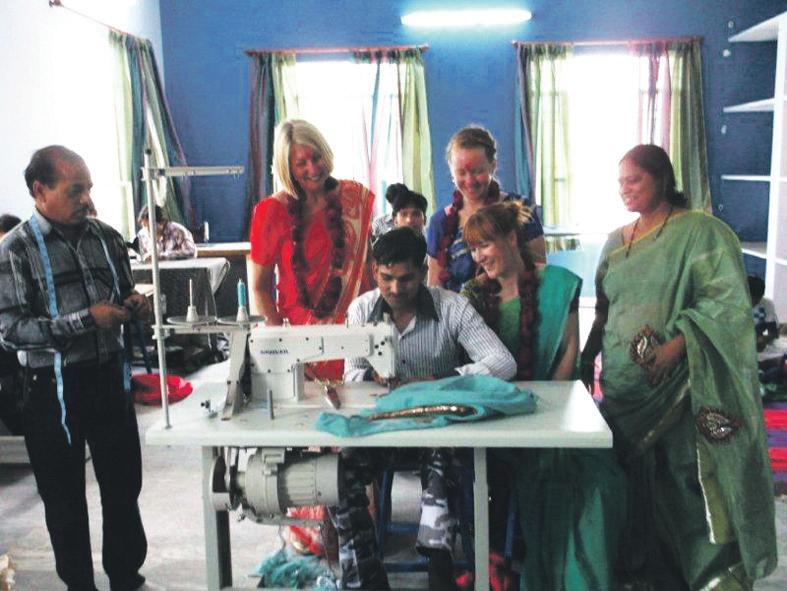

effort, the centre has already started teaching the Tailoring Training course, as well as Computer Studies. Additionally, the local community is offered employment opportunities for construction and maintenance of the school and shelter homes.
The prospect of improving their quality of life has created an eagerness to learn skills and
work together harmoniously.
In the future, Franklyn Scholar plans to continue its support for the Jhag Children’s Village by financing their recurring costs for the next two years, at which point the centre will be able to support itself. They have already started fundraising to raise money for a van that will provide transport to teachers to and from the
vocational training centre.
“I-India Project Australia is immensely proud of the Franklyn Scholar Vocational Training Centre, as it is a shining example of how corporate Australia has a heart and conscience,” says Renate.
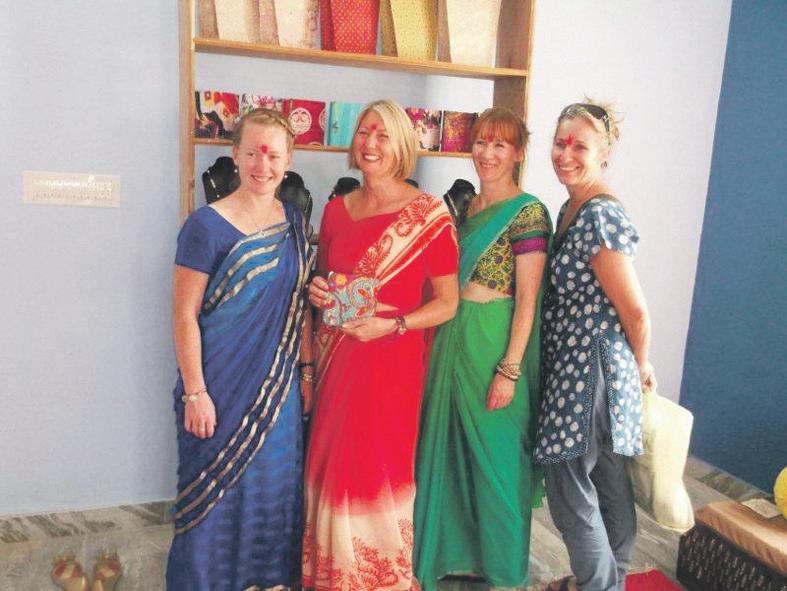
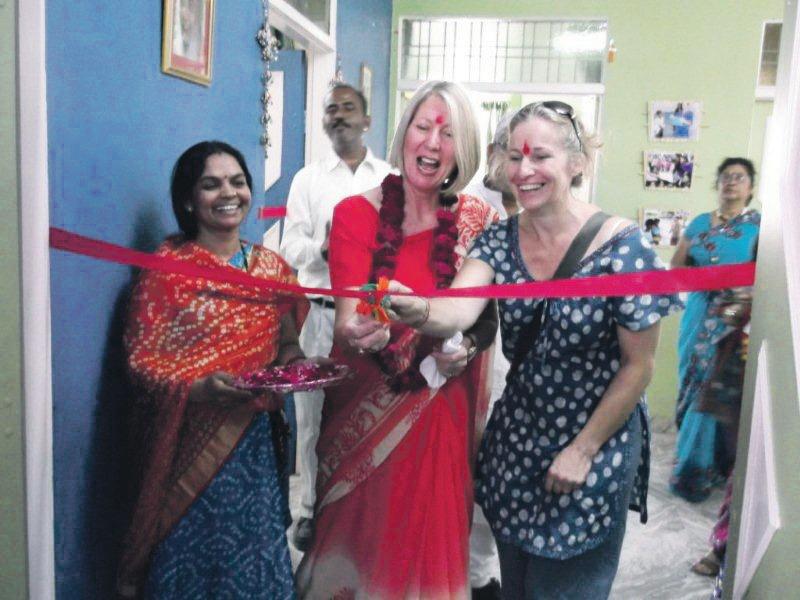
For more details of the work done by I-India Project Australia, visit their website www.i-indiaproject.org.au
In the future, Franklyn Scholar plans to continue its support for the Jhag Children’s Village by financing their recurring costs for the next two years, at which point the centre will be able to support itself
A focus point is educating women of the community in skills that can help them become self-sufficient and may even eventually help them to set up their own microbusinesses or cooperativesI-India Australia members at the official opening of the training centre





After trying his hand at Mahatma Gandhi’s cherished spinning wheel at the Sabarmati Ashram, Amitabh Bachchan, one of India’s best loved film personalities, wrote that ‘peace and serenity’ descended upon him. There was never a stronger modern advocate of the cause of using this simple, yet highly symbolic piece of equipment.
Gandhi himself had said of the spinning wheel, “Take to spinning to find peace of mind. The music of the wheel will be as balm to your soul. I believe that the yarn we spin is capable of mending the broken warp and woof of our life”.
Many symbols epitomise India’s independence from British rule, but the ‘charkha’ or spinning wheel is perhaps one of the most powerful signs of the values and aspirations of India’s people of the time.
The legacy of the spinning wheel is an ancient one, hailing back to the traditional role of women in Indian society. Women
would spin as part of their daily routine, which would often become a social activity as they spun in groups and took the opportunity to socialise as well. Cotton and silk fibres were generally spun on the charkha, into cloth or rugs. The charkha was generally included as part of a bride’s dowry, when she left her father’s home for that of her husband.
During the colonisation of India, the British realised that growing cotton was a cash crop that could enrich their coffers. Cotton was grown in India, then harvested and shipped to Britain by the colonialists, where it was woven and spun into cloth. This was then shipped back to India and sold at unaffordable prices.
Naturally, Mahatma Gandhi opposed this blatantly unfair practice and propagated the concept of weaving homespun cloth on charkha in India, and wearing this in defiance of the price of English-made cloth. He made spinning on the charkha a symbol of the passive resistance movement in India, through this seemingly mild, yet powerful activity.
The homespun cloth was called ‘khaddar’ or ‘khadi’, meaning ‘rough’. Always one to lead by example, Gandhiji began spinning his own khadi on a charkha, and through his influence, thousands of Indians took to the spinning wheel, dealing a severe economic blow to the British.

The entire network of cotton growers and pickers, weavers, carders, distributors and charkha makers benefitted from this movement that represented self-sufficiency and interdependence on themselves as a community. Khadi embodied the dignity of labour, equality, unity and independence, as India took control of her indigenous industries. It employed millions from sowing of cotton seeds to spinning the final cloth, to creating an outfit; it provided the basic need of clothing for the population, also creating a feeling of patriotic pride in the product. Indeed, Nehru called khadi ‘the livery of our freedom’.
Besides helping local business, this gesture heralded the start of a nascent ‘be Indian, buy Indian’ movement, as Indians began boycotting foreign goods and
choosing locally produced ones instead. This was a significant boost to India’s fledgling economy. The ‘swadeshi’ (homegrown) movement had taken root, and was here to stay.
Although it’s likely Gandhiji began the charkha movement to make a statement to the colonialists, he soon discovered the merit in spinning, as it aided him in silent meditation. It is recorded that he found the action of the spinning wheel soothing and pleasing to the psyche. Gandhiji spent many an hour placidly spinning on his charkha, engulfed in the silence of his own thoughts. To take this concept to the masses, Gandhiji also spun in public. It is said that since the traditional charkha was bulky and difficult to move, Gandhiji held a contest to design a charkha that would be compact, portable and easy to afford. The winner was the box design of the charkha, and history recounts that the accelerator wheel was his idea. Also, the role of spinning that was traditionally associated with women, morphed into an activity that could be performed with ease and relatively pleasing results by men too.
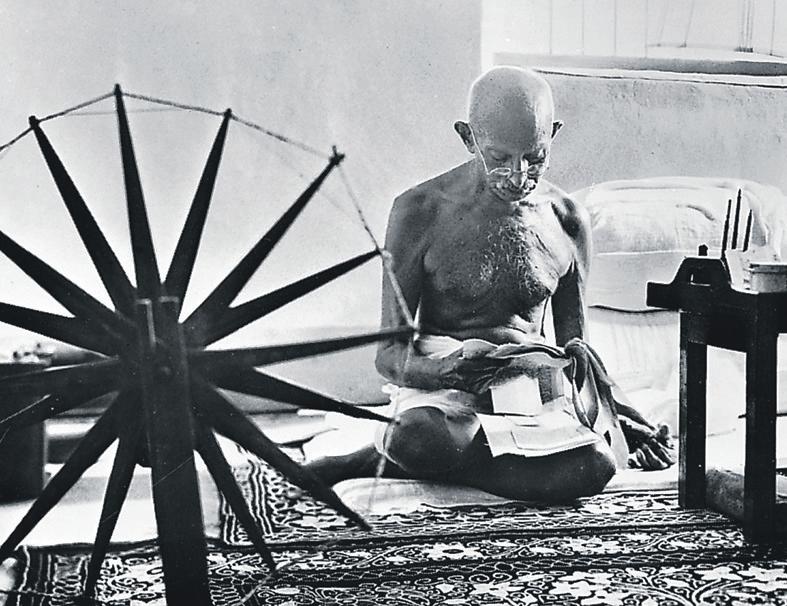
So powerful was the influence of the charkha, that the first designs of the Indian flag created included the traditional spinning wheel, a symbol of self-reliance. However, a few days before India became independent, a specially constituted Constituent Assembly decided that the flag of India must be acceptable to all parties and communities, and the colour scheme, saffron, white and green were chosen for the three bands, representing courage and sacrifice, peace and truth, and faith and chivalry respectively. The charkha was
years after Independence, a powerful symbol of self-reliance, industry and determination still retains its followers and admirers, find RAJNI ANAND LUTHRA and SHERYL DIXIT
replaced by the Ashoka chakra, representing the eternal wheel of law.
The flag of India is only allowed to be made from khadi, although in practice many flag manufacturers, especially those outside of India, ignore this rule. Some Indian currency has a charkha on it and even political parties use the charkha as their symbol to denote their patriotism.
The black-and-white image (above left) of Gandhi with his spinning wheel that has become an iconic image of the Mahatma, was taken by American photographer Margaret Bourke-White in 1946, and published in Life magazine in 1948.
Margaret Bourke-White said later, “It would be impossible to exaggerate the reverence in which (Gandhi’s) ‘own personal spinning wheel’ is held in the ashram”.
In notes accompanying the image, Bourke-White observed, “(Gandhi) spins every day for 1 hour, beginning usually at 4. All members of his ashram must spin. He and his followers encourage everyone to spin. Even M. B-W was encouraged to lay (aside) her camera to spin … When
I remarked that both photography and spinning were handicrafts, they told me seriously, ‘The greater of the two is spinning.’ Spinning is raised to the heights almost of a religion with Gandhi and his followers. The spinning wheel is sort of an ikon (sic) to them. Spinning is a cure all, and is spoken of in terms of the highest poetry”.
Even though some of Gandhi’s contemporaries did not understand his obsession with the spinning wheel (Rabindranath Tagore thought the charkha and khadi movement were akin to a cult), it cannot be denied that it became an agent of change, by heralding the swadeshi ethos, recognising the dignity of labour, bringing in social and economic upliftment, and importantly, unifying the Indian masses against a common threat.


The charkha remains an icon of the swadeshi movement, and despite economic, industrial, political and social change, has never lost its popularity. Homespun khadi is still in demand despite mechanisation of the production process, and the charkha
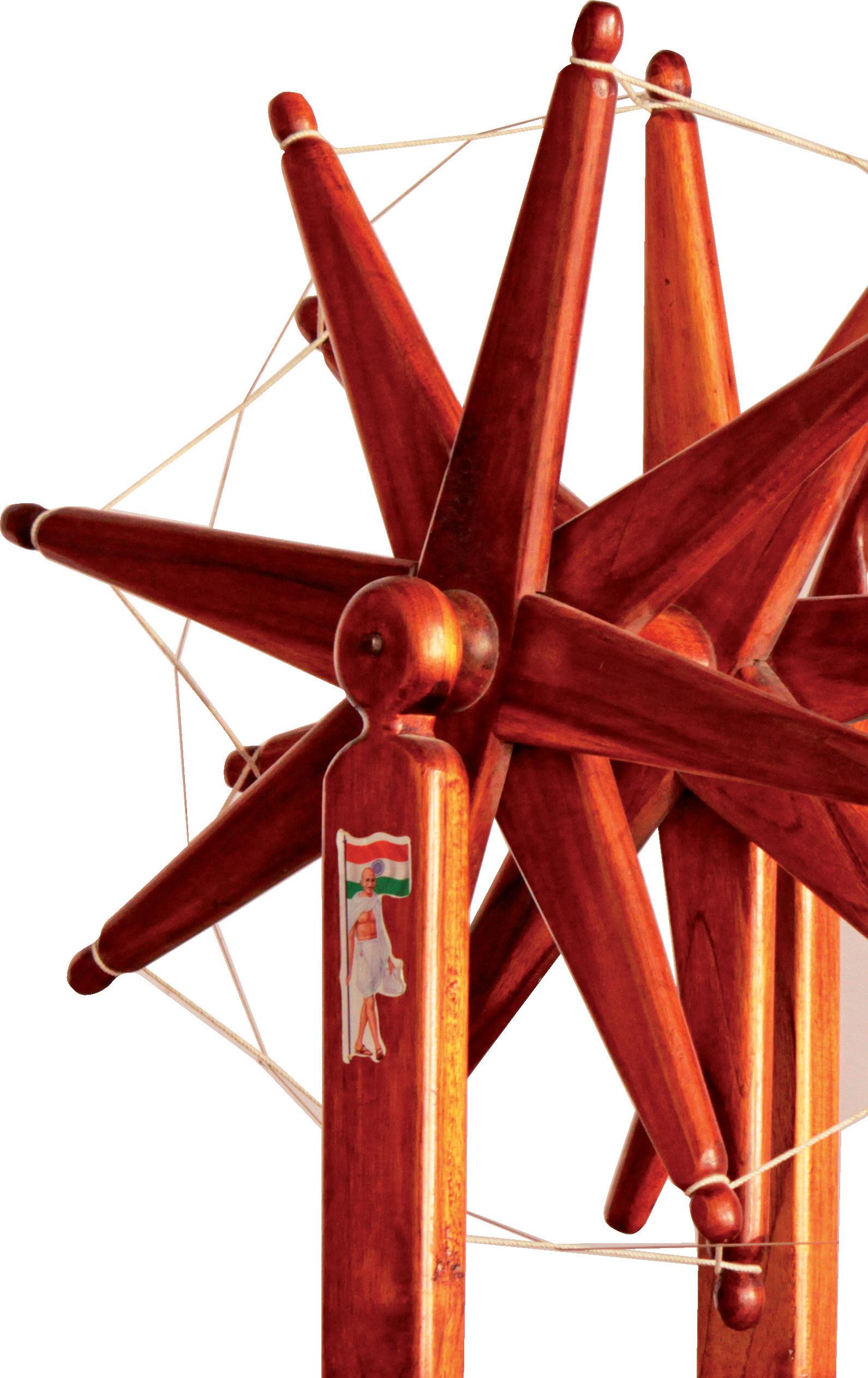
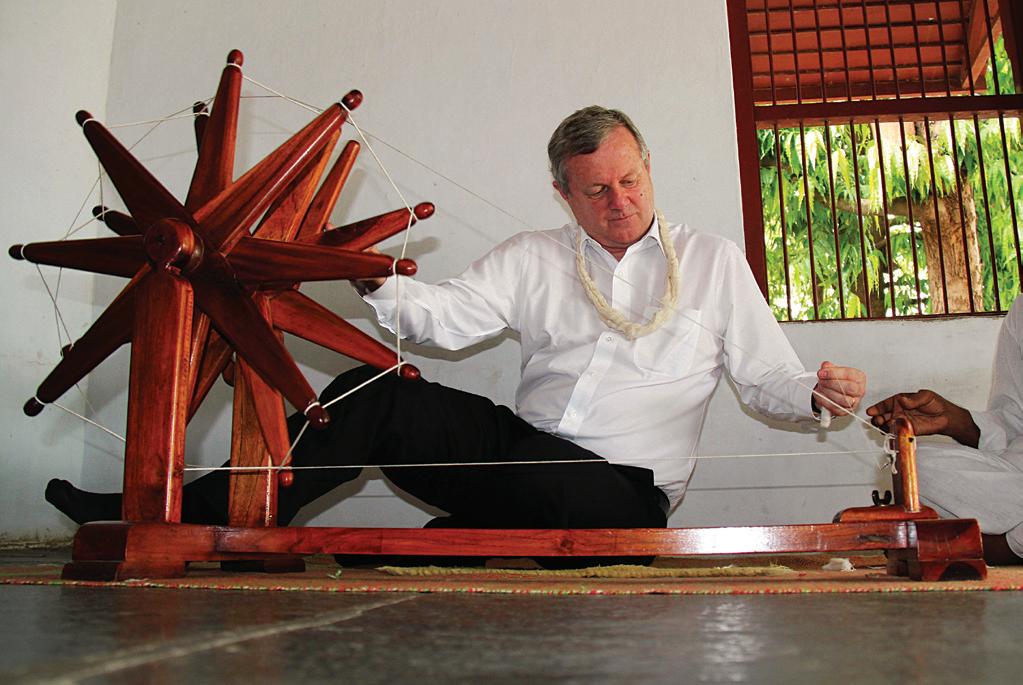

is still used to create wonderful, rare and unique pieces of clothing, rugs or other décor. Charkha spinners are sought after for their trade which, while not as aggressively promoted since the past 66 years, still retains its followers and admirers. Indeed, some are found here in Australia, keeping alive the legacy of the spinning wheel.
Gandhiji’s charkha and all that it embodies still lives on as a symbol of resilience, selfreliance and strength in a changing world.

We may have the impression that the charkha is indigenous to India and its
colonial history, but it certainly made its presence felt through exponents of the art.
For Dr Nana Badve, a much-loved member of Sydney’s Marathi community and the RAIN seniors group, the charkha was a lifelong passion until he passed away in 2010. He worked in the textiles industry for most of his life, and there is little doubt
that it was his early introduction to the charkha at just 12, that influenced his career choice.
His daughter Swati Lele remembers fondly, “The founder member of the Spinners and Weavers Guild in Australia, the late Mrs Pat McMahon asked my dad if he would demonstrate the use of the charkha. This was the beginning of a rewarding journey for him as he conducted
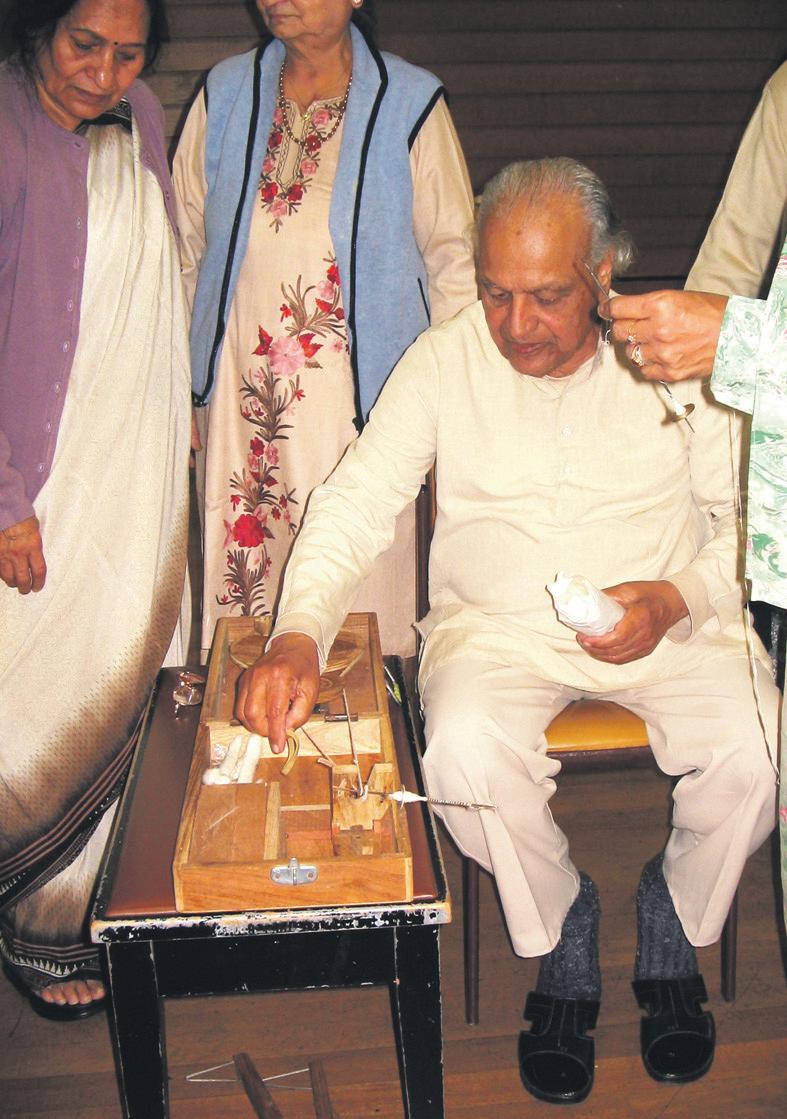
many workshops over 25 years around Melbourne, Brisbane, Newcastle, the Blue Mountains, Gosford and Sydney. In January 1989, he was a special invitee to the Melbourne Craft convention where he held a large workshop on spinning”.

Nana’s wife Sarojini Badve was always by his side, and a helper at the workshops. Nana not only owned many spinning wheels, but also sourced some 100 charkhas
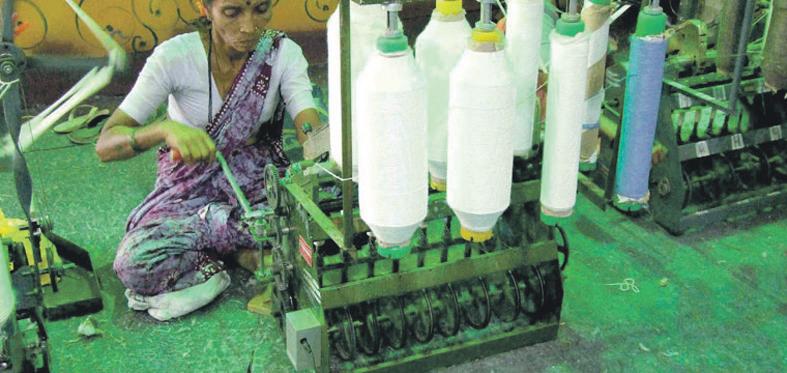

In 2007, Indian inventor RS Hiremath produced a modified version of the Indian spinning wheel which harnesses the energy used to spin it and transforms it into electricity. Called the e-charkha, the device is now commercially produced by Bangalore-based firm Flexitron.
It is used in rural India where people are used to the idea of hand-spinning.
The e-charkha comes fitted with a dynamo which converts the kinetic energy generated by the spinning wheel into electric energy. The electricity thus generated charges a battery connected to the device. Two hours of continuous spinning can power an LED light for six to seven hours. This might not seem much, but in sections of rural India with no electricity, it is substantial.
The e-charkha costs between Rs 3000 to Rs 12,000, comes with a warranty of 35 years and is made of light material to make it more user-friendly. The idea came to Hiremath as a child as he studied his grandfather’s charkha.
from India for spinners here.
Born in 1929 to a family much influenced by the Mahatma, young Nana was encouraged to spend some time spinning daily, like others in the family. He first learnt to spin cotton on a spindle, called takali
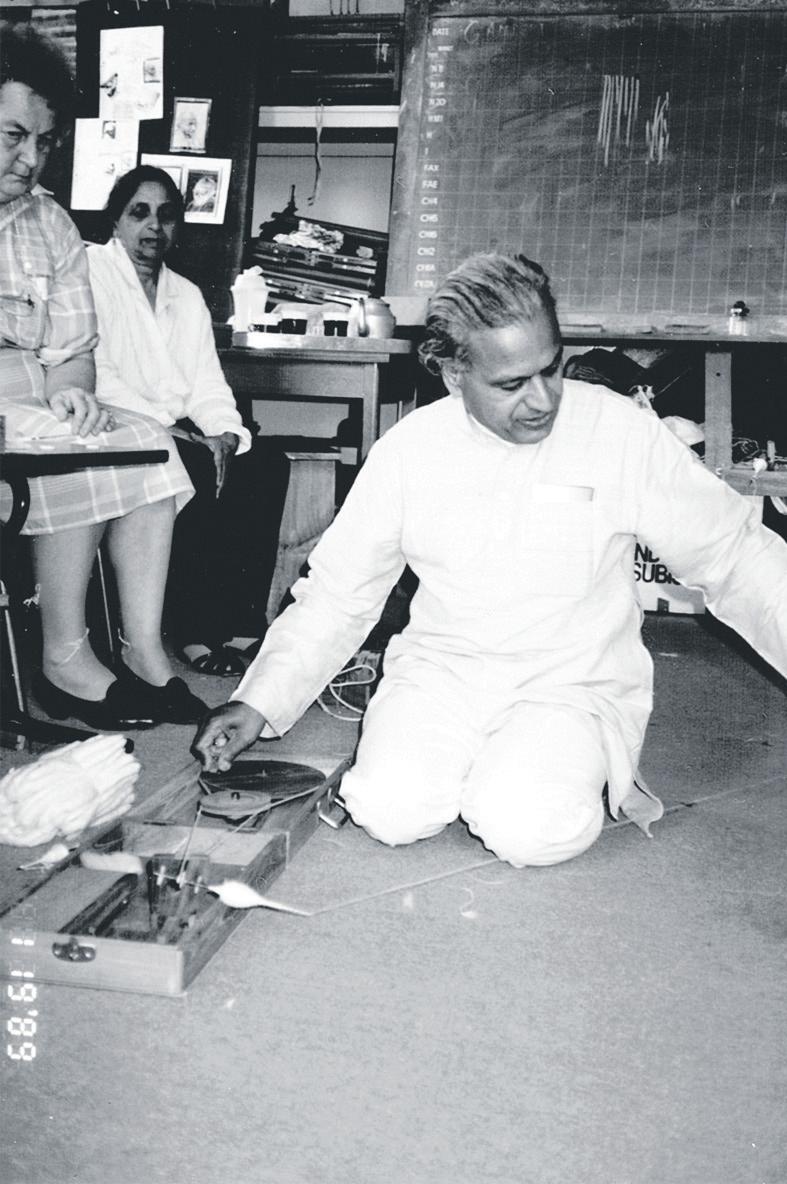
It was hard not to feel drawn towards the political struggle of the times.
“He stayed at Gandhiji-led ashrams and got involved in the movement for Independence,” Sarojini reveals. “In his early childhood, he enrolled himself as a volunteer at youth organisations and was a member till almost 1950. He attended many meetings addressed by Gandhiji and his contemporaries”.
In fact, with his charkha, Nana reminded many here of the great man himself. Sudha Natarajan, a close friend from the RAIN group, recalls, “Nana would often quote Gandhi: ‘Live simply, so that others may simply live’. These words ring so true today in these times of wasteful extravagance. Nana would insist that we need to simplify our lives.
Following in Gandhiji’s footsteps, Nana even visited several Indian villages, where he encouraged the use of the charkha”.
Towards the end of his life, Nana would often ply the charkha for his RAIN friends.
“When he passed away, we made sure to display his favourite charkha during his memorial service,” Sarojini says. “His woven portrait of Mahatma Gandhi, which he made as part of his Bachelor’s degree in 1952, has now been donated to the Cavalry Hospital in Sydney. It hangs in the foyer there”.
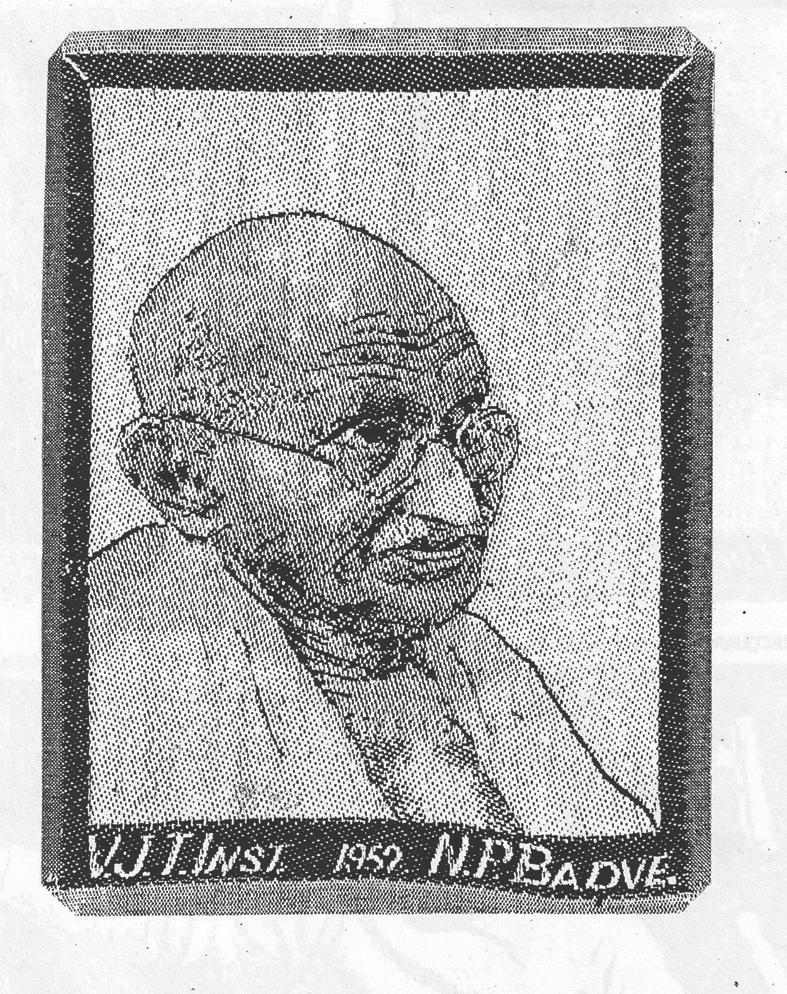
The charkha makes a regular appearance at one specific annual event here in Australia.
The Teeyan festival held in the Punjabi communities of Sydney and Melbourne is doing its bit to keep the age-old tradition

alive. Organised by the Indian Women’s Cultural Association of Australia, this festival, celebrated primarily by women, strives to provide a ‘cultural renaissance’ for women of Punjabi heritage now settled here. It was launched in 2005 by Harpal Kaur, Virinder Grewal and Amandeep Grewal.
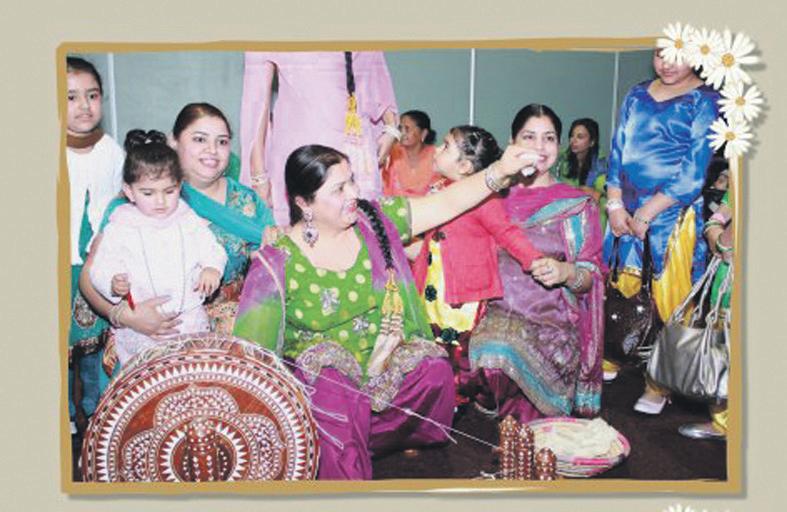
“Arts, crafts, music, poetry and dance are all packaged into a day-long affair, with presentations and competitions in a variety of categories,” the Melbourne-based Harpal Kaur says.
One contest involves the art of working the charkha. The organisation owns four specially created Punjabi style charkha flown in from India, which are brought out for each year’s event.
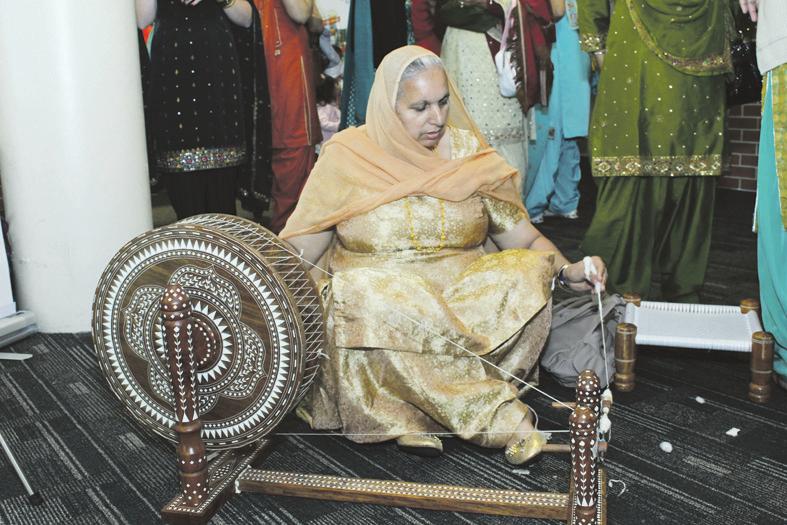
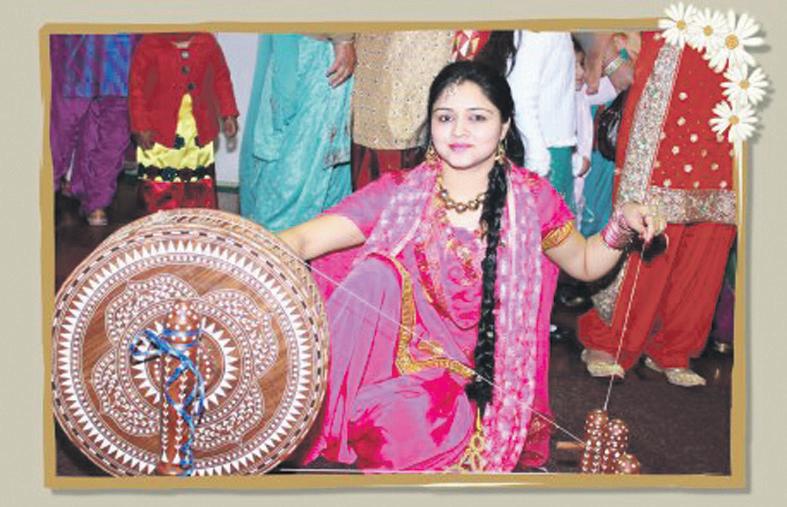

“We provide the participants with cotton punis (rolls of carded cotton) which they have to spin into thread,” explains Harpal.
Judges note the time taken to spin the yarn, as well as the quality of the final product; the finer the thread, the better the quality.
Harpal Kaur says, “Our attempt is really to reconnect to our roots by having the older members of our community demonstrate our traditional arts and craft, and to encourage the younger members to try their hand at the traditional charkha”.
A number of young women have given the charkha a go at the annual Teeyan festival. While it may not bear much significance to their daily lives, their grandmothers in their day, would probably have been judged by their prowess at their charkha abilities. For them, it was an important skill of ‘cultured living’, and girls of ‘good upbringing’ were expected to be adept at it.
Over the ages, the charkha pervaded many aspects of the cultural life of Punjabis.
Philosophers and poets from Bulle Shah to Guru Nanak used it as a metaphor for life’s exigencies.
This year’s Teeyan festival in Sydney is coming up shortly, and once again, Virinder Grewal’s cherished charkha will get a good workout.
Another charkha sits in state at the Powerhouse Museum in Sydney. A prized boxed charkha dating from the 1060s, it was donated by a fabric spinner of many years. Accompanying documentation claims a friend bought the item in Bombay for $4.00 and presented it to the donor as a gift. The donor approached the museum to see if it would acquire the artifact, and the gift was gladly received.
The Mahatma advocated the use of the charkha as a spiritual act, with the hope that its inherent attribute of fostering selfsufficiency would alleviate poverty and bring about much-needed social upliftment. And indeed, history proves that it did! This intended message of the charkha, to become self-reliant and to live more local and communal lives as a means of resisting the globalising power of corporations, is perhaps even more relevant today than it was in Gandhi’s time. It is hoped that the charkha will continue to inspire generations to come through its message of hope, humility and perseverance.
of Australia, given demonstrations in high schools and been invited to other countries as well”.
Jennifer was granted life membership at the HWSG-NSW a considerable time ago.
Formed in 1947, the Guild is a not-forprofit organisation aiming to bring together people from various backgrounds who practise hand-weaving, spinning and other associated crafts. Efforts are also put into fostering and encouraging these crafts by providing opportunities for instruction, discussion and exhibition of work. The Guild boasts a membership of hundreds of enthusiasts from all over the state who meet once a month at their current premises in Burwood.
Even though spinning on the wheel does not have any meditative effect on Jennifer, she says, “I am inspired by the simplicity of the treadling and the rhythm achieved. It is possible when on the wheel to talk to others, listen to music, have a conversation, ask questions and sort out current problems in one’s life”.

Jennifer believes there is enough interest amongst younger Australians to keep the art of spinning and weaving alive, but she admits it needs conviction. “While it is not a hard craft to master, it depends on the access to people interested in teaching, the quality of the teacher and the student’s own interest,” she states candidly.
Valerie Walker, treasurer at the Canberra Spinners and Weavers Inc (CSW) has been teaching the art of spinning and weaving for over 30 years. She is also proficient in dyeing, knitting, sewing, wool tapestries, patchwork and embroidery.
For Valerie, the interest in weaving runs in the family.
“Two of my great great grandfathers were weavers; they came to Australia from England in the early 1800s as convicts. Also, my mother was always knitting and I wanted to learn where the yarn came from,” she says.
H A n D S PI nn ERS A n D W EAVERS
Gu ILD o F n SW In C. 205 Burwood Rd Burwood nSW 2134
Ph: 02 9745 1603
www.nsweave.org.au
H A n DWEAVERS A n D S PI nn ERS
Gu ILD o F V ICTo RIA In C 655 nicholson Rd Carlton north Vic 3054
Ph: 03 9387 9222
www.vicnet.net.au/~handspin/
C A n BERRA S PI nn ERS A n D W EAVERS Majura oval, corner of Angas and Sherbrooke Streets, Ainslie, Canberra. Ph: 02 6247 1048 www.csw.org.au
Qu EE n SLA n D W EAVERS, S PI nn ER S A n D F IBRE A RTISTS Fibrecraft House, 12 Payne Street Auchenflower, Brisbane Ph: 07 3371 0009 www.qldspinners.org.au
H A n DSPI nn ERS A n D W EAVERS Gu ILD o F Sou TH Au STRALIA In C 196 South Road Mile End
Adelaide
South Australia 5031 Ph: 08 8352 4843 www.handspinweavesa
The spinning wheel or the ‘charkha’ carries a special reverence for Indians. It was the symbol of the Indian Independence movement and originally held pride of place on the national flag, before being replaced by the Ashoka wheel. But with the advancement in technology, the faithful spinning wheel is facing extinction. All is not lost though, as Indian Link discovered diehard aficionados striving to keep the art of spinning and weaving on the wheel, alive in Australia.
I caught up with two such devotees, Jennifer Hopper and Valerie Walker, both accomplished spinners and weavers doing their bit to keep the wheel turning.
Jennifer Marjorie Hopper lives in Diamond Beach on the east coast of NSW, and teaches spinning and weaving at the Hand Weavers and Spinners Guild of NSW (HWSG-NSW).
Jennifer developed an interest in spinning at school. “My father was involved in wool
production in the country,” she reveals. “At Hornsby Girls High School, I chose Textiles as one of my subjects for the Intermediate School Certificate. I enjoyed it and chose it for the Leaving Certificate. At the end of high school, I chose to train as a high school Textiles & Design teacher”.
She continues, “Both sides of my family included teachers for many years, so I was familiar with the role of teaching. I trained for two years at the Sydney Teachers College and was first employed by the NSW Department of Schools as a full time qualified high school Textiles teacher at Burwood Girls High School in Sydney, and later at Sydney Girls High School. While living in Sydney I attended evening TAFE courses at Brookvale with Eve Rashley, the ‘guru’ of spinning. Over time, I ran workshops teaching spinning and weaving, using wool. This expanded into the use of wool for felting, mainly because of the standard quality of Australian wool. I have taught many workshops in various parts
She learnt the craft in Canberra in 1974. Shedding light on the CSW Valerie reveals, “The CSW was formed in 1966 by a group of ladies doing this craft. Today there are 140 members and we meet every week. Member’s interests include felting, weaving, knitting, spinning, rag rugging, dyeing and tapestry weaving. Apart from workshops and group activities, CSW also organises an exhibition and sale of members work every year”.
Valerie adds, “The organisation created an International Scarf Exchange in 1994. A different Australian guild conducts this activity each year, and we have entrants from the USA and NZ this year. Membership of CSW grew to 180 about 4 years ago, but is now going down due to rising fees and members ageing”.
The actual part of sitting, spinning and seeing the fleece being turned into yarn is what inspires Valerie about spinning on the wheel.
“It is very calming, I enjoy seeing my finished bobbin of yarn,” she states.
Describing the basic steps and techniques of spinning Valerie explains, “It involves deciding what the fleece is good for,
preparing the fleece: combing, washing etc. Then spinning, once bobbins are spun they are plied and then maybe dyed, and finally used in knitting or weaving. One bobbin of spinning 100gms takes about three hoursyou need two bobbins to make one skein of yarn. There are different techniques like the long draw, short draw, the woollen method, worsted method, fine and thick. My personal favourite is the fine lace spinning”.
Asked what she sees as the future of spinning and weaving in Australia, Valarie was honest in voicing her opinion, “It will still be as now, a small amount of professional spinning, but mostly a hobby craft”. She also does not believe there is enough interest in spinning on the wheel amongst youngsters.
“We are always trying to recruit younger people - knitting has upsurged in the last four years, though. The CSW is always out demonstrating to schools, fairs and markets, promoting these skills. We hope other guilds around Australia are doing the same,” she says.
Both Valerie and Jennifer think more can be done to promote and preserve this craft. In the meantime, experts like them all over the country are trying to keep the wheel spinning by passing their skills on to the next generation of weavers.

When Dr Vijaysarathi Ramanathan conducted a series of focus groups and an online research study on the sexual health of Indian migrant men in Australia, he was pleased to discover some interesting findings.
“There exists very little scientific research information around what Indians think about sex, how well they practice safe sex and where they go for help,” explained Dr Vijay, revealing the basis of his study. According to the Australian Study of Health and Relationships, studying the sexuality of people from different cultural backgrounds would add significantly to the understanding of sex in Australia. This is more true for Indian migrants in Australia as there are about 300,000 of them, constituting 1.37% of the entire population of Australia.
The study was based on the findings of five focus groups, and an anonymous online survey which resulted in 280 responses, more than I expected,” admitted Dr Vijay. “The Indian community media and organisations [including Indian Link] were instrumental in reaching out to respondents to participate, which was very helpful,” he added.
Dr Vijay stated that perceptions about sexuality in Indians is contrary. There is one thought that people from the land that originated the Kamasutra must be well versed in its fundamentals,
another being that Indian society is generally conservative and traditional, and that anything of a sexual nature is taboo should not be discussed in public. However, very little data substantiates either of these theories. Dr Vijay’s findings shed light on migrant men’s sexual behaviour in a country with a more liberated approach to sex.
“The most important aspect of the study is that some of the findings confirmed, while others challenged, popularly held beliefs about Indian men’s sexual attitudes and behaviours,” stated Dr Vijay.
His PhD thesis Sexual Health of Indian Immigrant Men in Australia: an exploratory research on help-seeking attitudes aims to study the impacts of migration on attitudes toward human sexuality, sexual behaviours and sexual health of Indian men living in Australia.
Apart from generic information about the respondents, the anonymous online survey asked specific questions in relation

to masturbation, help seeking behaviour for sexual health, and identifying how acculturated the respondents had become living in Australia.
Regarding men seeking help for problems of a sexual nature, the findings were clear. “Most of the older respondents in the online survey preferred to seek help from a medical practitioner, while the younger ones preferred to go directly to a specialist,” revealed Dr Vijay. “Indian immigrants are by and large, highly educated and are more liberal in their attitude towards sex”.
“More than 80 per cent of men reported that they used condoms with sexual intercourse. One in two men surveyed agreed that it is difficult for them to discuss safe sex issues with their sexual partners and also said that they use alcoholic beverages prior to or during sexual intercourse,” said Dr Vijay. He particularly stated that alcohol prior to sexual activity was a problem if the person had no specific sexual partner or spouse, since it reduced inhibitions and could result in unprotected sex, further leading to a possibility of contracting sexually transmitted diseases (STD).
In relation to masturbation, a particularly sensitive topic that is traditionally associated with guilt and wrongdoing within the Indian psyche, Dr Vijay was surprised to note that most respondents reacted to this activity as a healthy and necessary one. “While a few respondents admitted that they had mixed feelings towards masturbation, a majority stated that they felt healthy and satisfied. This indicates a significant change in attitude among migrant men, and could well be the result of education and knowing the facts,” said Dr Vijay. Some respondents
admitted that they used erotic media such as pornographic DVDs, and rationalised that the activity served the purpose of educating them about sex. Overall, respondents masturbated to gain pleasure and to relax and relieve stress, according to the study.
On how acculturation has helped in changing the mindset of sexual behaviour, Dr Vijay said, “Largely the findings have indicated that overall values and thinking among the respondents were mainly Indian in nature, based on their cultural and traditional beliefs. There is some level of western influence, but Indian values are upheld”.

Dr Vijay admitted that the study was exploratory in nature, and related specifically to the masturbatory habits of Indian men. “However, the study has provided vital baseline data for future research, and sexual health practitioners can use this community-based data as a reference when dealing with sexual problems among their male Indian patients,” he said.
“Sex is not such a bad or negative thing to feel ashamed or stigmatised. It is normal, and more importantly, a fundamental aspect of being human. If you have a problem or are not sure whether you have a problem or not, talk to someone you feel safe and whom you can trust. It could be your partner, a medical doctor or a sex therapist. While it is our fundamental right to enjoy the pleasure of sex, it is equally important to be responsible by practising safer sex, treating the other person with respect and not combining sex and alcohol,” concluded Dr Vijay.
Dr Vijay arrived in Sydney
Alcohol prior to sexual activity was a problem if the person had no specific sexual partner or spouse, since it reduced inhibitions and could result in unprotected sex, further leading to a possibility of contracting sexually transmitted diseases (STD)
in 2005 to do his Masters in Medicine, specialising in sexually transmitted infections (STI) and HIV medicine. He became interested in sexual behaviours when he realised that to control STIs and HIV, which are a product of sexual behaviour, he would first need to understand these behaviours. On completing his thesis, Dr Vijay moved back to India and now consults at a clinic for sexual health in Chennai. He has been providing online consultations for the past five years, for those patients who are too shy to seek help from a doctor. In Sydney, the RPA and Parramatta Sexual Health clinic, as well as private sexual health care specialists, provide excellent service for those with sex-related problems. He is also the Founding Director of SSS Centre for Sexual Health (www.sexualhealthindia.org)
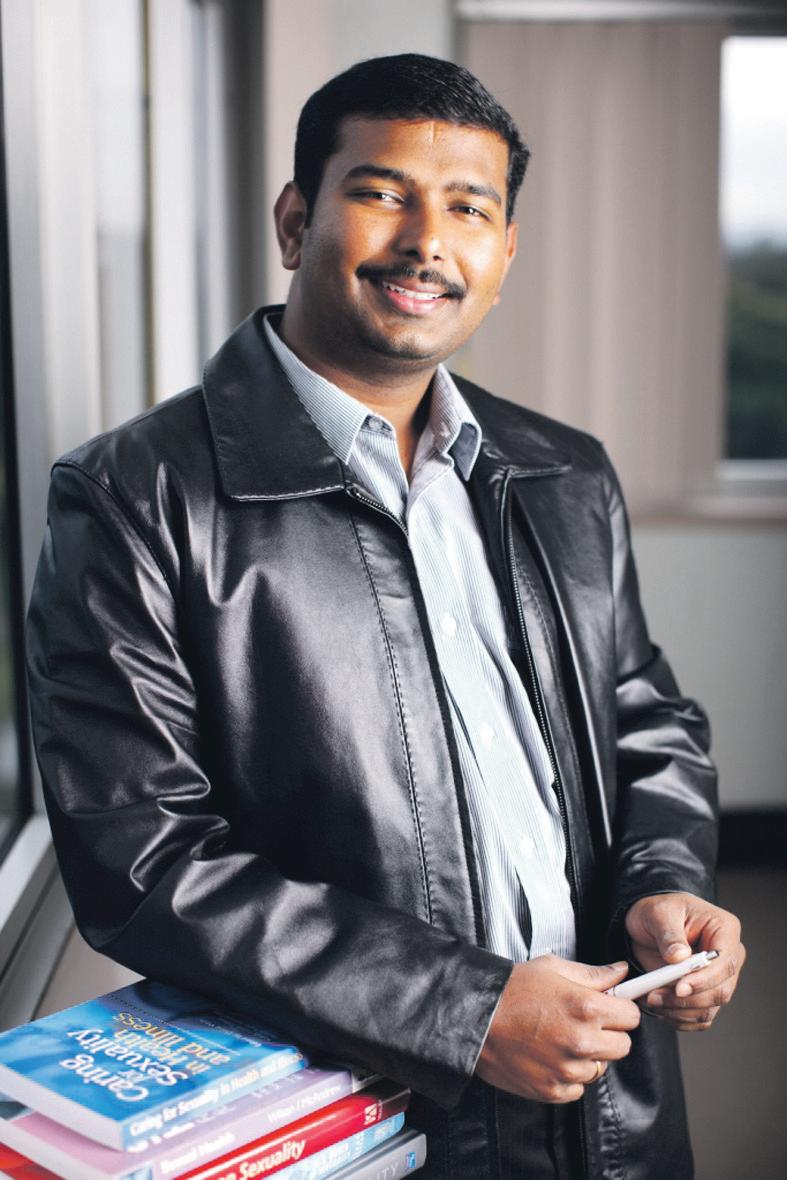






“My app has the potential to save lives as it is up to eight times more efficient than the current method of sirens which allows vehicles a reaction time of only 7 seconds to clear the way”



April 30 as a prototype, after the process of outlining the concept and writing the report to explain the hypothesis. After rigorous screening, 90 regional finalists were announced on June 12. This was followed by a face-to-face interview on the Google hangout. A second round of judging later, Viney was declared as one of the 15 finalists, and the only one from Australia to make it to this level.
competition because each one of the final 15 projects is on a unique topic in different fields of science. They vary greatly from each other, but each and every one of them has the potential to change the world”.
PART project.
The Google Science Fair provides a platform for budding inventors all around the world to showcase their innovative solutions, gain recognition on an international scale and realise their dreams of making a difference. The competition is divided into three age groups 13-14, 15-16 and 17-18. This year Viney will be amonge the 15 whiz kids who will head to Google’s headquarters in California on September 20, to present their projects and compete for the prize of a 10-day trip to the Galapagos Islands with National Geographic Expeditions, and $50,000 in scholarship funding.
Viney’s PART program (Police and Ambulance Regulating Traffic) is an android app designed to give an early warning to vehicles, of an approaching emergency rescue vehicle (ERV). The aim is to give traffic enough time to get out of the way of the ERV, which in turn, will enable the rescue personnel to arrive more quickly at the scene of an emergency. “My app has the potential to save lives as it is up to
could hear an ambulance trying to get through. The helplessness of the ERV drove Viney to explore ideas of improving the system and making it more efficient. He started working on his app in January, delving into extensive research and eventually devising the early warning system employing a web server. “I conducted numerous trials using two cell phones, one sending the warning and the other receiving it,” says Viney. After recording the response times and comparing the existing statistics, I was confident of the success of my program”.
Viney saw the ad for the Google Science Fair online and decided to enter. He says the concept of such a fair was very attractive. “It appealed to me as it presented a creative approach to science, plus the range of participants was from all over the world. Globally 8,000 teens from 120 countries took part and the process was all online,” he explains.
The PART program was entered into the Google Science Fair on
Viney hopes his PART program will be available in Australia in the next couple of years on car dashboards. “Using a web server, the cars will be able to receive early auditory warning of approaching ERVs within 800m via GPS technology,” he adds. “Also, the confusion associated with determining the direction of the ERV will be eliminated as the image and direction of the rescue vehicle will be displayed on Google maps”.
Viney has no plans of putting his app on the apps market as he realises people won’t be able to use their phones while driving. He believes the on car dashboards will be the ideal home for his invention.
But with so many amazing entries from the finalists, like green technology for degrading detergents, a flashlight powered by the human hand, and the method of using banana peel to produce bio plastic, does Viney consider any of them close competition? His response to this question displayed maturity beyond his years as Vinay replies, “I find it hard to name any entry that I perceive to be tough
Viney is a Year 9 student at Knox Grammar School in Sydney where he has received a great deal of support in developing his program. He wishes to thank his mentor for the help with GPS coding, his science teacher Ms De Ridder, Dean of Studies Ms Karen Yager, his parents and grandparents for their tireless support in helping him reach his goals.
Currently Viney is working on a wilderness survival app and hopes to compete in the Google Science Fair next year as well. In the meantime he has set his sights on taking out the grand prize in September. He is also hoping to win the Inspired Idea Award which will be judged by public voting.
Viney is looking forward to all the support he can get from Australians in general, and the Indian community in particular, as his PART program is the first-ever from Australia to reach this stage at the Google Science Fair.
Voting for the Inspired Idea Award starts on 1 August. You can help Viney succeed by casting your vote in his favour.
The link to vote is: www.googlesciencefair.com/ en/2013/inspired-idea-awardsummer
Help Viney win the Inspired India Award by visiting: www. googlesciencefair. com/en/2013/ inspired-idea-awardsummer
Viney Kumar
Samarpan is a Sanskrit word meaning ‘giving yourself completely’. As such, it is an apt title for an organisation dedicated to improving the quality of life of people with disability, of Indian and South Asian origin in NSW.
Samarpan Inc was launched as an organisation in late June. Secretary Rajni Chandran told Indian Link that nearly 200 people gathered at Epping Community Centre for the official ceremony.
Amongst the invitees were politicians, cultural organisations, high profile members of society, service providers, members and their families. The attendees were treated to audio-video presentations describing the services, goals and aspirations of Samarpan. There were talks by health care professionals on issues of intellectual disability, the importance of support networks for persons with disability, and multicultural community support. Impressive performances and presentations by persons with disability won everyone’s heart.
Sidharth, Rajni’s 25-year-old son with autism prepared a presentation based on a poem he composed. Also featured were shots of his swimming accomplishments and camp trip. Another commendable presentation was that of Raishav on netball, along with songs by Preshant and Arun.
There are 3,000 persons with severe disabilities from South Asian backgrounds in Sydney alone, requiring ongoing care. Rajni pointed out that informally the organisation has been operating for many years. It was started by
two mothers in Sydney in 2002, as a support group for families of children with disability. By 2008, a small group had formed, and in June 2012 Samarpan was registered as an association. The year that followed allowed board members to work out the roles and goals of the organisation to best address the needs of South Asian families with People With Disabilities (PWD), before officially launching this year.
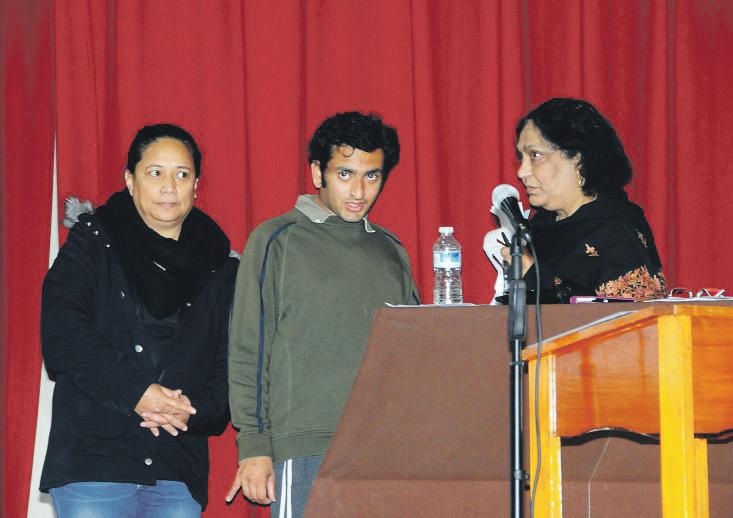
The aim of Samarpan is to provide opportunities for people with disability of South Asian origin to socialise and form long-term relationships amongst themselves. Samarpan especially aims to help children facing developmental disability that starts at an early age, and continues through life. The organisation is trying to build a support network for families of such children and to develop culturally appropriate services to suit their needs.
One of the most important services planned by Samarpan is the development of an accommodation model that will meet the long-term care needs of the disabled adult child of a Samarpan family. The project has been named ‘Aashray’.
Further explaining the project, Rajni said, “The accommodation that we envisage will cater to the needs of individuals who need round the clock care or supervision, who have an established relationship, and who are of South Asian background. Ashray as a project is in its budding stage. We are looking at setting up a blueprint for the type of accommodation we think will meet the needs of our clients. The blueprint will then be presented to various agencies and individuals
to enlist their support. We hope to soon provide people with disability of South Asian culture a purposebuilt, safe and permanent place to live with their families, maintain links with the community, stay connected with their culture, and have employment, leisure and other opportunities”.
Samarpan also runs ‘Aadhaar,’ a support group for families which meets once a month for organised activities like bowling and picnics. The idea is to let families enjoy time together with their children with disabilities, in order to strengthen family ties. Aadhaar celebrates carers week every year, with the next meet on July 28 at AMF Bowling in Castle Hill, and anyone of South Asian background with a PWD is welcome to attend.

‘Mitralay’, another Samarpan initiative is a social club for people with disabilities which meets once a month. Field games, excursions and other activities are organised to help members socialise. Mitralay is supported by the Hornsby Council. Samarpan’s advocacy program ‘Aagrah’ endeavours to represent its members in community forums, submissions to government and providing information on disability funding, services and benefits available.
At the same time, ‘Udyog’ is the program run by Samarpan to help people with disabilities find meaningful work to raise their self-esteem and help them contribute to society in a positive manner.
Samarpan Inc is an independent organisation which relies on various funding sources to run its programs.

“We hope private donors,
government funding and community philanthropists will help make our goals a reality, and judging by the response to the inaugural ceremony, there is tremendous goodwill in the South Asian community,” Rajni said optimistically.
Samarpan is planning an information session on diet and nutrition for mothers and carers of PWD towards the end of the year. The meeting will include information and help on modifying common South Asian recipes to make them wholesome for people with disability. The date of the
session is yet to be decided, but next on Samarpan’s calendar is an information session on the National Disability Insurance Scheme/ Disability Care on August 31 in North Parramatta. Barbel Winter, Executive Director of Futures Upfront will help South Asian families of persons with disabilities have a better understanding of the new NDIS which is now called Disability Care Australia.
Rajni Chandran can be contacted on 0432 798 938 or call Caroline on 0402 596 813 for registration of attendance.









For the upcoming Indian Independence Day, how are you bringing an Australian touch to your celebrations?
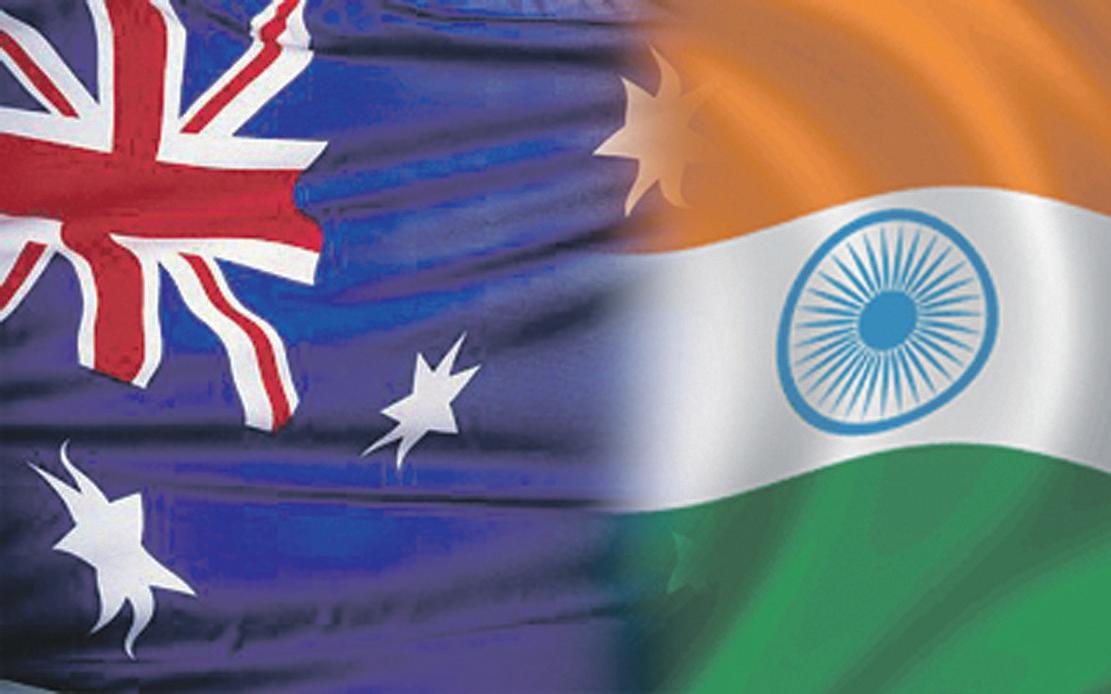

Alex: Down at the beach with my Indian friends :)
Jesse: We’re going out to Indian that night :) can’t wait!
Danielle: By celebrating in a pub
Irena: Bollywood and beer!
Linlee: Bollywood rules over at my house that night
Tim: I’ll be having a farewell party with my friends (in Australia!) before I leave for the subcontinent for 3 months!!
Steve: BBQ butter chicken Indian/ Aussie style and lots of dancing
Sheryl: My mum in-law and her twin sister were born at midnight on the eve of I-Day! We’ll be celebrating their 66th with a Kannadiga food fest ;). And beer, for the Aussie touch!
Miss F: I’ll be having a feast with friends and family that combine traditional Aussie and Indian meals together, like pies with curries inside them and pavlova cake with rasgulla on top! Yum - I can’t wait.
Luke: I think a few Aussie beers will be in order that day!
Antoinette: I met my husband at a Bollywood party around this time 5 years ago, so I’ll cook him our favourite goat curry and we’ll watch an Aishwarya Rai movie...win win!!
Rajni: Movie marathon. Featuring Hindi movies filmed in Australia!
Lena: I’m thinking of having the celebrations down at the beach in proper Aussie style, with all of my Indian friends in their best Indian flag coloured outfits!
Ben: Going out to a nice dinner off Indian food... My favourite
Sandip: Distribute sweets among Aussie friends and tell them a few stories about how India achieved independence
Suryanarayana: I am going to a Dinner of the Australia India Travel and Tourism Council to mark the 66th Anniversary. This will herald promoting closer links between my country of birth and the country of my residence.
Poornima: Attending the ceremony at Canberra and then out with friends... hopefully the sun, the sea and the sand :)
Mythili: I plan to make tri-colour jelly using colours of the Indian Flag and get my grandkids to enjoy it
Ritam: Watching the Ashes! Surely the best of both cultures!
Minnie: Bollywood dancing in my best trackies and flannelette shirt!
Minal: I am not in Australia currently but I plan to behave like every good Aussie does on a public holiday. Take the next day off and have a loooong weekend with my partner - veg at home or go out of town for a short holiday. And of course, indulge with some beer... :).
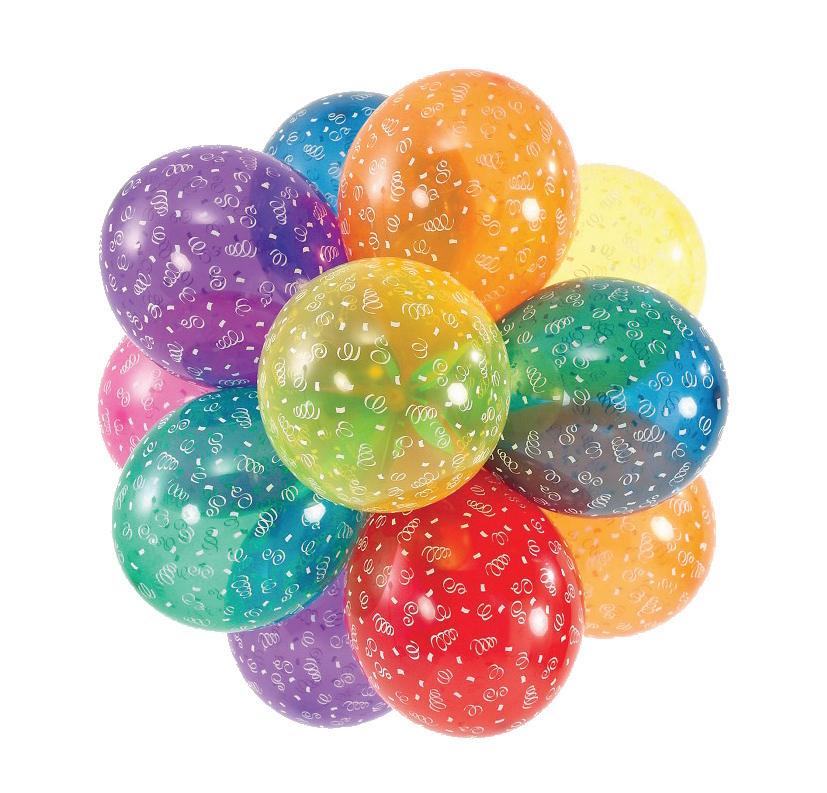
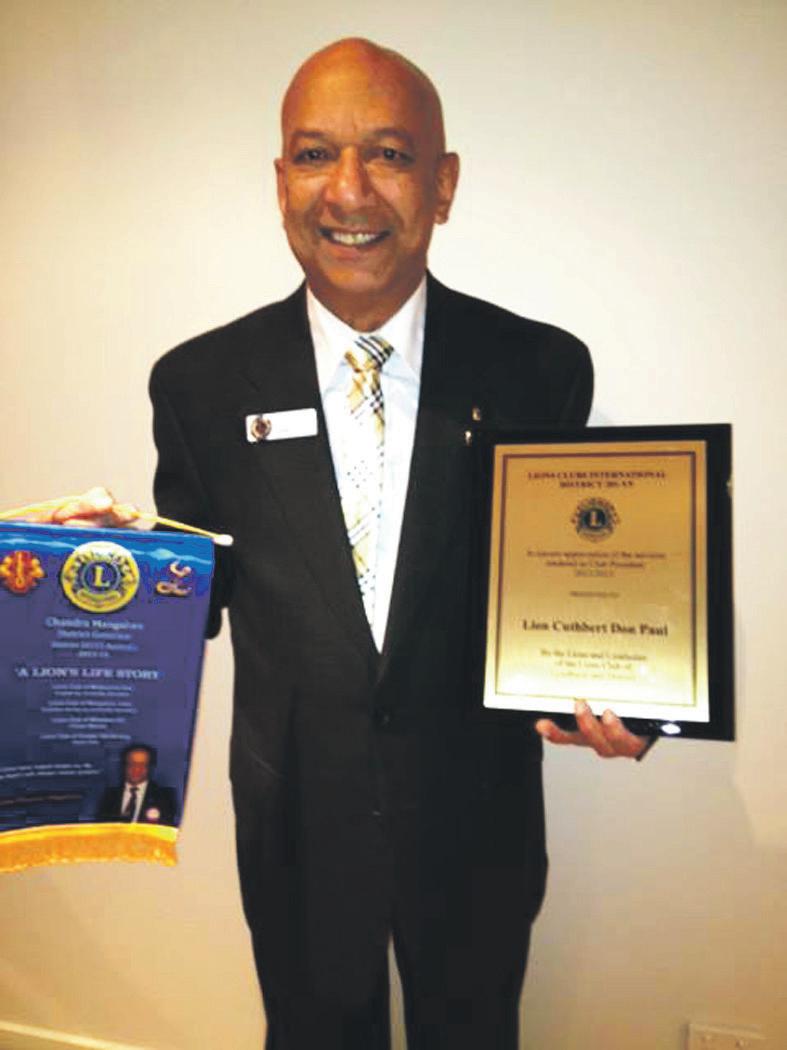
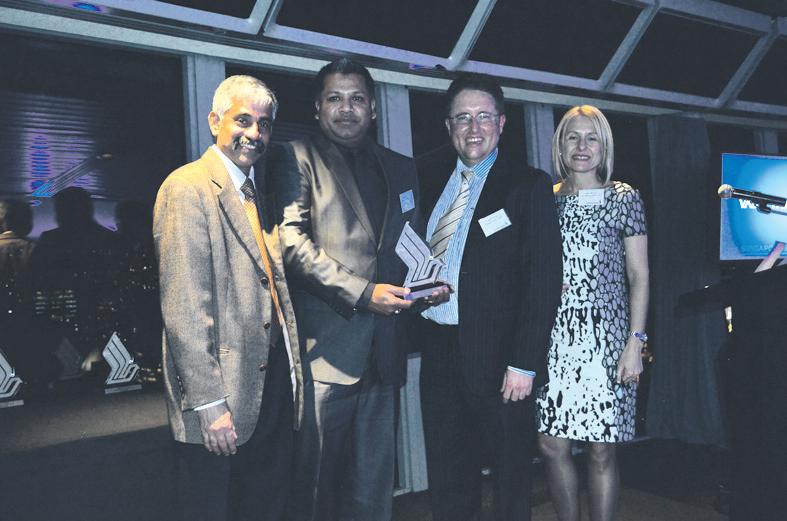


Dhruv celebrating his birthday!

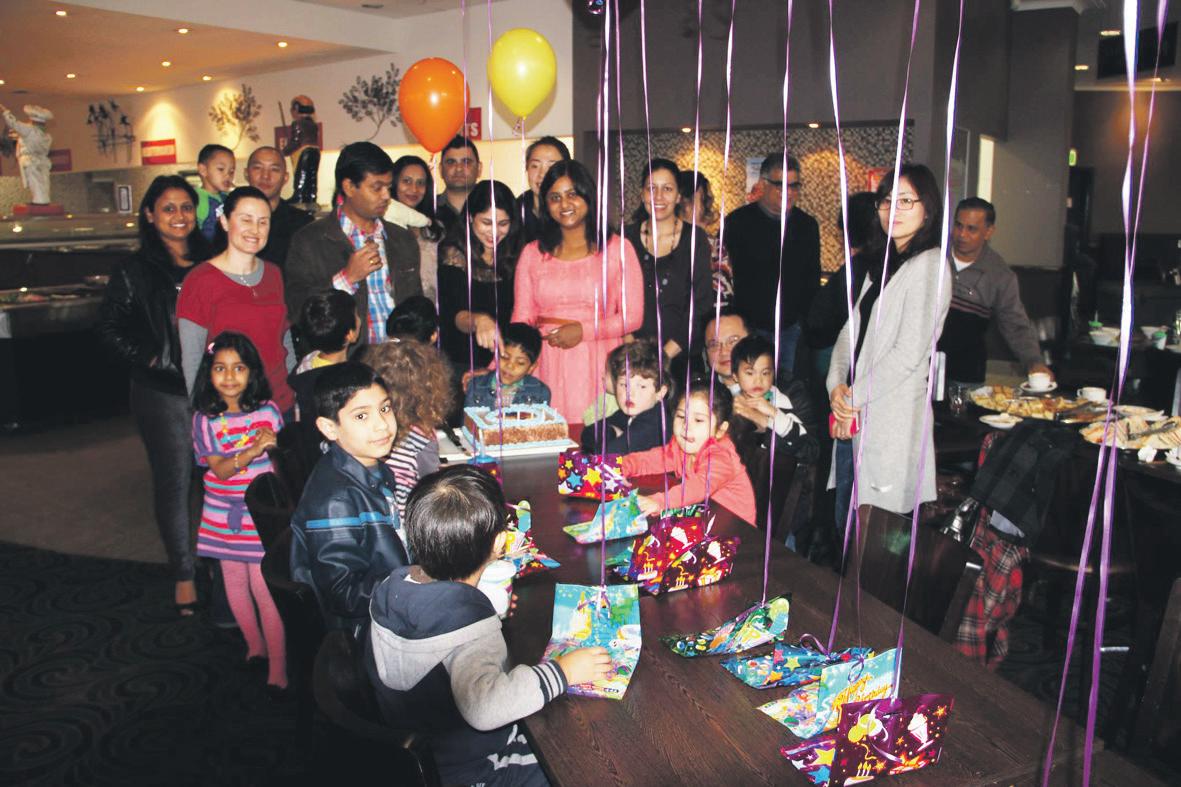




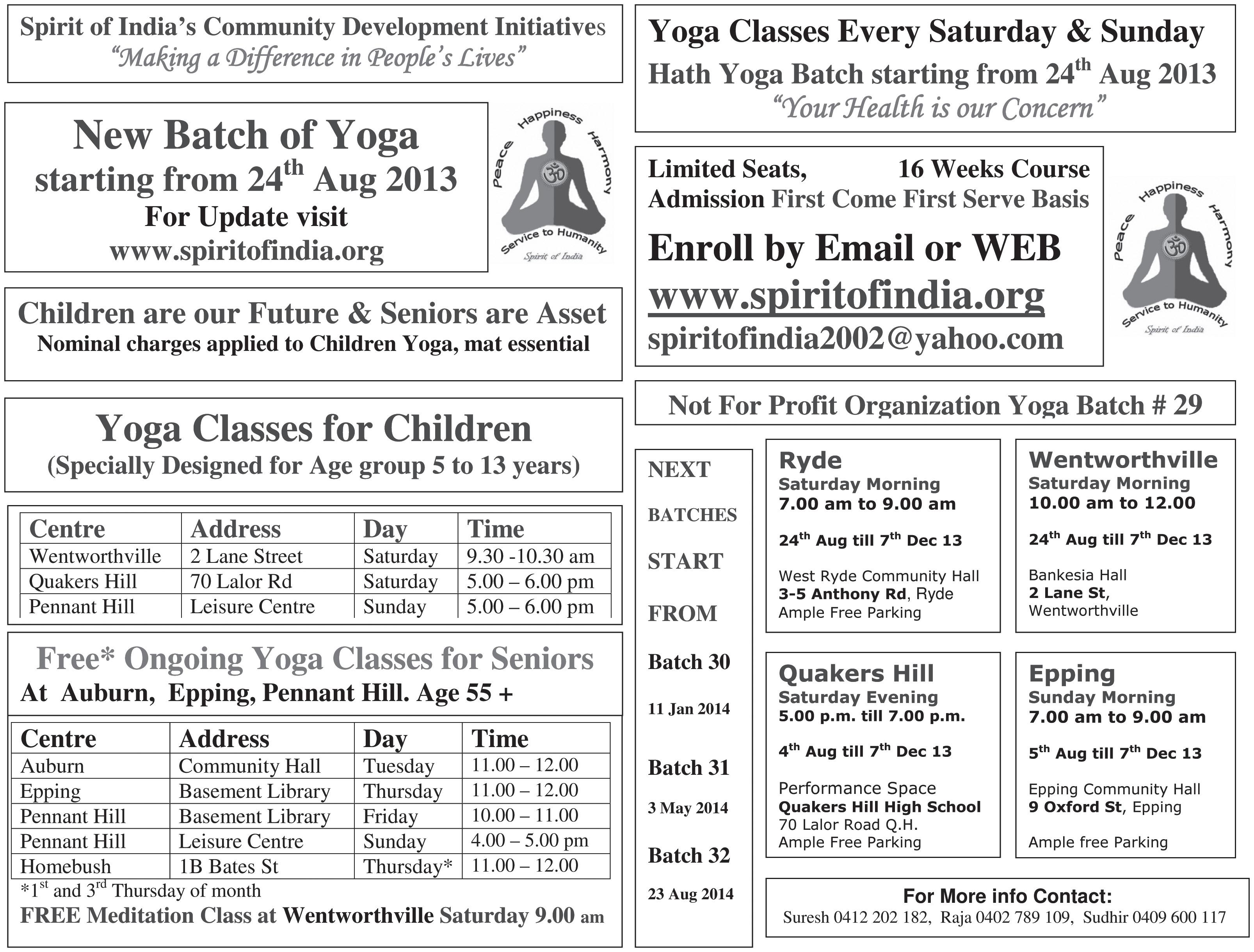



Muslims offer prayers on Juma-tul-wida, or the last Friday of Ramadan, at Jama Masjid in New Delhi, Aug. 2, 2013

As anger over the killings of Indian soldiers by Pakistani troops reverberated in parliament in New Delhi recently, experts said the attempts to create tension with the Jalalabad suicide attack and the Poonch killings were a worrisome trend and that despite talk of friendship, India should harbour no illusions about Pakistan.
Five soldiers were killed when men in Pakistani military uniform ambushed an army patrol at Chakan-da-Bagh sector of the Line of Control (LoC), which divides Kashmir between India and Pakistan early on Aug 6.
While former foreign secretary Kanwal Sibal said the Jalalabad attack and the Poonch killings showed that the combination of Pakistani military, the ISI and jehadi groups had become active again, former deputy national security advisor Leela K. Ponappa said India should calibrate its engagement with Islamabad in order to give the message that the attacks were unacceptable.
Former Indian consul general in Karachi Rajiv Dogra suggested that India put a pause to the dialogue process that is set to be resumed.
Veteran journalist Kuldip Nayar said bilateral relations were becoming better, but the killings would “definitely jeopardise talks which were to start”.
“This process will stop again,” said the former MP. “The opposition parties will get a handle. Everybody is looking towards elections. It might be exploited to the extent it should not be...The ruling party is going to be afraid of what happens now,” said Nayar, an ardent proponent of good IndiaPakistan good ties.
Sibal said the positive atmosphere sought to be created because of the feeling that Prime Minister Nawaz Sharif could open up a new chapter in bilateral ties have received a jolt.
The former foreign secretary said that India should be “genuinely concerned about
what seems to be emerging as attempts to create tensions between the two countries”.
He said the recent Jalalabad suicide attack near the Indian mission in which nine Afghans were killed and the killing in Poonch “suggests that the Pakistani military, ISI (Inter-Services Intelligence) and jihadi groups combine has become active. This is consistent with Nawaz Sharif’s design to project Jammu and Kashmir on the international stage and the longstanding context of his party’s link with jehandi groups and the lack of mutual trust between him and the military.
These are worrisome trends, he said, and added that Sharif has been “too slow” in taking any concrete gestures such as granting Most Favoured Nation status to India or in expediting the trial of the accused in the 2008 Mumbai attack in order to improve relations.
“What we have been seeing is negative trends,” Sibal added.
Ponappa said that people “tend to forget realities” and “this is the kind of behaviour you have to expect from Pakistan”.
The former deputy national security advisor said India should keep Pakistan’s behaviour in mind and calibrate its engagement “in a way that it does not send mixed signals – that we can’t accept this kind of thing”.
She said she had “always maintained that Pakistan will try to make you move on positive things - because they are seeking legitimisation with their own people and the international community, while carrying on this kind of activity. Given the realities of Pakistan, you cannot expect anything better”.
Ponappa said Sharif’s saying he wanted normalisation of ties with India was nothing new. “(Zulfikar Ali) Bhutto said it, Benazir (Bhutto) said it, nothing has changed. Everybody says they want good relations but you have to see the reality on the ground”.
She said she hated to sound pessimistic but “unfortunately, dealing with Pakistan has to be based on not what you want but
what you are dealing with”.
“You have to recognise the reality of what you are dealing with, then you will never have illusions about it,” Ponappa added.
Dogra said that India must stop the dialogue process. “The first step should be to put a pause button on the (secretary level) talks and depending on Pakistan’s delivery in terms of apology and correction, we can consider the fate of the talks at the PM level,” added Dogra.
A three-layered betting syndicate was involved in spot-fixing during the sixth edition of the Indian Premier League (IPL6) with the prime movers being Karachibased underworld don Dawood Ibrahim and his lieutenant Chhota Shakeel, three months of painstaking investigations by Delhi Police have revealed.
Apart from Dawood, Shakeel and Javed Chutani, also based overseas, the first layer included Indian bookies like Ashwani Aggarwal alias Tinku Mandi, Ramesh Vyas, Feroze, Jitendra Jain and Chandresh Jain alias Jupiter, according to a recently obtained Delhi Police charge-sheet.
The next layer comprised Indian bookies like Sunil Bhatia, Chandresh Patel and Manan Bhatt.
“We found fixers and their associates, like ex-players Manish Guddewar, Amit Kumar Singh and Baburao Yadav, were facilitating the contacts of fixers with the players, who executed the conspiracy on the playing field,” the charge-sheet said of the third layer.
Three IPL players - S. Sreesanth, Ankeet Chavan and Ajeet Chandila - were arrested on spot-fixing charges May 16. Subsequently, 27 bookies were nabbed from the various parts of India in May, June and July, and one Aug 4.
Delhi Police got the initial lead in the first week of May when a phone call between a Dubai number and a Pakistani number was traced in India.
The charge-sheet says the interception of the phone calls between numbers in foreign countries was normally not possible, but in this case, due to traffic congestion, Delhi Police managed to trace a call between a Dubai number used by Chutani and a Pakistani number used by Dawood with the help of the International Telecommunication Union.
This revealed that Chutani had been in touch with Tinku Mandi in India. Chutani himself is not wanted in India and therefore any communication made by him with an Indian entity would normally have remained beyond suspicion and would be treated as a normal conversation. Which means that Chutani was freely speaking to Tinku Mandi.
While on one hand, Chutani conspired with Tinku Mandi, who was looking after the betting syndicate in northern India, on the other, he conspired with Ramesh Vyas, who looked after the betting syndicate in southern India.
Delhi Police had July 30 filed its chargesheet in a MCOCA (Maharashtra Control of Organized Crime Act) court in the national capital.
Raghuram Rajan appointed RBI Governor
Raghuram Govind Rajan, chief economic advisor in the finance ministry, will be the next governor of the Reserve Bank of India (RBI), the government announced recently in New Delhi.
At 50, Rajan will also be among the youngest to occupy the high office at Mint Street in Mumbai, where he takes over from incumbent Duvvuri Subbarao on Sep 5.
“Prime Minister (Manmohan Singh) has approved the appointment of Raghuram Rajan as the Governor of Reserve Bank of India (RBI) for a term of three years,” finance ministry said in a statement.
Before joining the Indian government, Rajan had served as chief economist at the International Monetary Fund (IMF) and professor at the University of Chicago. He joined as advisor in the finance ministry last year in August.
His appointment comes at a time when the Indian economy is passing through rough weather and the government and the central bank are not particularly seen to be in sync on ways to handle the situation.
The RBI is struggling to control the slide in the value of the rupee that hit a record low of 61.86 against a dollar on Aug 6.
“These are challenging times for the Indian economy, though no one can have any doubt about the country’s promise,” he said after being named governor, adding that the government and the central bank were working together on this.
“The Reserve Bank is a great institution with a tradition of integrity, independence and professionalism,” he said, honoured by the new responsibilities rested on him.
The RBI has also been under pressure from the industry and a section of the government to cut policy rates to revive growth. Rajan has also been advocating a rate cut.
In the first quarter review of the monetary policy announced July 30, the central bank has left key policy rates unchanged and lowered the growth forecast for the current financial year to 5.5% from its earlier projection of 5.7%.
Sikhs in America marked the first anniversary of the Oak Creek tragedy when a gunman attacked a gurdwara in Wisconsin killing six worshippers, with a day of community service and remembrance.
Prayer meetings were held across the US on August 5 to honour those who lost their lives on the same date last year - Paramjit Kaur Saini, Sita Singh, Ranjit Singh, Prakash Singh, Suvegh Singh Khattra, and Satwant Singh Kaleka - and pray for the full recovery of those critically injured.
“We are proud that Sikh Americans nationwide have responded to this tragedy with open hearts and heads held high, consistent with the Sikh belief in Chardi Kala (eternal optimism),” Sikh Coalition, an umbrella organisation of the community said in a statement.
Sikh communities nationwide and California’s SEVA organisation partnered with the Sikh Coalition on a National Day of Seva (Selfless Service) to pay tribute to the Oak Creek community, it said.
Detroit Sikhs partnered with Kids Against Hunger to package 20,000 meals for needy families and Houston Sikhs volunteered at a local library and partnered with Urban Harvest to clean a garden at a local elementary school.
In New York City, Sikhs cleaned Morningside Park while Sikhs in California’s Central Valley and Bay Area packaged and served food to the homeless.
Washington area Sikhs marked the anniversary of Oak Creek tragedy with prayers and reflection at Guru Gobind Singh Foundation, Rockville Sikh Centre too.
“Since the Sep 11 attacks, too many Sikh Americans have been wrongfully subjected to hate crimes and discrimination,” said Ami Bera, the lone Indian American member of the US House of Representatives vowing to keep working closely with the community for protecting domestic civil rights.
Other members of the Congressional Asian Pacific American Caucus (CAPAC) also pledged to “work to ensure that discrimination and hateful acts based on intolerance do not have a place in our nation”.
South Asian Americans Leading Together (SAALT), leading a network of 41 South Asia organisations, started a blog series “to place the Oak Creek tragedy in a broader history and context of racial and religious injustice in our country”.
The Council on American-Islamic Relations (CAIR) issued a statement saying American Muslims “stand with their Sikh brothers and sisters” after the Oak Creek tragedy.
Finally, the brain drain appears to be reversing. Better research opportunities in India, passion to do something for their native country and family obligations have started to lure back Indian scientists working abroad. Around 500 scientists have come back in the last seven years - and only six have gone back.
Going by the figures maintained by the union science and technology ministry, the majority of the reverse brain drain has happened from the US, Germany and
Britain. Recently, scientists have also started coming from South Korea and Japan.
“About 500 scientists have come back from abroad and are working in various institutions across the country. Of these only six have gone back for various reasons,” T. Ramasami, Secretary, Department of Science and Technology, said recently in New Delhi.
Credit must also be given to the several schemes run by the Indian government to encourage scientists and engineers of Indian origin from all over the world to take up scientific research positions in India, especially those scientists who want to return to India from abroad.
The Ramanujan Fellowship, Innovation in Science Pursuit for Inspired Research (INSPIRE) Programme and the Ramalingaswamy Fellowship are among those that provide a platform to scientists willing to return and work in India.
An internal analysis by the ministry of the reasons for the reverse brain drain revealed that tough competition abroad, better research opportunities in India, love of work for the motherland and aiming to contribute to science were some of the major factors that drew Indian scientists to their homeland.
Family obligations was another reason that attracted them back home.
Sheeba Vasu, who was doing her postdoctoral research at the University of Massachusetts Medical School, said she came back as she always wanted to work in India.
“I wanted to come back and start my work in India after getting trained in the US. Moreover, it is not easy to get a job as a faculty in any of the universities in the US as there is a tough competition,” Vasu, who is a Ramanujan Fellow since 2008, said. She was in the US for six years.
Vasu, who is now doing her research in the Evolutionary and Organismal Biology Unit of Bangalore’s Jawaharlal Nehru Centre for Advanced Scientific Research, says there are more research opportunities in Indian universities and elite institutions like the Indian Institutes of Technology, Indian Institute of Science (IISc), Bangalore, and Indian Institutes of Science Education and Research (IISERs),
among others.
Echoing similar views, another Ramanujan fellow, Vidya T.N.C., said competition is much higher abroad as compared to India, where there is a shortage of experts and qualified faculties.
“There are issues with research facilities in India. Here, we do not have many advanced research laboratories. We also face a funds crunch. But overall it’s a good platform that gives you a kind of startup when you return to India,” said Vidya, who worked at Columbia University.
Some scientists feel conducting research in India is more relaxed while there is a rat race in the advanced countries.
“I think academic work outside India is stressful and it is a bit more relaxed in India and I am saying that in a positive way,” Ashwin Srinivasan, a professor at Delhi’s Indraprastha Institute of Information Technology, said.
Srinivasan, who had worked at Oxford University, said there is an economic crunch in the academic setup abroad and it is tough to get research grants.

“The research setup is better in India and the opportunity to work in science in India is not as bad as it being said. Yes, there are things like most of the big science ideas are explored in institutes abroad and lack of options to do inter-disciplinary research that hurts,” said Srinivasan, who has been abroad for 15 years and took a four-fold cut in salary when he returned to India.
The figures show that the majority of researchers prefer to work in Karnataka, Maharashtra, Andhra Pradesh and West Bengal. The reason is that these states have the largest number of good research institutions.
“Through various schemes, we provide a platform under which scientists in the age-group of 30-45 years can work in any of the scientific institutions and universities in India and would be eligible for receiving regular research grants and a monthly remuneration,” he said.
Srinivasan, who is a US citizen, suggests some changes - for instance, schemes should be flexible to ensure people of Indian origin who are not Indian citizens can also take up jobs at central government universities and institutions.
“Some more initiatives are needed to make India a very attractive destination for scientists wanting to work for their motherland,” he said.
ASI unearths a slice of Harappa in north Rajasthan
Artefacts dating to the Harappan era have been excavated in Karanpura of Hanumangarh district in Rajasthan, the first time remains of the Indus Valley Civilisation have been found in this part.
“The excavation has brought to light house complexes built of mud bricks of both Early (3300-2600 Before Common Era) and Mature (2600-1900 BCE) Harappan periods. Even though scattered remains and fragments of baked bricks are available, it was not found in any building,” said Archaeological Survey of India superintending archaeologist V.S. Prabhakar in a lecture at the India International Centre in New Delhi recently.
“The presence of bichrome ware consisting of red ware, decorated with black and white-coloured painted motifs, is also noticed from the Early Harappan period, a few of which continues during the Mature Harappan period,” he added.
“Presence of rhinoceros bones point to the marshy environment the Harappans were accustomed to,” said Prabhakar.
Harappan pottery along with terracotta bangles, grinding stone fragments, beads of agate and an animal terracotta figurine were excavated. Numerous copper artefacts reveal trade ties people here had with other civilisations. Apart from motifs like circles, pipal leaves on various items, graffiti on pottery and artefacts like the spindle whorls are distinguished features.
The Indus Valley civilisation is one of the earliest urban civilisations and also known as the Harappan civilisation.
Karanpura is located on the right bank of Drishadvati river, now Chautang, in the upper reaches and is located between Siswal, Haryana (upstream) and Sothi, Rajasthan (downstream). The river is dried up now.
The archaeological remains at Karanpura were first discovered in 2010 and the excavation branch started work in December 2012. The work will end soon. IANS

It is remarkable how we are influenced by the fashion and style of the country we live in, and how easily we adapt this into our own personal style over time. However, our cultural heritage is timeless and so very special to us that we look forward to celebrating festivals and occasions, and love sporting traditional outfits to these.
Typically, weekdays probably see you in pencil skirts and pantsuits busy at work, or tunics and leggings paired with boots, rushing to finish numerous errands, before you pick up the kids from school.
Sometimes, I’m sure that like me, you wait eagerly for that weekend soiree to dress up in a gorgeous suit or swish around in an exquisite sari! Don’t we all love an occasion to flaunt our splendid Indian wardrobe and jewellery to match!
Ever wondered how you’d successfully sport an IndoAussie fusion look that is effortlessly chic? Come a day like Independence Day, it’s your perfect chance to try a new look!
Contemporary Australian fashion is all about looking and feeling stylish in a relaxed and smart-casual manner. Traditionally inspired by the Far East more so than Europe, Australian fashion has always included prints and flowing forms in their outfits. And that’s what makes the fusion challenge much easier!
The key to a great fusion outfit is to blend the Indian piece seamlessly; trying too hard or adding too many pieces will only ruin the look. So how do you do it? Here are four easy pointers to get the look right.
Indian prints are so distinct and charming that you would create an instant winner with delicate paisley printed pants or a bandhani (tie and dye) skirt. The rest of your outfit can then be fairly plain with a neutral coloured flowing top, paired with a smart tote bag. One could safely say that printed kurtis paired with jeans is almost the uniform for contemporary urban


Indian women; this one’s a nobrainer fusion look for sure! Quirk it up by pairing the kurti top with coordinated coloured denim.

When we think of Independence Day, the colours that come to mind straight away are saffron, white and green. Can you actually team these up to create a look dedicated to patriotism? Ok, it’s not as outrageous as it sounds. One way to do it elegantly is to just wear a white or beige shirt with jeans, and throw in a subdued green scarf and a lovely banjara mirror-work orange bag. Wear your fancy wedges or sandals and finish this look in style with a pretty set of silver and oxidised metal bangles.
3.

That brings us to the next and perhaps one of the most important elements of an Indian look, jewellery. Statement necklaces are all the rage right now and you’ll be surprised how easy these are to work into a shirt ‘n’ jeans look, or even with a pretty evening dress. Indian jewellery is so versatile be it kundan, delicate gold and silver, or pearls. You can instantly glam up an outfit with pretty stone earrings, intricate bracelets or tantalising anklets.
4. Accessories
If you are not able to identify your style in any of the above, I’m sure this one will have you nodding your head and smiling, because it can’t get simpler than this. Yet I promise these accessories can’t be underestimated at all! I’m talking about scarves with Indian prints and colours; just adding this one piece to an outfit will instantly make your fusion look complete, irrespective of whether it’s silk, wool or chiffon. The other easy accessory is an exclusive Indian clutch with embellishments, perfect arm candy, you will agree! And last but not least is footwear. Attractive Indian sandals, mojris or kolhapuri chappals all work magic in an Indian fusion look.
So go out there with confidence, sporting a fusion outfit to your Independence Day gathering and leave your friends spellbound by your super-stylish look!
You can instantly glam up an outfit with pretty stone earrings, intricate bracelets or tantalising anklets
Contemporary Australian fashion is all about looking and feeling stylish in a relaxed and smart-casual manner


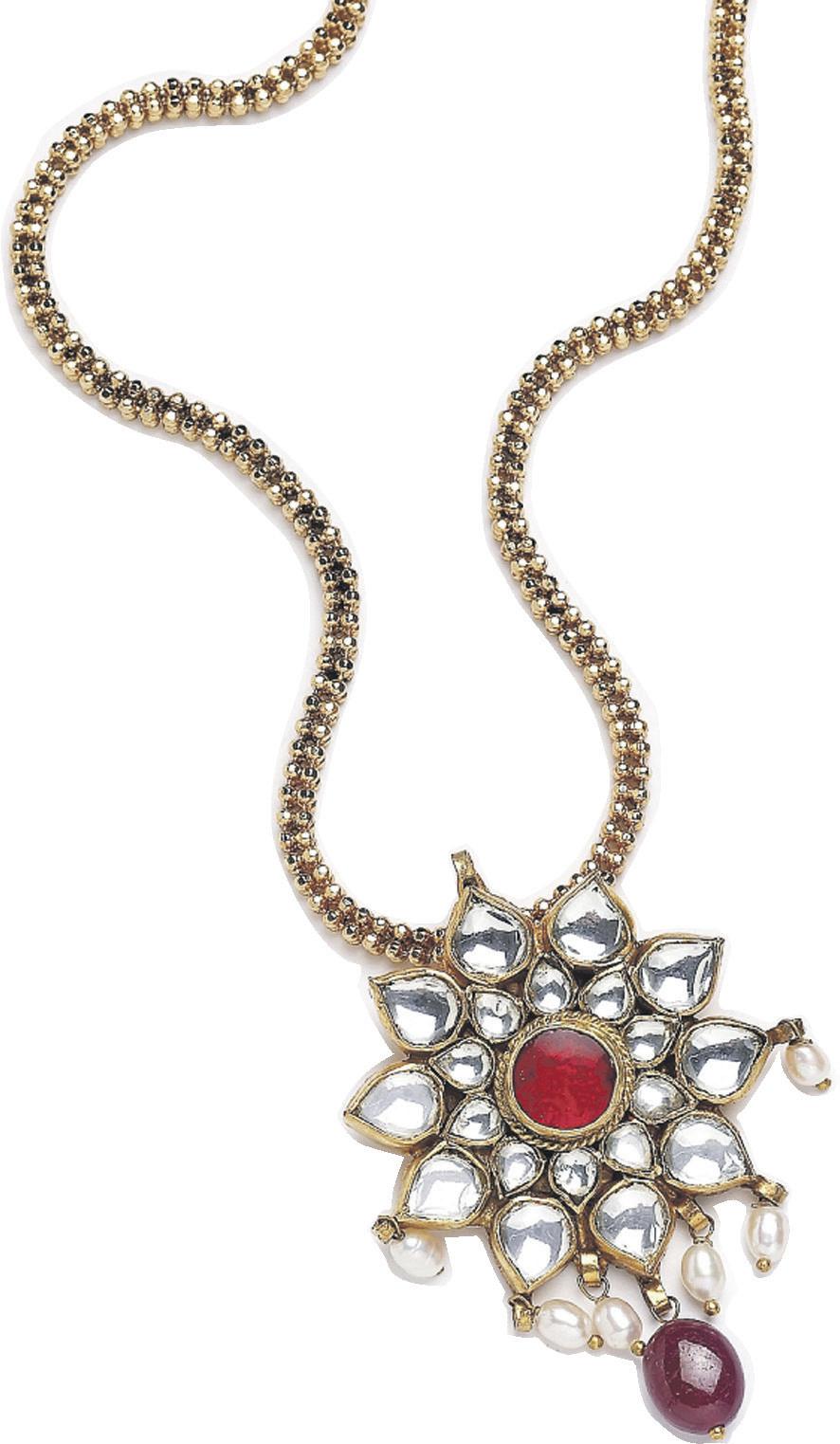

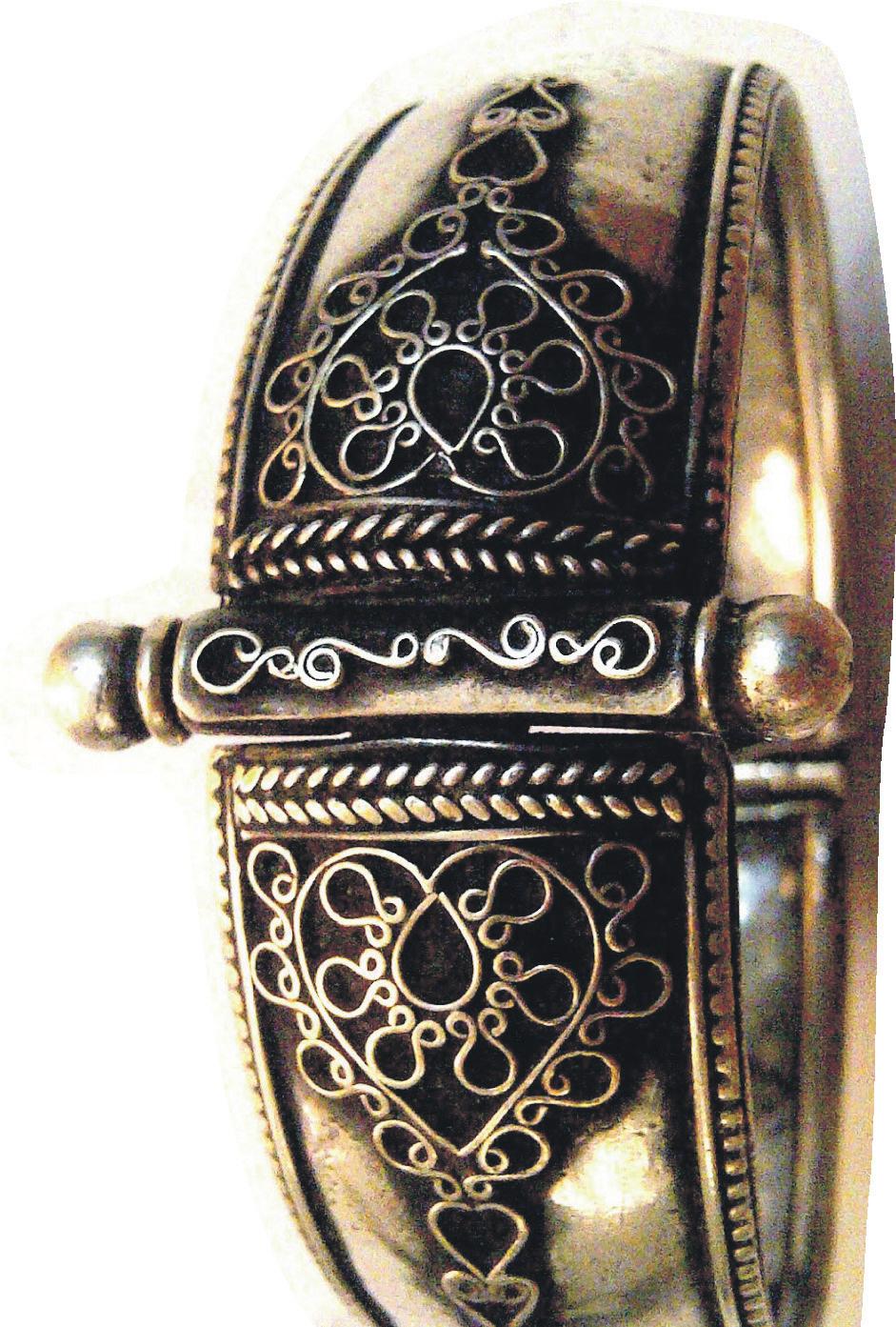

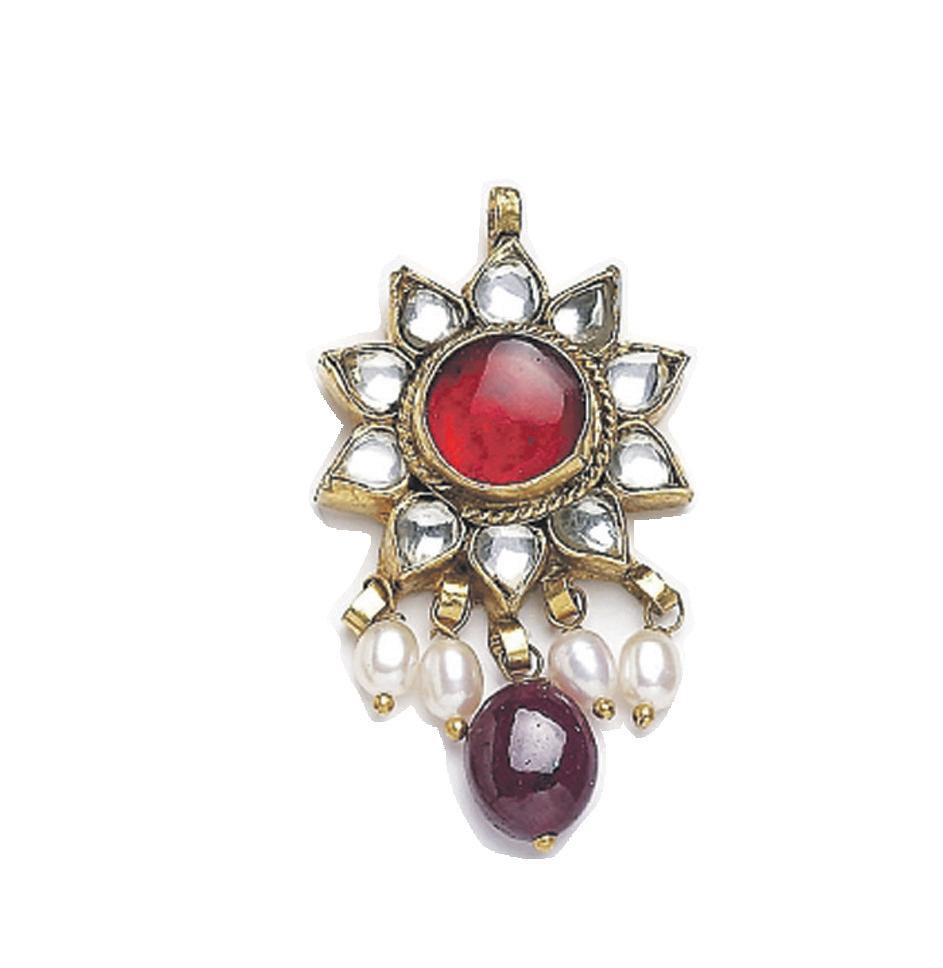
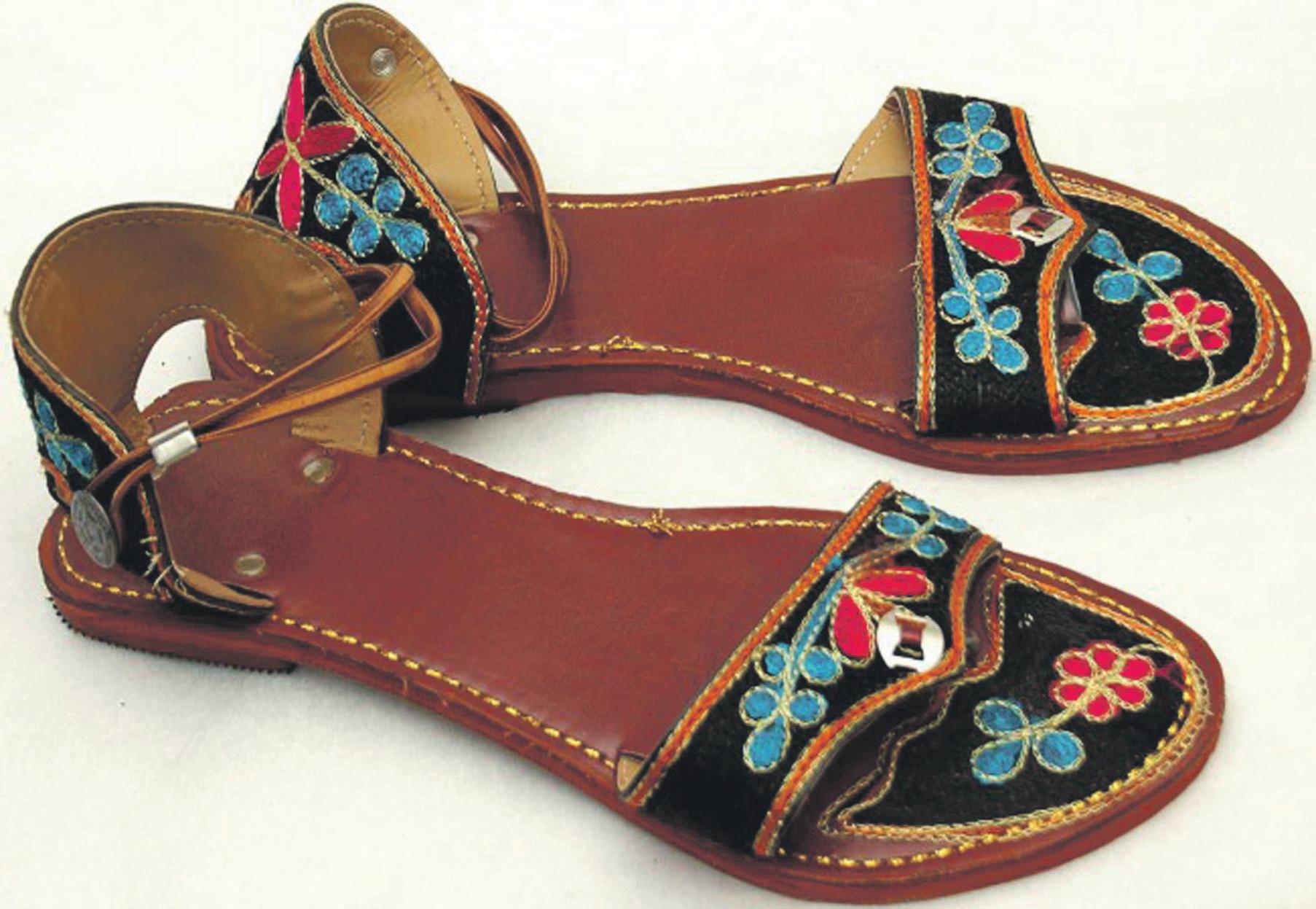


No matter what your problems are I can help solve them with honesty and efficiency, If you are suffering from curses or evil case I will get rid of them, marriage, love problems unite your family, bad luck,sexual (impotency-conceive), business, unknown diseases, court cases, miss furtune, read you future, money(lottory) games etc. Do not suffer in silence come and see ISPIRITUAL YOUSUF
It’s effective and confidential
mob: 0470 607 887 or 0410 093 812 pay upon result, consultation personally or by correspondent
Speaks: English, arabic and portuguese Email: nobasnobas2005@yahoo.com
ARe YOu FACING DIFFICuLTIeS, DO YOu HAve THe FeeLING THAT eveRYTHING IS GOING AGAINST YOu IN YOuR LIFe.
NO LIFe WITHOuT A PROBLeM
NO PROBLeM WITHOuT A SOLuTION MR
With his 37 years experience he is one of the most acclaimed African medium who is God gifted and well known for his competence and efficiency of his work. He is an expert in all occult matters and will help you solve all your problems even in the most desperate cases. He will help with bringing back loved ones, exams, protection from your enemies, exorcisms, and success in business, sexual difficulties & much more.
THE RESULTS ARE IMMEDIATE AND 100% GuARANTeeD NO FALSE HOPE
DONT HESITATE TO CALL ON 0424 799 994 OR 0469 666 519






Contact Details:
Amrit P Jagota (MARN 0532014)

Mobile Contact Number 0414 338 423

Manvinder K Josan (MARN 0962796)
Mobile Contact Number 0410 719 375
Suite 4, Level 1, Murray Arcade 127-133 Burwood Road, Burwood NSW 2134
Phone: (02) 9747 6071 Fax (02) 9747 4031
financial institutions which lent Detroit money, may well see their assets greatly reduced in value (‘from dollars to cents’).
BY NOEL G DE SOUZAThere has been an emphasis in Australia in recent years, on the remediation for wrongs which were done to certain groups in the past. These include Aboriginals, children who were forcibly and secretly brought from the United Kingdom, and those who are physically handicapped.
As a country with a strong economy, it might be safely assumed that Australia can look after its disadvantaged. But the term ‘disadvantaged’ has suddenly begun to assume a newer and broader meaning in Australia. As the Global Financial Crisis (GFC) began to unfold, a lifeline had to be thrown to those who depended on their superannuation earnings for mere sustenance, because share portfolios had begun to dramatically fall in value.
Detroit as a whole has become disadvantaged. One needs to prevent Geelong going down the same path.
The same GFC made Australia, particularly with its high interest rates, a safe haven for foreign investors and this ensured the strength of the Australian dollar
The Government in India has reserved numerous industries to the rural sector such as soap and beedies (the Indian hand rolled cigarettes). The idea is to maximize employment. The Western idea, a heritage from the days of the industrial revolution, is to reduce employment and thus to increase profits. Potential Western investors in India, particularly from the USA and Britain need to absorb the Indian viewpoint because of its prevailing socio-economic conditions. The underlying philosophy is that what is good for the greater number should prevail.
The same GFC made Australia, particularly with its high interest rates, a safe haven for foreign investors and this ensured the strength of the Australian dollar. However, a strong Australian dollar added to the cost of producing goods in Australia, made them uncompetitive on the world stage. This affected both manufacturing and agriculture. Thus numerous manufacturing units either closed down or were downsized, and some moved to a much cheaper New Zealand.
Closing down or downsizing a manufacturing plant is a very traumatic affair for its workers. The whole community gets affected. The price of houses might fall, spouses jobs might have to abandoned and children’s education could get disrupted. There have been large government handouts to keep manufacturing plants from being shut down, but the results till now have been dubious.
An example of a diversified economy is in Geelong in Victoria. It has been the home of the Ford Motor Company since 1925, including other manufacturers like Backwell IXL and MHG Glass. Not surprisingly, the Australian Automotive Research Centre is located there. Complementing the automotive industry is one the largest petroleum refineries in Australia. There are food processing units, including seafood, and these add to Geelong’s economic diversification.
A similar example to Geelong is found in Detroit in the USA. Once a thriving city with the automobile industry as its crown jewel, Detroit has now become a ghost of its former self. With its population reduced, manufacturing units in tatters and dilapidated housing, the city’s income has fallen to the extent that on July 19 this year, it declared itself bankrupt. Pension funds and other
The Government in Australia has foreseen that it needs a well trained workforce. Large amounts of money have therefore been spent in bringing Australian education up to the best levels. And this includes those who are disadvantaged. Kim Carr, the Minister for Innovation, Industry, Science, Research and Higher Education claims that Australia now has twenty per cent of disadvantaged students in higher education.
These are important facts which will determine the reshaping of the Australian economy. As Prime Minister Kevin Rudd has said in a recent policy speech entitled The Australian Economy in Transition: Building A New Competitiveness Agenda: “Because the China resources boom is coming off, Australia’s core economic strategy for the future must be one which diversifies our economy by creating more jobs in manufacturing, food production, infrastructure, construction, and our many other services industries, rather than having all our eggs in just one basket – the resources and energy sector”.
Indians in Australia are found in all socio-economic groups which range from the very advantaged or rich industrialists and entrepreneurs (who are found in small numbers) to the very disadvantaged (best examples include recent migrants or asylum seekers who lack such skills such as proficiency in the English language). The latter groups (migrants and asylum seekers) have become the subject of submissions by The Federation of Ethnic Communities’ Councils of Australia (FECCA) to the Australian Government. FECCA, currently under the leadership of Pino Migliorino, receives funding from the Department of Immigration and Citizenship.
An example of the healthcare sector will illustrate the large expanse in which Indians are found. Indian doctors fill patient needs in both cities and rural areas. There are besides, Indian scientists and doctors who do research in such fields as cancer and diabetes. There are, at the other end, Indians who are patients and some who are handicapped.

It is essential to maximise jobs for long term socioeconomic stability
Too many complex laws are impeding real justice for common citizenry
BY DILIP JADEJA
If a talk show host out there is looking for a good topic, please send them this article. I want more and more people to discuss this issue. In a nutshell, I could put it like this: there are so many laws now, that it is impossible not to breach some law every day.
Why is this a concern?


Because (a) this makes a mockery of the idea that a law abiding citizen will not breach any law; (b) it flies in the face of the notion that all laws are deemed to be read and understood by all (noting that courts are often comfortable with the defence that contracts, declaration, etc., may not be understood by the reader even when read – unless the reader signs that ‘I have understood’).

I have yet to meet a judge or a lawyer who has read all laws, all amendments, all current case law and all Acts of a single Country or State, let alone those of others!
laws, starts taking notice of this real and practical problem. I know Australia is a follower, so this cannot happen right here right now, but if we make enough noise to get this idea to New Zealand or the USA, magic may happen. In the US, say, two Senators can introduce a new Bill seeking something as simple as this: ‘By 2015/17 all laws made from 1980 onwards must be simplified to a point where a common person can read and understand them – and more importantly remember them – to be able to be on the right side of the law all the time.’


I am not interested in the argument that laws cannot be simplified. They can be. Those who have worked on simplifying regulation know how to approach this problem. I believe that the human mind is so ingenious that once we make something our goal, some brilliant folk can always achieve it for all of us. Laws are not rocket science; we simply need the will.
This also makes a joke of the Constitution which says all laws apply to all citizens as appropriate, and it does not matter if the laws are read or not, understood or not, because they are deemed to be read and understood.
Now this was okay when laws were few and when there was a degree of logic in the laws such that the vaguest ‘reasonable person’ on the street ‘reasonably understood’ them, because laws were just common sense, for example: ‘you cannot kill another person’.
However, laws are not reasonable any more. ‘Reasonable’ is a vague concept and laws apply reasons notwithstanding. Also, laws are not common sense any more – they are just what they happen to be. So, one can no more deduce a law by logic. In fact, even lawmakers, administration, courts and judges often have difficulty understanding and applying certain laws.
I have yet to meet a judge or a lawyer who has read all laws, all amendments, all current case law and all Acts of a single Country or State, let alone those of others! Therefore the whole idea of all laws having been read and understood by all is utter nonsense in actual practice.
If we do not do this, we are building a time bomb which will burst soon, because Parliaments after Parliaments keep legislating more and more laws and very few are ever repealed.
Most importantly, I want to do away with the myth that laws protect people. They mostly do not, these days. Because rights are useless unless one can enforce them, and that is where the other big issue lies. Unfortunately for all peoples, when laws are breached, the only recourse is often a court. Courts and lawyers are expensive and few in number, laws are many, and legal help is pure tokenism. In reality, every single person will tell you they did not pursue a breach of law by someone, because it was tedious and expensive.
Justice not delivered in this climate, is justice denied. Therefore laws do not protect people as was the assumption in the Constitution.
In reality, every single person will tell you they did not pursue a breach of law by someone, because it was tedious and expensive.
Opposing this silly state of affairs is not easy, so the first thing to help spread the news is for media personalities, human rights groups and jurisprudence activists to take up this cause and get so much debate going on it, that anyone having to do anything with making or administering
In making more laws and in assuming all have read them and therefore are subject to them, we are denying the other objectives of the Constitution. For example, the tacit assumption that because there are laws and someone can sue for breach of laws and get justice, somehow justice will therefore be done to all. Justice today works for the rich and the powerful, who can afford legal costs. It is not working for common people. This is untenable. Smart folk will understand this and fix it before a Court makes a ruling along my lines somewhere in the world.

Agets ready for the 29th baby. So ran the headline in an Indian national daily, highlighting the Congress party’s decision to carve Telengana out of Andhra Pradesh as the 29th state of the Indian Union, in the 66th year of Independence. The modalities need to be worked out, which could take about four months, before the new state comes into being, but no difficulty is envisaged as the move has wide support across the political spectrum.
The demand for a separate Telengana state is about half a century old, with periodic agitations of varying intensity in its support. And it is more than three years since the government announced in December 2009, its firm resolve to address the issue. The Justice Srikrishna Commission, constituted in its wake, was not categorical with its recommendations but its report viewed bifurcation with disfavour,
autonomy and increased resource allocation for the region within the ambit of the existing unified state. However, the government had not acted on the report and continued to dither, bedevilled as it was with multiple corruption scandals, apart from other preoccupations.
With the general elections looming (due in May 2014), and fearing a rapid erosion of its electoral base, the Congress was probably desperate to get a move on, and hence the sudden urge to grant statehood to Telengana.
The party seems to have struck a deal with TRS (Telengana Rashtra Samithi), the force behind the latest agitation for a separate state. Even if the two parties do not merge immediately, they are sure to contest on a common platform and are expected to sweep the polls, capturing most of the 17 Lok Sabha seats and 119 assembly seats that the region offers. It is a foregone conclusion that there will be a backlash against the party in the rest of the state, comprising
which account for no fewer than 25 Lok Sabha seats, besides 175 assembly seats. That the Congress has virtually given up on this larger area, being content with its prospective hold on Telengana, appears to be indicative of the party’s low morale rather than any well thought-out strategy.
In such a scenario, the clear winner appears to be Jagan (moniker for Jaganmohan Reddy), chief of the YSR Congress, the party named after his late father and former Andhra Pradesh chief minister Y.S. Rajasekhar Reddy.
Jagan has the advantage of being consistent in his opposition to the formation of Telengana, unlike the major regional party, TDP (Telugu Desam Party), and the major national party, BJP. Jagan has been embroiled in corruption cases and may not even be able to contest elections as per a recent Supreme Court order, but that is not likely to come in his way. Notwithstanding the grandstanding of duly “hurt”
Congress MPs and MLAs from this area, some of whom could in fact be resigning their seats, the Congress will have no alternative but to come to terms with him. He will acquire the kind of clout now enjoyed by Mulayam Singh Yadav and Mayawati by virtue of their outside support to the government. If the Congress had been more accommodative of Jagan in the wake of his father’s death and not driven him away from its fold, the party may not have had to concede Telengana, but history is not about counterfactuals.
Arguments like smaller states being more amenable to effective administration are just academic. Issues like division of states will almost invariably be based on political considerations in a democracy. Therefore, it is futile to deride the Congress’ decision on Telengana as political opportunism. But a major concern here is that the main protagonist, K. Chandrasekhara Rao, chief of TRS, who is sure to wield enormous influence in running the fledgling state, at least in the initial years, is not known for his integrity or administrative experience. And his party seems to have thrived on extortion during the past few years, hence the nuanced agitation, which permitted the Congress to sit on the issue for years.
People from Telengana have often complained about “loss of jobs”. It is not that people from the region are at present discriminated against: what they want is a distinct preference for sons of the soil - and this is where the rub lies. A major national party like the Congress owes it to itself to check the parochial tendencies of its ally and ensure peace and harmony.
Considering that Hyderabad, which will serve as a joint capital for the two states for the first
Even if the two parties (Congress and TRS) do not merge immediately, they are sure to contest on a common platform and are expected to sweep the polls, capturing most of the 17 Lok Sabha seats and 119 assembly seats that the region offers
10 years and that the city is not even going to be a union territory in the interim period, people from Andhra could suddenly find themselves reduced to the status of second class citizens in the megalopolis, which has been home to millions of them. Every care should, therefore, be taken to ensure that Andhras do not feel alienated and there is no flight of capital or business from the city. The first few years are bound to be marked by turmoil, but it is to be hoped that Telengana, which is well-endowed in terms of natural resources, will eventually come to occupy a proud place among states and prove that the sacrifices made by thousands to realise the dream have not been in vain.




The point is, whole industries are being eaten alive by software and the internet
 BY HASNAIN ZAHEER
BY HASNAIN ZAHEER

In one of the recent issues of Indian Link (Issue 2, July), I had made a case for why kids should be taught programming.
Today, I am going to argue why you, an adult business owner or employee, should also learn programming. Like last time, I would like to mention that learning programming is not limited to learning the syntax or the rules of a programming language. Or learning how to configure a system such as SAP, although that kind of knowledge is not bad to have either.
My recommendation is to be capable of understanding general principles of how internet and mobile applications work, what factors can make them succeed or fail, and knowing how to work with IT, mobile and internet vendors and workers – to understand what they are saying and their scope of work and limitations, and to be able to provide them great requirements. As business owners, you should understand online business. As employees, you should know how to automate part of your work that
is manual or repetitive, so you can be more productive.
But before we venture further, let me clarify why I am making this recommendation.
About two years ago, Marc Andreessen, a pioneer of commercial internet wrote how ‘software is eating the world’. He argued that internet and mobile communication and their convergence with commerce, entertainment and business models, is disrupting and taking over entire industries. This is contrary to the general belief in which today’s popularity of Facebook and other dominant websites are seen as just another ‘bubble’.
As proof of his assertion that all industry is going online, Andreessen cited Amazon and the way it transformed the books retail business and even the way we read books now (on Kindles, rather than on paper). He also cited streaming music services such as Spotify and Apple iTunes and their effect on the music industry, Linkedin and its effect on recruitment etc. The point is, whole industries are being eaten alive by software and the internet. Your industry may just be waiting in line. Get ready to meet the new reality of an ITdriven world before the business or job is eaten by it (or IT – pun unintended). It does not matter
whether your industry is content, media or software driven; many employees of banks, insurance and mining would find their skills inadequate to deal within the new environment.
If Mark Andreessen has convinced you enough to give software a shot to preserve your career or do better in business, here are a few resources to enhance your skills.
To get a feel of programming in an entertaining way, check out amateur game development platform developed by MITScratch (scratch.mit.edu). This is as good for adults to have a flavour of software development, as for kids.
When you are ready for serious stuff, then you can learn programming online interactively at Codecademy (www.codecademy.com). General Assembly (generalassemb.ly/ sydney), an educator of start-ups and entrepreneurs, offers classes in web development, computer science fundamentals, data science among others. Classes are held in Ultimo near Sydney CBD. Before enrolling into one of their comprehensive courses, you can attend a few of their workshop sessions that are offered for as low as $40 for a 2 hours session. They also have several videos online (generalassemb.ly/online) that are offered to paid members (about
US$25 per month).
Do you think your Excel skills needed a little update? Need to brush up Powerpoint skills? Head over to udemy (www.udemy.com), enter what you want to learn and you would have a choice of dozens of online courses offered by other people like you and me, not necessarily colleges, and who are experts and experienced users. You may subscribe to their courses and complete on udemy’s platform. Interested in learning how to build an online strategy for your business? Attend Internet Business Strategy (cce.sydney.edu. au/course/IBST) at the Centre for Continuing Education (CCE) in University of Sydney to learn about business models online, work on the new business for a month and then come back to learn how to implement it (cce.sydney.edu.
au/course/IBst). Other one- day workshops at CCE (cce.sydney.edu. au) include mobile strategy, social media and project management. All these are reasonably priced and are quality courses.
Whether you have a preference for planning and strategy, or you are creatively inclined, love numbers, play with data, or create great art, there is a role and an area waiting for you in online, software and mobile. So, polish your programming skills and let’s develop that game. And I am not saying this to kids!
It does not matter whether your industry is content, media or software driven; many employees of banks, insurance and mining would find their skills inadequate to deal within the new environment


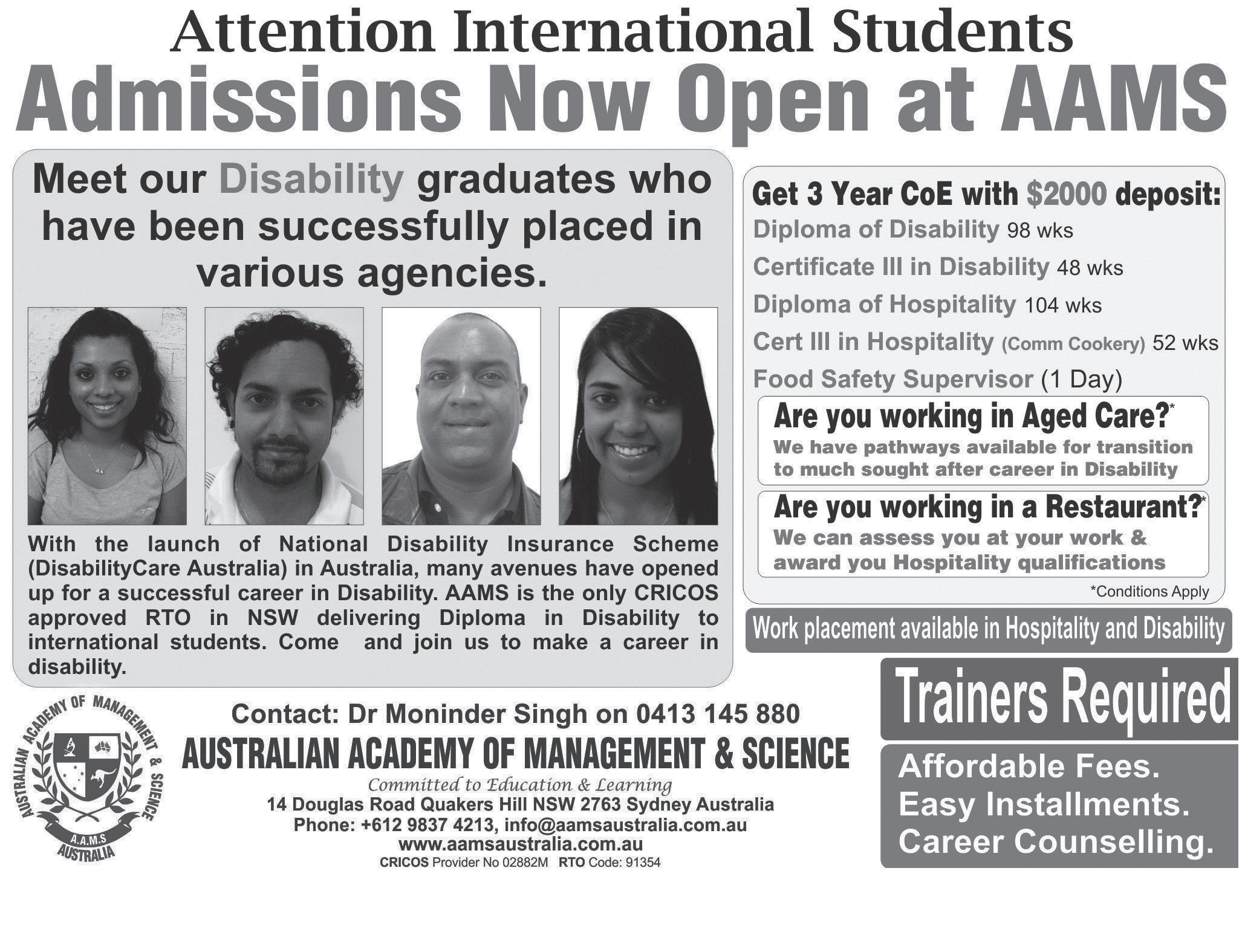
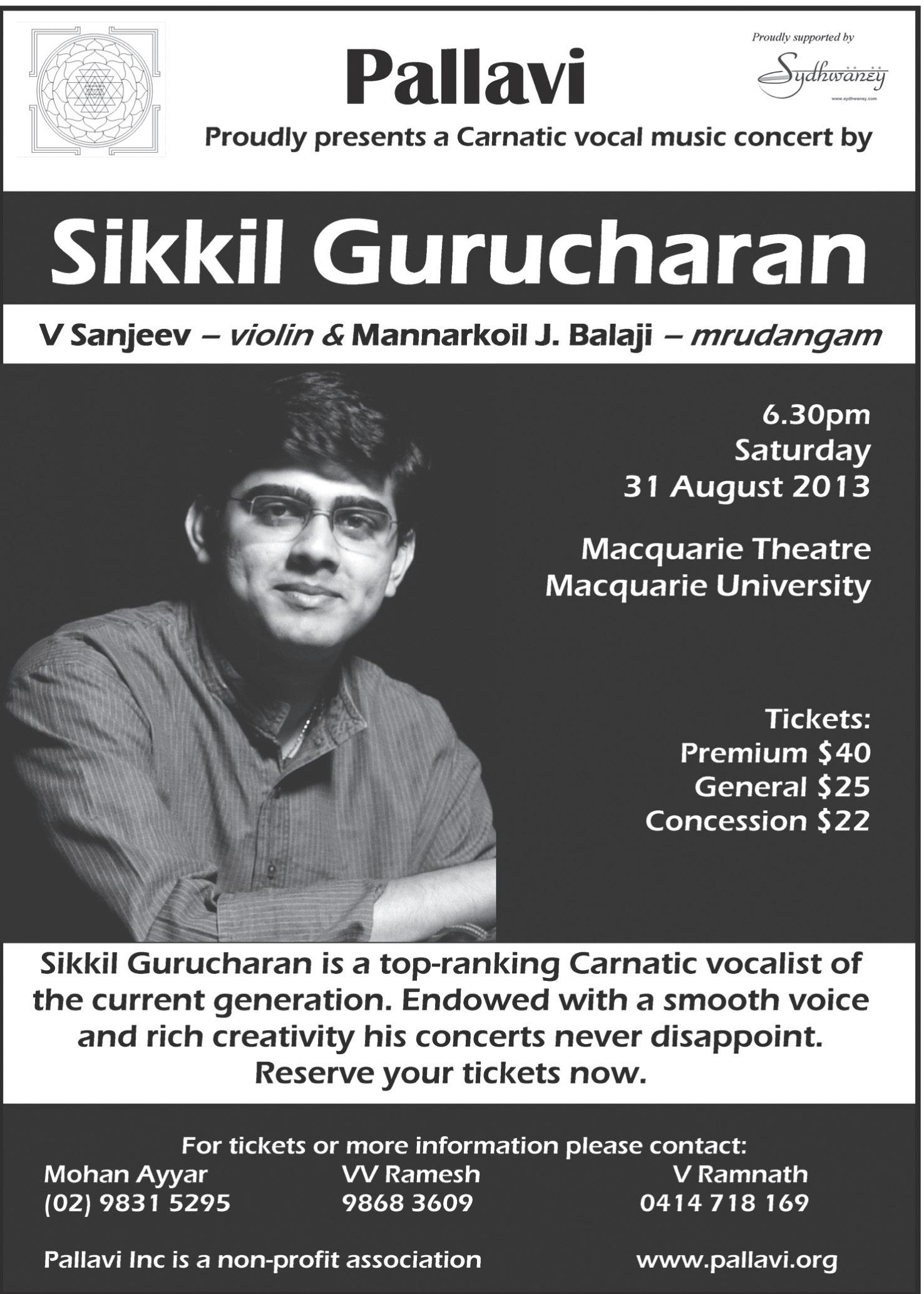


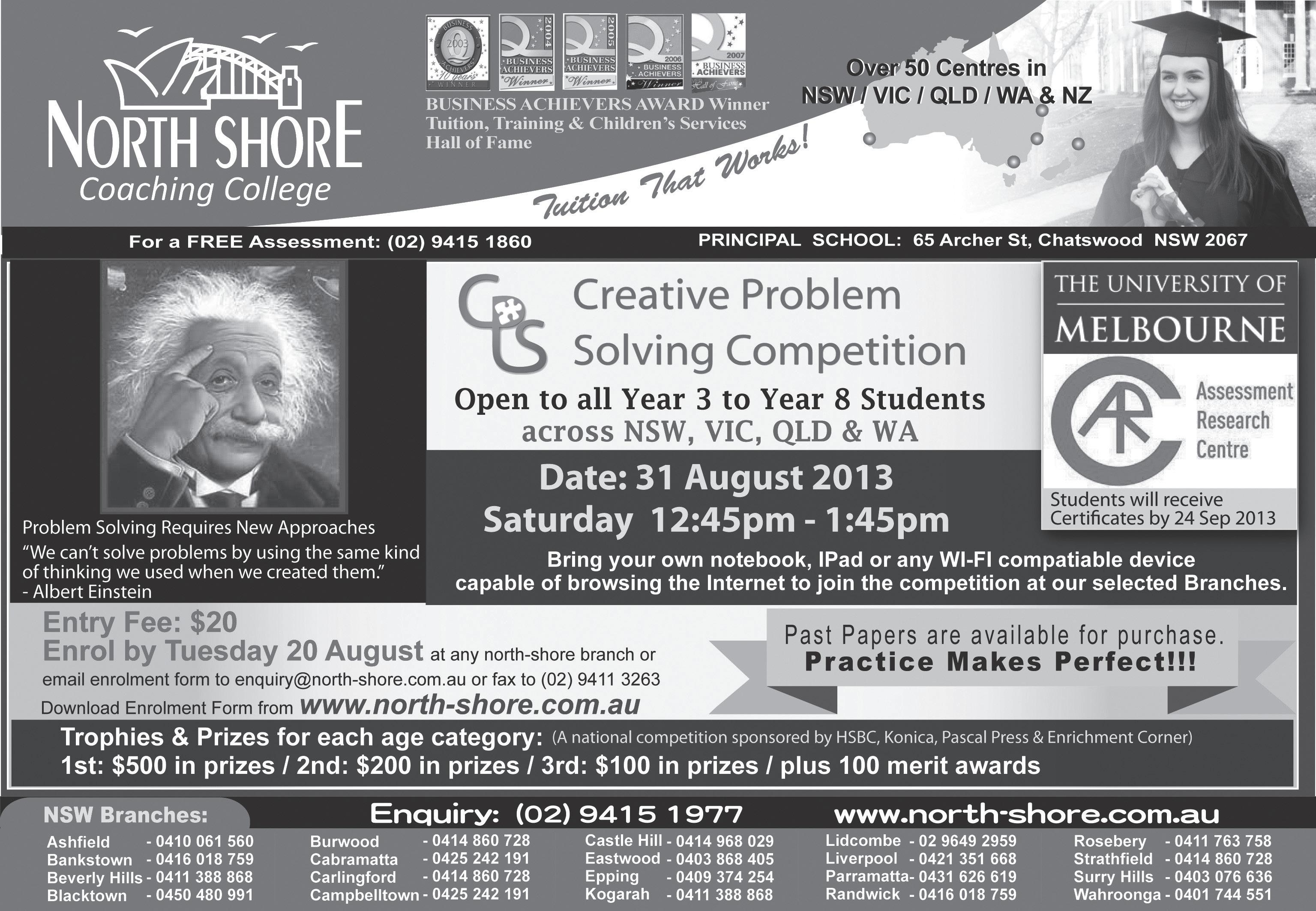

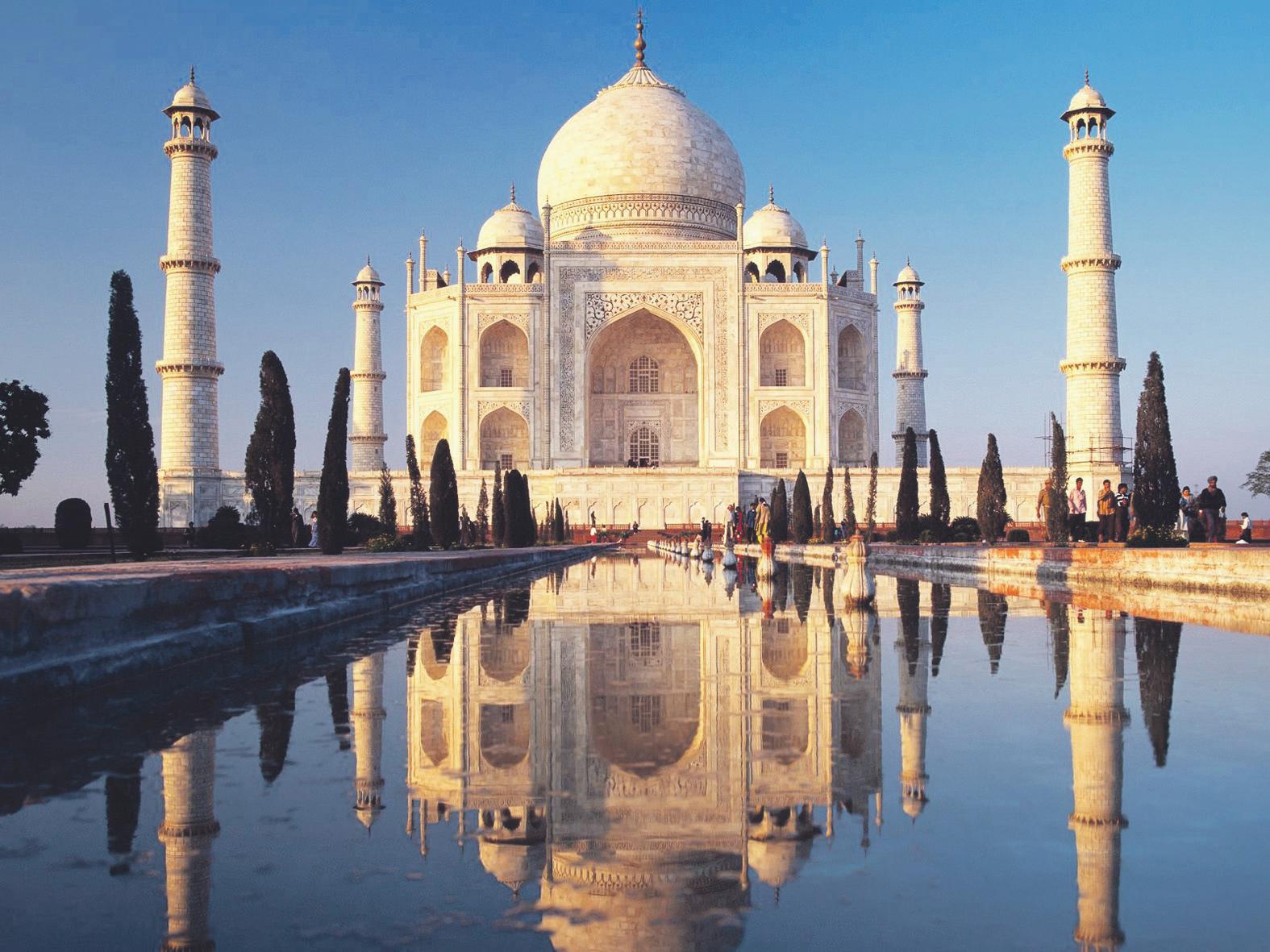



Ahigh proportion of parents have experience of a child who demonstrates ability in a particular field of endeavour, only to notice that over time the child no longer appears to manifest the talent. This ability may be linguistic/verbal, sporting, mathematical, musical or other. ‘Natural ability’ evidenced when young can fade as children grow and fall back into the pack – either they underachieve or simply allow themselves to become ordinary. Unfortunately this can be highlighted by the tendency of parents and schools to record and measure everything. It is common for even very young children to have extensive portfolios managed by their parents.
There was a time once, when participation was valued for itself. These days, putting on a shirt at an athletics carnival wins house points and bonuses. Entry into a mathematics competition gets a certificate of participation, and in sporting contests the ‘player of the match’ is rotated so that every child is a ‘winner,’ regardless of the effort they have made. Over praise leads to underachievement and undermines resilience.
It is common nowadays for parents to report that a child is underperforming. That is, they believe that their child has far more ability than is being manifest. They will say to the child, “Why don’t you just see that if you tried harder, you would see how good you can be”. In saying this, the parent hopes to ‘transmit’ a value that will become intrinsic to the child. Alas, it is rarely the case that what a parent values will be what their child also values, particularly while the child is still in school. Why, for example, should a school child ‘listen’ if the teaching is insipid and uninspiring? Why should a child value 95%, when 82% or 73% is good enough to them?
Why too, should a child enjoy training for sport when a coach favours the children who appear to have greater ‘natural’ ability?
In this context, parents need to understand that children best learn when there is broad understanding of the factors likely to encourage and engender success.
There are four values that all children and young adults must be taught if they are to consistently manifest to their true ability, or even if they are to uncover what they are truly capable of. These values are discipline, openness, structure and coachability.
Never fret for the child who works hard, but does not achieve. Educators find hardworking students who achieve quite easy to mentor. However, the students
most admired are those who work hard but do not achieve to the standard they desire. The key factor that is admired is tenacity. Why? Because success in life comes to those who are consistent and disciplined. Discipline begins projects and finishes them off. Discipline sees something through to the end, and builds resilience and strength. It also builds selfconfidence. Incidentally, also never fret for the child who can focus for hours on things that matter to them, but do not matter to you. The capacity to focus for hours is a facet of discipline.
A second key factor to build in young people is a capacity to be open to new things. Risk-taking can be scary, particularly for children to whom things come easily. To take risks requires allowing oneself to be open and to be humble. Humility makes a person learn empathy, understand others, learn from their mistakes and also the mistakes of others. Humility is the basis of forgiveness when there are misunderstandings. Of course, humility cannot be taught through self-righteousness, arrogance or the intellect. Humility is the stuff of an open heart.
The greatest of all achievers, the ones who sustain success, have one thing in common. Ability and the capacity to apply structure that develops, applies
and hones that ability. Structure is, in effect, an extension of discipline. Structure requires a person to have thought about goals and what is possible. Structure invests time in improvement and says, “This matters, and I am prepared to coalesce other things in my life around the goals that I value”.
Underachievement is overcome when people are ‘coachable’. This means that they believe they can learn from the expertise of others, and they seek it out. In essence, all people seek mentors and guides through their life. However, finding such a person can be hard.
Too often parents say that their children are underachievers – that they are not manifesting to their full ability. However, to have such an expectation may be misplaced. Achievement should not be seen as an end, but rather as intrinsic to the process of learning.
If parents focus on instilling values such as discipline, structure, humility and coachability in their children, they are giving them all of the tools they need to utilise their natural talents at their highest capacity. In this way, the means takes care of the end. Success in life is not found solely in a school report, or in a trophy, ribbon or Speech Night list. Sometimes, true success comes from time and experience – from the stuff of life. Experience helps children to integrate the values that engender success.
Alas, it is rarely the case that what a parent values will be what their child also values, particularly while the child is still in school
If parents focus on instilling values such as discipline, structure, humility and coachability in their children, they are giving them all of the tools they need to utilise their natural talents at their highest capacity


Maybe it is in our genetic makeup or maybe it is a dysfunctional behaviour we learned from our cave ancestors, but us women are forever at loggerheads with time. It’s like Time is our arch enemy, fleeting past in a blink during our youthful years, but bent on making us look old and wrinkly sooner than we deserve. To our credit we try anything to prevent the old scourge from doing what it does – wreaking havoc on our youth. We want Time to stop the crusade against us, we’d like it to just leave us alone. All we want is to stay in our prime, in our golden youth years forever. Is it really too big a thing to ask?
So passionately do we believe in our cause that we go to extraordinary lengths to stop the advancement of age in its tracks. And if, God forbid, it gets ahead of us by even a bit, we try to push it back by employing whatever means necessary to reclaim our territory of a clear complexion and plump skin, forcefully usurped by Time.
In the battle against Time, women have tried everything from herbs to hypnosis, potions to poisons, and traditions to technology to ward off the ravages of age on our bodies. But since one size does not fit all, the quest for that unfailing antidote continues. The beauty industry is constantly kept on its feet trying to come up with new and innovative techniques to turn back the clock; and in doing so, pain, humiliation and disgust are some factors not taken into consideration at all. Here are some of the most bizarre beauty treatments gaining popularity around the world.
This is a facial which uses nightingale droppings to give the skin a bright and healthy glow as it contains enzymes that break down dead skin cells. The treatment owes its origin to Japan where in ancient times, geishas smeared nightingale poop on their faces to get rid of their white make-up. This treatment, popularly known as the ‘Geisha’ facial, is being offered at top end spas in America and other countries for a pretty penny; but Australia might never be home to it due to quarantine laws. The rare nightingale droppings used in the facial are
first collected, dried and then crushed into a powder. Ultraviolet light is passed through it to get rid of germs and offensive odour. To a great extent, the yuck factor is minimised and users report the smell to be more like dough.
Snail slime facial
Snail slime is being touted as the new miracle anti-aging treatment. The slime contains mucin which reduces wrinkles, acne, blemishes, age spots¸ pigmentation and scarring, helping to keep the skin young, smooth and radiant. Snail slime has been an ingredient in beauty products for years. You can find snail mucus in face creams, soaps, shampoos and other products. The credit of discovery however, goes to the Greeks who were using snail slime since ancient times. Later, Chilean farmers handling snails for export discovered the agedefying properties of the slime as they noticed their hands that were coming in contact with the slime looked much younger than their faces. Apart from adding mucus to face creams, the new fad is the snail slime facial. Clients can lie down and relax while a number of snails are placed on their faces and allowed to slither, leaving trails of their goo all over the skin which then absorbs the good stuff directly, for maximum benefits.

This non-surgical anti-aging procedure is perhaps the fastest growing trend amongst the rich and the famous. The treatment involves drawing blood from the client’s arm, giving it a good spin to make the platelet rich plasma more concentrated and then injecting it back into areas of the face that are beginning to show signs of aging. The procedure is being likened to botox injections as it produces similar results by boosting the production of collagen and new blood cells. The ‘vampire’ facelift promises to reduce fine lines, rejuvenate the skin and repair environmental damage caused by sun exposure and smoking.
The miracle ingredient in this treatment is the afterbirth, be it of a sheep, pig or human. Placentas are full of goodness in general, but for the purpose of this facial the human placenta is the highest priced. It contains
proteins, minerals, amino acids and glycine which fight the signs of aging. The stem cells present in the placenta rejuvenate the old cells and promote a younger looking skin. Though it may sound totally gross, the procedure does not actually involve rubbing the placenta directly on the client’s face. Instead, very costly creams, gels or masks containing tissues from the placenta are massaged into the client’s skin after cleansing and exfoliating, to reveal a healthy, younger looking skin, instantly.
Promoted by a Thai beauty therapist, this ancient treatment involves paying to get your face slapped in order to banish those wrinkles, improve circulation and shift fat. It promises to give your
skin a plump, smooth and glowing appearance. The therapy is fast gaining popularity in America where it can cost more than $300 for a 15-minute face slapping session. The therapist kneads, slaps and massages the face tissues to work the antiaging magic.
And this is just scratching the surface, the list of bizarre beauty treatments can fill volumes. There’s the beer facial, the fish egg facial, the chocolate wrap, the venom facial, the list is endless. The fact that a new treatment springs up every second might be an indication that they don’t really work that well and time eventually catches up, but nevertheless we will keep on trucking, and kudos to us for trying!
The treatment owes its origin to Japan where in ancient times, geishas smeared nightingale poop on their faces to get rid of their white make-up
Promoted by a Thai beauty therapist, this ancient treatment involves paying to get your face slapped in order to banish those wrinkles, improve circulation and shift the fat




Kovalam was first brought to prominence during the 1930’s by the Maharaja of Travancore who recognised its potential. He encouraged tourism to the region and invited guests to stay at his palace, Haylcon Castle. Word spread and Kovalam became a popular holiday destination. More recently Kovalam has attracted overseas travellers in search of a laid back beach culture and better health.

Kovalam is made up of several of India’s most beautiful beaches that stretch along a 17 kilometre coastline. I spent my first night there and woke to a splendid panoramic view of the Arabian Sea with fishermen pulling in their nets, while they chanted. The beach was quite lovely, but as I walked closer towards Lighthouse beach, it became more developed.
Kovalam means grove of coconut trees after all, but instead there were bars, shops and hotels. I caught an auto rickshaw to Chowara beach, eight kilometres south past villages and coconut groves. Down a narrow winding lane I arrived at a small Hindu Temple and Nikki’s Nest.
I’d come for a restorative holiday. A computer search had generated a multitude of resorts in Kerala. Ayurveda, the 5,000 year old traditional Indian health regimen that takes a holistic approach to health and healing, by drawing on the benefits derived from herbs and plants for medicinal purposes has become increasingly popular. But “Guten Tag” was not the welcome I was expecting on my arrival at Nikki’s Nest Ayurvedic Centre and my puzzled look did nothing to deter the eager young staff member from handing me a guide of the resort – in German. Of the 69 guests, two were Russian, the rest German.
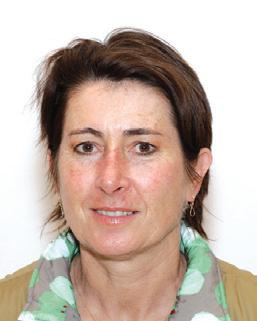

The organic vegetarian buffet selection, with 12 south Indian dishes to choose from, was delicious. My consultation with
the resort’s Doctor, Dr Priveen was less successful. He sensed my lack of knowledge about the Ayurvedic treatments on offer and was suitably unimpressed by my brief stay. I was then escorted to the massage centre. Unlike any massage I’ve had before, I was seated upright on a stool. Oil was liberally poured onto my head and rubbed in with long stokes rather vigorously from back to front then swirls and more oil.
That night I sat with Dagmar from Berlin who spends one month here each year to recuperate, who spends her days with her hair wrapped in a towel to allow the Ayurvedic oil to penetrate. All guests wore robes, except me and the two Russians, and wore gold hotpants and loads of jewellery, who didn’t appear to know what to make of it all.
I had sights to explore. Thiruvananthapuram, formerly known as Trivandrum, the capital of Kerala is a lovely city spread across a group of wooded hills. Its bustling markets and handicraft stores make it a good place to shop. There are interesting brass pieces for sale, bowls, urns and water jugs, lungis (sarongs) of light weight cotton, often trimmed in gold, dance masks, baskets and rugs.
Padmanabhapuram Palace, 63 kms from Thiruvananthapuram is one of India’s most exquisite but least visited treasures, a wooden palace that once belonged to the maharajahs of Travencore, the rulers of what is now Kerala, with magnificent rosewood carvings built in the sixteenth century The palace is now in Tamil Nadu, after a redrawing of political boundaries along linguistic lines.
There were also beaches to explore. Many are crescent shaped, and are separated by rocky outcrops. I walked north past the village of Mulloor towards the seaport of Vizhinjam, scrambling over rocks as I went. There were villages, Churches and Hindu temples, spice shops, tailors and a vendor delivering fresh milk on his bicycle.
The next day I walked south along the beach early enough to see the fishing boats go out. In Chowara village women were loading up fruit and vegetables to take to market. I could hear music

that progressively got louder, but through the dense coconut groves, I was unable to locate its source. This was the Kerala I had hoped to find. As I went back onto the main road, the tourist shops and eager vendors appeared once more, and I was relieved when I returned to Nikki’s Nest to enjoy the panoramic views of the beach below and sip a bright pink herbal
I knew what was best suited for me the moment I entered the Ayurvedic Spa and Fitness Centre at the Vivanta by Taj –Kumarakom, four hours north of Kovalam. There is much to recommend Ayurvedic treatments for maintaining good health and wellbeing combined with yoga, meditation, regular exercise and a diet rich in fibre, fresh fruit and vegetables. At Nikki’s Nest, the approach requires commitment and self discipline and will appeal to those prepared to stay for long enough to realise the benefits. For me, a soothing head and shoulder massage, combined with time spent exploring canals and villages on my bicycle, reading a good book while lying in a hammock and enjoying a sunset cruise, like the one I experienced while in Kumarakom was absolute bliss. Ayurveda does renew your mind and body, and perhaps that is the best holiday we could ever hope to have.
Images: (Clockwise from bottom left)
Poolside at Vivanta by Taj Mulloor Beach
Sunset at Chowara Beach
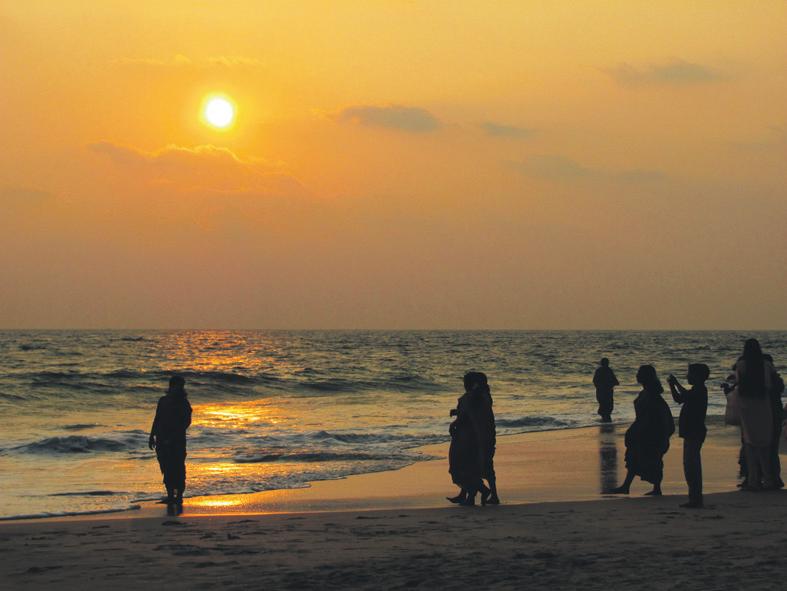
Statues at a Hindu Temple in Mulloor Boys from Chowara Village
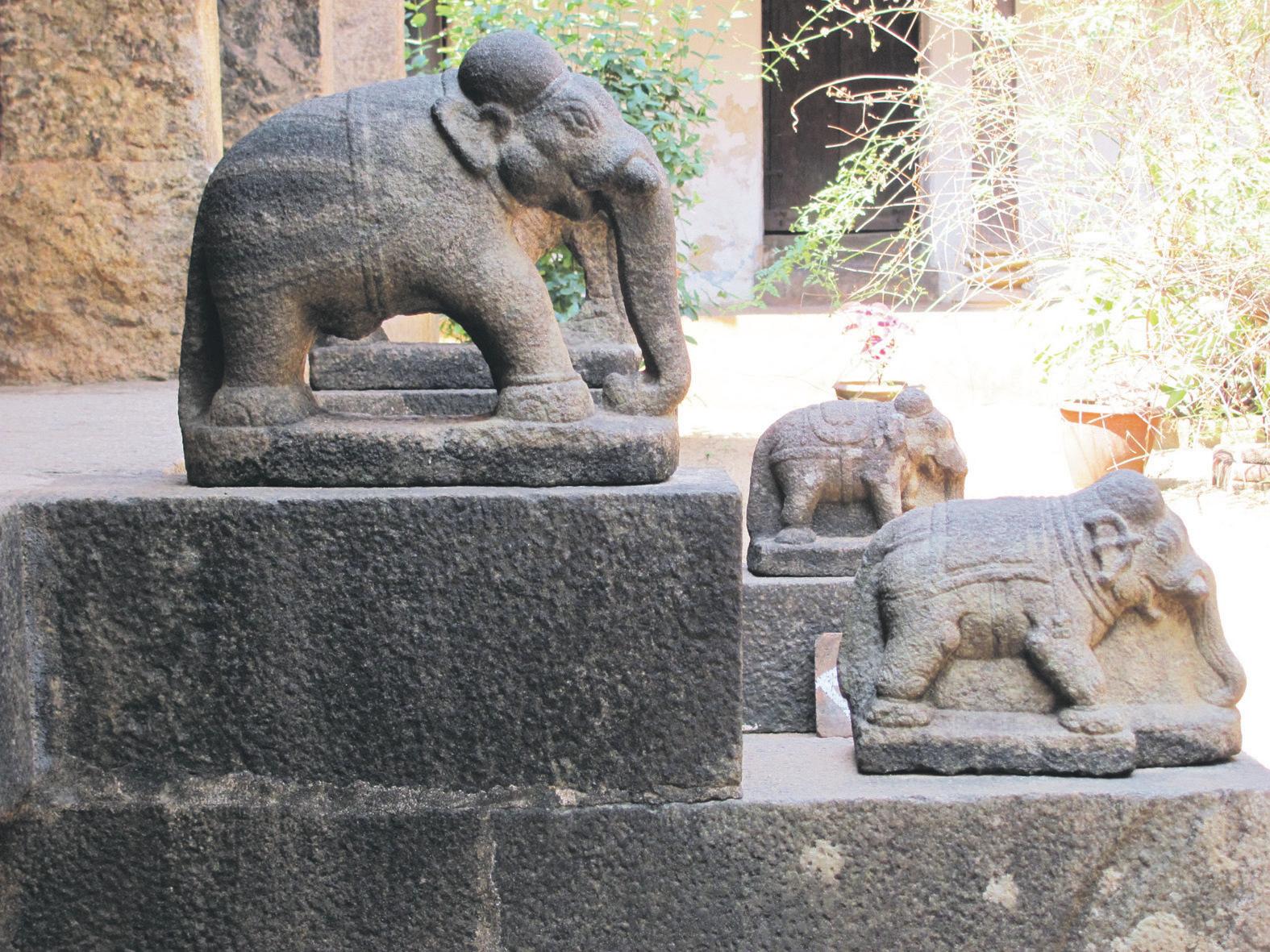
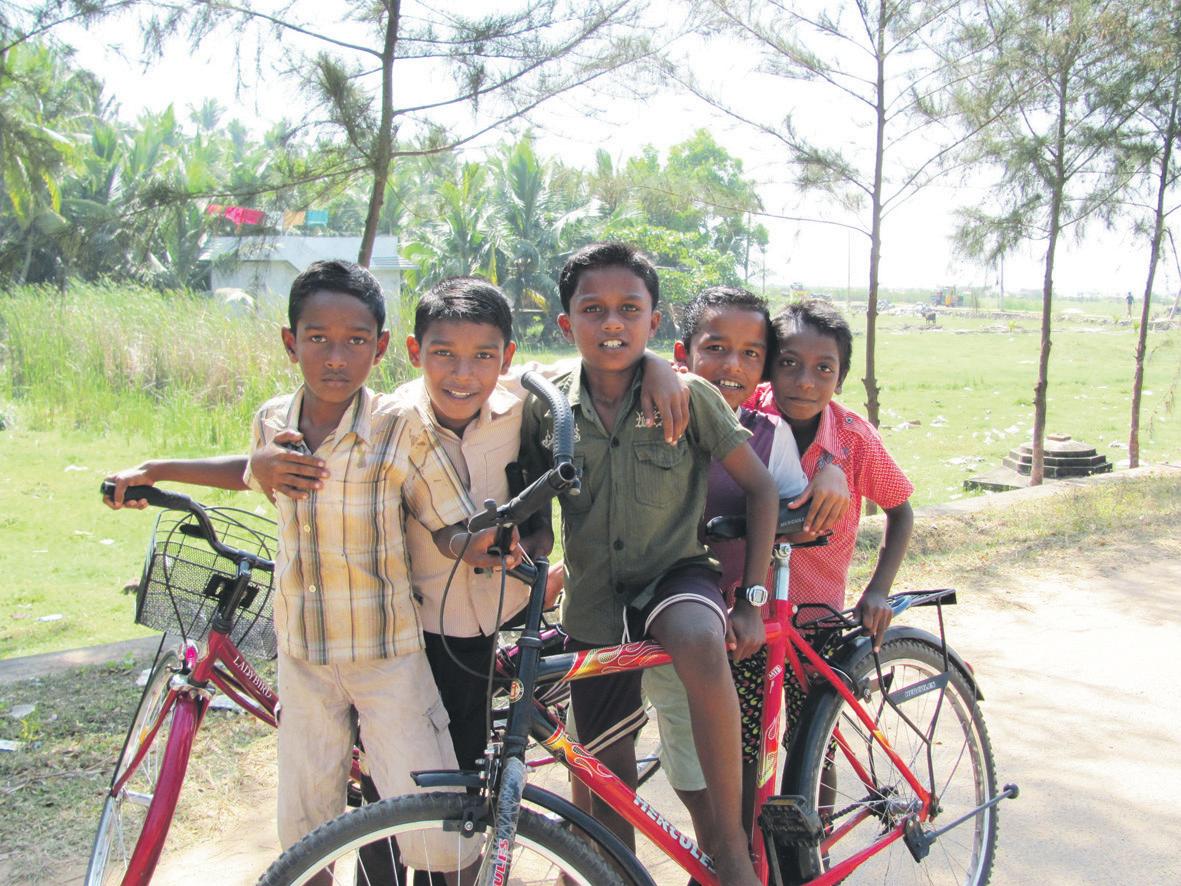
Lunch time at Nikki’s Nest Sree Murukan at the Royal Stitching Shop, Mulloor

Dance performance at Nikki’s Nest Fishermen with their ropes at Kovalam

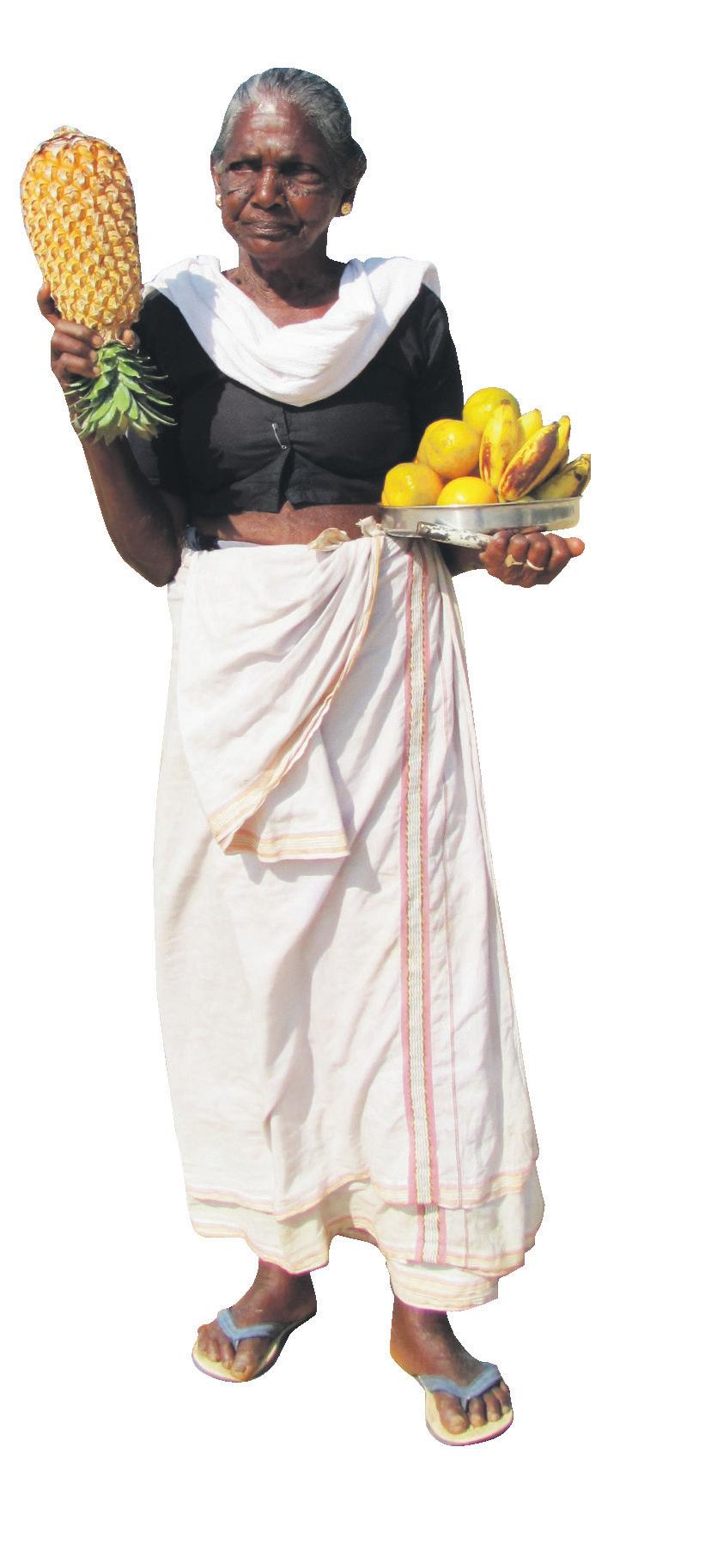

Singapore Airlines flies to Cochin International Airport (CIA) and Thiruvananthapuram International Airport (TIA), via Singapore. TIA is close to Kovalam. Kumarakom is 175 kms, or four hours north of Thiruvananthapuram, and CIA is a further 85 kms, or roughly two hours north of Kumarakom.
There are many budget and midrange options. Coral Reef, at Mulloor is basic and charming, with only 4 rooms. At the top end, the Vivanta by Taj – Kovalam a resort set on 15 acres of beautifully manicured gardens, with fountains, sculptures and waterfalls leading to a lagoon and semi-private beach. Email: vivanta.kovalam@tajhotels.com Website: www.vivantabytaj.com
For Aruyvedic treatments, the all inclusive full board package at Nikki’s Nest is recommended, which includes yoga, meditation and massage treatments. While Europeans come during the high season, especially in January, at other times the resort offers activities, such as cooking classes and there is a balanced mix of nationalities. Email: nest@sancharnet.in Website: www.nikkisnest.com
At Kumarakom you would be hard pressed to find a more beautiful setting, more dedicated staff or more luxurious surroundings than at the Vivanta by Taj - Kumarakom. Email: vivanta.kumarakom@tajhotels. com Website: www.vivantabytaj.com Avoid the high season Oct-April when prices escalate. April can be hot and July is wet.
S h OPPING
Beachside boutiques are geared to tourists. There are many tailors. Try Sree Murukan, Royal Stitching Shop at Mulloor.

MORE INFORMATION
India Tourism, Glasshouse Shopping Complex, Level 5, 135 King Street, Sydney Tel: (02) 9221 9555 Email: info@indiatourism.com.au Website: www.tourism.gov.in
When I continued to maintain my silence he added in a softer tone, “Do you not see child, that ‘an eye for an eye’ will make the whole world blind?”
BY RANI JHALAMy father was a farmer and we grew cotton. While we were not rich, we had a comfortable living just on the outskirts of Ahmedabad. I had enjoyed a carefree childhood playing with the village children and under the care of loving parents. It was a happy home and while we knew that the British ruled our homeland, it was not of any real significance. Generations of our ancestors had served one master or the other. The Maharajas, the Moghuls and even our village head, all expected some kind of obedience, so it was easy to transfer that dependence and loyalty to the British.
During those first five years of my live, I had not even seen a ‘British sahib’ though my mum often spoke of our ‘Queen Victoria,’ and my teacher showed us a painting of her at school.
It was when I was five and a half, that an incident happened that would change the course of my life and would set it on a path where I would see great struggle, offer immense sacrifice and live to see eventual success. As a nation we would find freedom and eventually become ‘independent’.
I remember one afternoon, when the villagers came running
to our home. They brought my father in their bullock cart. His white kurta was stained with his blood and his left eye had been swollen shut. My mother began wailing even before she came out of her room. The villager explained what had happened, for my father who was still in shock, was unable to speak for himself.
The two villagers who had accompanied my father to the city to sell out cotton had witnessed it all. They were boarding the train at Ahmedabad station when my father was stopped from entering, even though he and his men had bookings. When he asked that they permit him to enter, he was pushed to the ground. When he tried to reboard his compartment, he was beaten up by the guards who were accompanying the niece of the local ‘sahib’. They told him that no Indian could travel in the same compartment as the Sahib’s niece. My father should have let it be, but remembering a similar incident that occurred with Gandhiji, he was determined to make a stand. A stand that ultimately cost him his left eye.
My father never regretted that move. Instead he called it the day ‘he truly began to see,’ because for the first time he saw India for what she was, a mere mistress to an alien monarch.
Two days after that incident, there was much anger among the villagers and I too carried a rock to throw at the next ‘sahib’ that crossed my path. Many spoke of burning their homes and of abductions. My father remained
calm, but did not object to what was being suggested.
On the fourth day after the incident, I heard great commotion coming from the road leading into our village. There were more than twenty people coming on foot. At the front was a strange man, skinny, bald, wearing glasses and a plain white dhoti. I heard someone call out, ‘Gandhiji is coming!’ I ran and hid behind my father, and watched as the villagers began to gather around my father too.

As the man reached my father, I saw my father rise. It was the first time that he had stood up since he was brought home after the attack. He tried to touch the man’s feet but was instead pulled into his embrace. And the man said, “You silly man, did my experience not teach you anything?” Then after a smile he added, “But I am glad, you stood up for your right!”
Gandhiji spent that evening at our home along with his twenty followers. We had a simple communal meal and everyone helped in cleaning up. Then we sat outside as someone sang Raghupati Raghav Raja Ram, one of Gandhiji’s favourite bhajans Our courtyard was already full, but more and more people kept coming from the neighbouring villages. Finally there were too many to fit inside our walls, so we gathered around the local well instead.
There, Gandhiji talked of his dream of a free India, of an independent India and of his wish to see the British leave Indian soil. Seated near my father, I shouted,
“Then let us all throw stones at them and make them go away!”
Gandhiji froze and looking directly at me said, “And that will make you no better than those that hit your father”.
He then added, “To kill for freedom will legitimise killing after freedom”.
When I continued to maintain my silence he added in a softer tone, “Do you not see child, that ‘an eye for an eye’ will make the whole world blind?”
He continued, “I need volunteers who will fight for a free India, but they must come with the commitment to non-violence and a promise to honesty. If there is anyone here who cannot commit to these principles, do not join my cause. Do not pollute it with hatred and anger. I wish to free my homeland, not enslave it to a greater evil”.
My five-year-old mind could not decipher its true meaning, but I know that the rock fell from my hand and I have never lifted one up again.
The entire gathering chanted with one voice, “We give you that promise, Bapu. Lead us to independence and we will follow as your non-violent army!”
And so, I too gave my pledge. I walked in the Dandi Salt March alongside my parents. I visited my father in jail on so many occasions, that I almost felt incarcerated too. I even learned to weave cotton on a charkha or spinning wheel as Bapu did. I wrote patriotic songs and I only wore a white garment.
My five-year-old mind could not decipher its true meaning, but I know that the rock fell from my hand and I have never lifted one up again
At every step of this movement, I knew that history was being made and that I was a part of it. I was part of an India that had served its queen with love and devotion, but which now wanted to respectfully severe those ties and stand on its own. An India that wanted to decide its own future with ‘Self-Rule’!
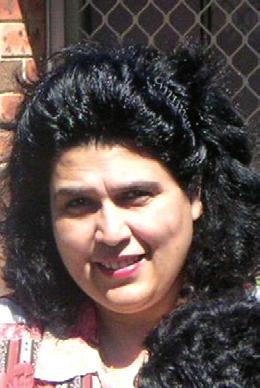
I am now 83. Like Bapu, I walk with a stick and I wear glasses. Like him, I sit in my little home, spinning the wheel and watching independent India revolve around me.
I still have great hopes for the country that was so loved by ‘the father of the nation’. I have dreams of it being restored to its former glory. But I have great fears too. That just as Bapu was gunned down when the country most needed him, I fear my free India will be enslaved by greed and corruption. The only way to stop this is to keep that struggle for non-violent alive. This is a work of fiction. Most conversations are part of the author’s imagination.





Seeking Sikh boy for Sikh Kamboj girl 5’2’’ /1980 post graduate. Brother and sister well settled abroad, good cultured family. Contact: +91 9464 117 500. Email: parampawan5@yahoo.com

Looking for a suitable match for my 37-year-old Gujarati sister. honest, beautiful, educated, issue less divorce. has custody of a child, currently living in India. Sincere responses welcomed from a well settled and educated hindu family. Please email details with a recent photo to: dipmis80@ yahoo.com.au or call on: 0414 096 162.
Seeking suitable match for 36-year-old, who works for a multinational company in a senior position (chartered accountant). Values both Indian and western culture. Seeking hindu professional man, preferably from a well settled family. Please email: ganesh2011v@gmail.com

Well settled family in Australia invites alliance for 26-year-old, 5”7, Punjabi girl (Australian Citizen), working as a lawyer for the Australian government. Seeking Indian boy, caste no bar. Please send biodata/ particulars of boy to: fordsyd88@gmail.com
Fijian Indian male Australian citizen in mid forties invites correspondence from single Indian females (no kids) for marriage, and to settle in Melbourne. If interested please contact on: 0478 083 457.

Parents seeking suitable match for Sikh Ramgarhia clean shaven boy, born 1/03/1987, 5’6 ½”. Working as a manager in hotel, he is a Permanent Resident of Australia. Contact 9814 877 267 (India) or 0430 310 632 (Australia). Email: singhinderjit2014@gmail.com
Looking for appropriate match for my brother from a Kadva Patel Gujarati family who currently resides in India. 32-years-old, 5’5”, fair skin, never married. Well-educated, non smoker/ non drinker. Always respects family values and culture. Caste no bar. Responses welcome from India or Australia. Residential status is immaterial. Please email your bio data to: hiral_patel109@yahoo.com or call me on: 0433 156 883

Most of us already have our favourite dishes to whip up for friends and family for Independence Day. But what about dishes for our Aussie friends? Here are some recipe ideas to share with them to get them into the mood (or for us if we’re feeling a little bit creative).

Although it’s hard to pin-point exactly what Australian cuisine is (no-one really seems sure about this one), it’s even harder to think about what you could combine to make an Aussie-Indian fusion meal. There could be some real disasters waiting to happen - like adding vegemite to biryani (eww) or tandoori chicken to lamingtons (ok - that’s taking it a bit too far!)
But the diversity of flavours in Indian cooking means that they can jazz up lots of Aussie favourites. Before you start reading the recipes, go and get some chapatis and spread with butter and Vegemite to get you in the mood. Here are fun options:
There are many different options for this one. But the idea is to take a traditional Indian recipe for something sweet (like barfi, sukhdi, chhenapoda, laddu, shiro, pakhala, rosgulla, etc.) and combine with crushed pieces of pavlova (either store bought or home made) or lamington (either store bought or home made), and serve with
This recipe could easily be swapped with most curry options.
Serves 8
Pie filling
1 crushed garlic glove
11 curry leaves
1 long, hot, finely chopped chilli (or more if you prefer)
6cm of ginger, finely chooped
1 tps hot english mustard
1 small onion, finely chopped
1/2 tsp fenugreek seeds
200g goat (or other meat)
1 tsp olive oil
100g cauliflower, cut into small pieces
300g chickpeas
2 tomatoes, finely diced
Pastry
250g chilled butter
1 egg, beaten 500g plain flour
Preheat oven to 200 C. In a frypan
fenugreek and curry leaves and cook for a few minutes. Combine with remaining ingredients.
Pastry: sift the flour with a pinch of salt. Rub in butter with fingertips until pastry comes together with the water. Dust flour over a clean work bench and rolling pin and roll the pastry out to 3mm in thickness, after dividing into 2 sections. Butter a pie pan and place pastry (worked to a round shape) to bottom of pan. Cut off any excess pastry on the edges with a knife.
Place filling into pie pan. Place section piece of pastry over the top and brush the top of the pastry with a little beaten egg. Press the edges down with your fingertips or a fork.

Bake for around 30-35 minutes until golden.
nutella naans
Serves 8
This is a simple one, but a good one.
8 naans (either store bought or made at home)
1 punnet of strawberries or 2 bananas
Simply thickly spread nutella onto naan bread. Slice strawberries/ bananas on





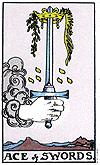




ArIES March 21 - April 19
This month you will have a tendency to spend far too much. You are usually very careful with your finances so make sure you do not overspend. The cards are showing that you will be spending time with loved ones and friends and want to keep everyone happy. You may be feeling a little restless in your job. Speak to you superiors for a better position. Look after your health and eat healthy foods.
TAUrUS April 20 - May 20
the cards are indicating a time of change around you. You may be looking at moving home or work. However, work will be satisfying later in the month, you just need to keep your mind on the job. there are a lot of things on your mind and a feeling of being restless. You will have some challenging moments in your relationships.




GEmINI May 21 - June 20
this month is going to be very interesting for you. You may be thinking of taking a holiday or a break which you badly need. take time out to solve difficult situations with your loved ones. With regard to your home, the cards are indicating some plans to get new furniture or decorative items. If you have started a gym regime, keep it up, as you need to keep an eye on your health.
this month you will be very energetic and feeling good about yourself. the cards are indicating you may have some fluctuations in your health, so make sure you keep your health in peak condition. Keep your checkups up-to-date. Be careful not to get into any financial commitments that you do not want to get into. At work you will achieve great headway and your superiors will notice your good work.
this month the cards are showing a time of passion in every aspect of your life. You will be looking at new projects and working with all your efforts towards creating a more balanced working life. If you are in a relationship, your focus will be on making things comfortable at home. the first half of the month will be frustrating as you will want to spend time with others, but family commitments will come first.
this month sees your enthusiasm on super turbo charge. You will be feeling very loved and wanted, as you have some lovely caring friends around you. there is also a special person who is showing you the right signals. there will be some developments with a project or work you are hoping to start. Children will be a little restless this month, as there are some problems at school that need to be dealt with.
 By NANcy JADE ALThEA www.cosmick-aura.com
By NANcy JADE ALThEA www.cosmick-aura.com
LIbrA sep 23 - oct 22
the cards are indicating a time of putting a lot of plans into action. You have been thinking about making major changes at home, with your work/ family life balance. Financially you will feel a bit more relaxed, as you have enough to pay for your outgoings. You may have to get your car seen to, as it may need to be serviced. Romantically, you will be wanting a lot of attention this month.
ScOrpIO oct 23 - nov 21
the cards are showing a great hunger for success this month. You will be enthusiastic and motivated to achieve anything. those of you who are working in the education field will be particularly successful this month. You may think of taking up a course to learn some new skills. Your energy levels will be high and you will be feeling rather happy. Maintain an exercise regime.
SAGITTArIUS nov 22 - dec 21
this month the cards are indicating a great month for career advancement and new possibilities. there will also be travelling this month, and you may decide to look at the possibility of a venture in another country. Financially you are managing to save a little money and you are feeling good about that. Your love life needs to be spiced up… boredom sets in with you Saggi’s.
cAprIcOrN dec 22 - Jan 19
this month you will be looking at ways of increasing your income. You will also be feeling healthy and relaxed as you are taking good care of your health and trying to lose those extra pounds. the cards are also indicating a time of travel. You will be thinking of purchasing a house or maintaining your current premises. there are a lot of exciting changes coming up for you this month.

this month you will be feeling restless as there is a lot of pressure on you at work. You will have to take care and get enough rest as you have a lot of demanding work and projects to handle. take care when driving, especially if you drive a red car. there is some news relating to a health test you took, which will be favourable. You will find little time for relaxing. the heat is on.
pIScES
the cards are showing a time when you will be taking more interest in spirituality meditation and chanting of some kind. You will be feeling stressed out, so will need to relax your mind and body. taking a massage will be a very good idea. Relationships are a little on and off, but you need to decide what you really want. Start a savings plan.
It’s a long awaited spy thriller with loads of action, but will appeal only to a selective audience, admits John Abraham when describing his soon-to-be released second co-produced film.
With no confusion or ambiguity in his mind, model-actor-producer John Abraham is aggressively promoting Madras Cafe saying it is not a multiplex movie and that he is targeting a selective audience who can appreciate it.
After his first successful production venture this is his second film and he is also acting in it.
“We are not trying to make our film a mass entertainer,” John said recently. “I am an actor and can make 10 other mass entertainers, but this film is to reach out to a specific audience and I don’t have a problem with that”.
The political thriller is directed by Shoojit Sircar. Explaining the concept, John stated, “This is not Welcome Back or Dostana where you get your audience. For this film, you have to search for your audience. I am sure people will appreciate the effort that we have put in; at least that’s the intention with which we have done it. I hope it does not go unnoticed”.
So the rumours are true! Shahrukh Khan, Bollywood’s most loved personality, is due to come to our shores for Parramasala. There was much buzz about this, with the Indian Link office taking a few calls by fans who wanted to find out if this was true. The authorities when asked were tight-lipped, giving us the feeling that something was abuzz. Apparently, SRK was asked, and the Sydney authorities were waiting for him to get back to them.
So, get set for SRK, Sydney!
The mighty King Khan will be here for Parramasala 4-7 October, the Premier of NSW Barry O’Farrell announced today.

he will headline a two-hour Indian variety show of music, dance and comedyTemptation Reloaded as part of the Festival.

Parramasala is NSW’s arts and culture festival centred around Sydney’s South Asian population which was launched two years ago. It includes free concerts and performances, exhibitions, food and handicrafts markets, and a communities stage.
While it started off with much promise, last year’s event was decidedly lacklustre, and no doubt the message was brought home loud and clear that a ‘celebrity’ was needed to infuse more enthusiasm.
Well, who better than SRK to bring in the bums on seats!
Mr O’Farrell observed at the announcement on July 31,“Shahrukh Khan’s show will attract an audience not only of Indian origin, but will also appeal to his fans overseas including Fiji, Singapore, Indonesia and Malaysia. In addition to international visitors, we are also expecting SRK and the Temptation Reloaded show to attract more than 5,000 people from Sydney and interstate”.
“Temptation Reloaded offers a unique cultural experience and it is a great event for Western Sydney with many hotels and restaurants expected to reap the tourism rewards,” Mr O’Farrell added.
SRK’s popularity is not lost on the Premier, a Twitter fan himself, who could not help noting that “Shahrukh Khan has more than four million Twitter followers and is one of the most popular and influential Bollywood actors”.
SRK will no doubt be a coup for Dr hari harinath, Parramasala Chairman, who has been looking at ways to make the event more profitable since taking over last year.
Temptation Reloaded will be held at Allphones Arena homebush on Monday 7 October.
Describing the movie John said, “I am sure people down south will appreciate what we have done. It’s a story about an agent and the story is told from his point of view. We researched for it for six years and it has honest content. The 30-plus audience will relate to this film immediately”.
Meanwhile, Nargis Fakhri is excited about her lead role in which she plays a war journalist. She says it was wonderful to learn about the real women who risk their lives on war fronts to get truth across to people.
“My experience of working on Madras Cafe was intense and interesting, like doing a lot of background work on what these women do... I think most of us watch the news and we don’t really care what’s going on in the world,” said the 33-year-old in an interview recently.
“It was great for me to do so much research on certain events that happened... as well as learning about these amazing women that are out in the field, in a war zone risking their life to get truth out to us,” she added.
Nargis believes Madras Cafe is very different from typical Bollywood fare.

“It was a wonderful experience where I play a journalist, an on-field war correspondent. This film is very different from typical hindi films,” she added.
Also part of the cast is model-turnedactress Raashi Khanna, a tinseltown beauty, but by her own admission, a geek. This graduate in English honours from Delhi’s Lady Shri Ram College is currently
doing her masters in psychology. Raashi plays the wife of an army officer (John Abraham) in the film.
John is obviously proud of Madras Cafe, but doesn’t want to use Bollywood’s new yardstick of the Rs. 100 crore club to measure its success.
“All Rs.100 crore films are not the greatest films. There are Rs.20 crore to Rs.30 crore films that are brilliant,” he said.
Well, good luck to Madras Cafe, let’s hope it’s a thriller at the box office.
Naseeruddin Shah has always been one of the most revered and respected veteran actors in Bollywood. So when he makes a pronouncement about anyone else in the pack, people sit up and take notice. This time Naseer had something to say about actor Arshad Warsi, with whom he worked with for Ishqiya
“Arshad is one of the finest actors we have today. he is the most secure actor in Bollywood. he is very sure about himself,” Nasser said in an interview recently. Nasser, who will once again be seen with Arshad in Ishqiya sequel Dedh Ishqiya, said his co-star doesn’t take himself too seriously, a trait that he finds admirable.
The Abhishek Chaubey directed 2010 Ishqiya featured Vidya Balan in the lead role, but for the sequel the director has roped in Madhuri Dixit for the female lead. he has also cast huma Qureshi in it. Talking about the sequel, Naseer said, “We have shot almost the entire film, now the climax portion is left, which will be shot soon. The sequel has nothing to do with the first one. It’s altogether a different story.”
So will Dedh Ishqiya be as popular as the original, with these two bigwigs in it? Well, let’s wait and see…
riteish the romantic!
Lucky Genelia D’Souza, she seems to have found a winner in hubby Riteish Deshmukh. Their love story is as Bollywood as it can get - the Masti star made sure he sent a telegram to his wife
on the day that the 160-year-old service came to an end.
“Received my 1st telegram on the last day of its service from my navra (husband). Thank u Riteish #happy me,” Genelia posted on her Twitter page.
She even posted a part image of the special telegram sent by her romantic and thoughtful hubby! The telegram service faded into history on July 15.
Riteish and Genelia were rumoured to have been in a relationship since they featured together in their debut film Tujhe Meri Kasam in 2003. Neither of them confirmed their romantic liaison, but they finally sealed their relationship by tying the knot in 2012. Theirs certainly seems to be an enduring love story. Apart from Tujhe Meri Kasam, the duo has worked together on the big screen in Masti and the more recent Tere Naal Love Ho Gaya
The boys of Bollywood could pick up a few romance pointers from Riteish, I’m sure!
Al’s a pal, says Akshay
Of all the unlikely people watching Bollywood’s buzz, would you believe Al Pacino has actually seen Akshay Kumar in a promo of Once Upon Ay Time In Mumbai Dobaara!? And apparently, Akshay’s role reminded hollywood superstar Al Pacino of his own blockbuster, The Godfather
Naturally, Akshay is thrilled that a person of Pacino’s stature noticed his film.
“It feels good that such a big star talks about our film and it’s a big thing for our industry,” the 44-year-old said recently.
Al Pacino played Michael Corleone, son of Vito, played by Marlon Brando, in 1972.
Meanwhile, Akshay feels that comparing him with Ajay Devgn, who played the lead in Once Upon A Time In Mumbaai, is unjust.
“We make a film for the sake of filmmaking and not to pull down someone else. I don’t work thinking that I have to do better work than Ajay Devgn,
I think only about my work,” Akshay said. “You should do your own work and that’s important. I have never thought this way and I don’t believe in competition. We are not horses that you can bet on us,” he added.
Directed by Milan Luthria, Once Upon Ay Time In Mumbai Dobaara! will release soon, and also stars Imran Khan and Sonakshi Sinha.
Well, at least Al’s a pal, if Ajay isn’t!
Prateik’s passionate pal
Actor Prateik’s gently intense performance in Issaq has received rave reviews from some critics and has been savaged by others. But the one person who stands firm by the young actor’s talent is Ravi Kishan, who plays a pivotal role in the film. In Ravi, Prateik has found not just an unlikely ally, but also a mentor and advisor.

Ravi, who plays a powerful role in Issaq, was resoundingly vocal against negative reviews of the film, which is director Manish Tiwary’s rugged adaptation of Romeo & Juliet
“Not liking a film is every critic’s right and prerogative. Please feel free to dislike our film by all means. But why these personal comments? Why hit out at Prateik just because he has had some setbacks lately?” asked Ravi recently.
What’s the chitchat here between Sonam Kapoor and dad Anil Kapoor? Send in your responses to win@indianlink.com.au and win a surprise prize
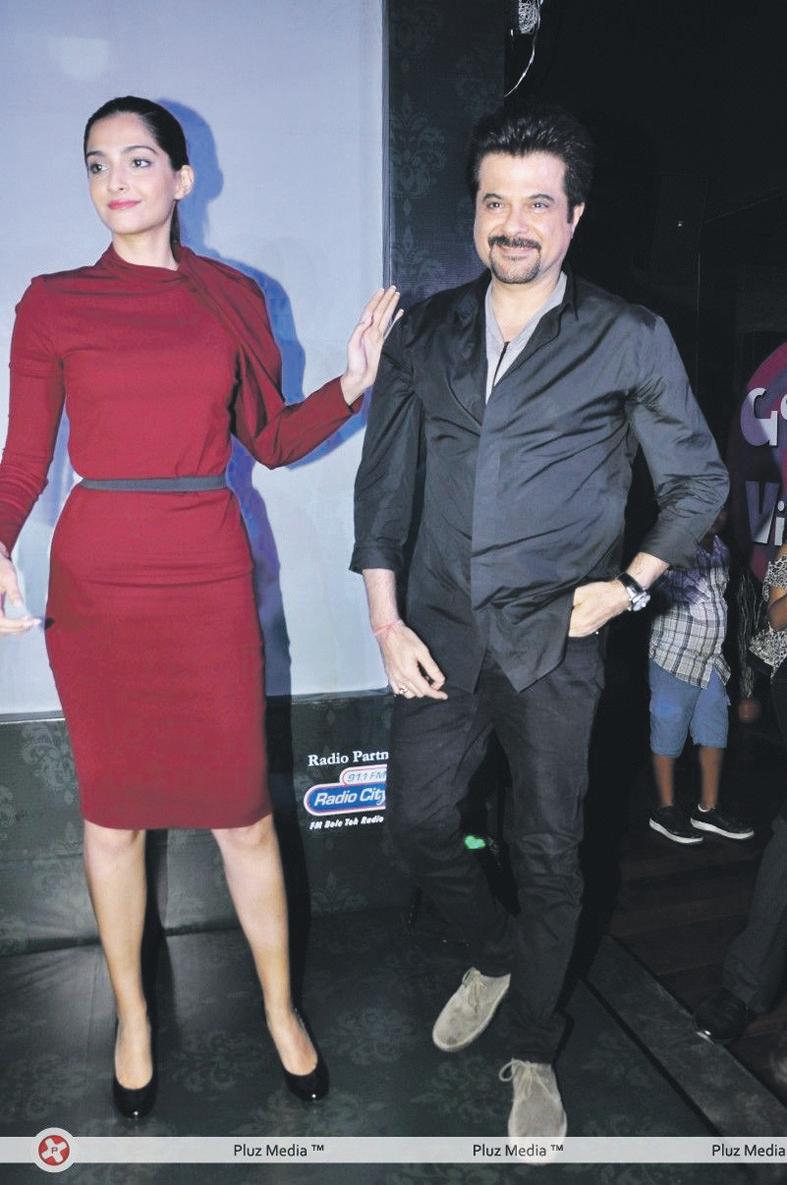
Aishwarya


“Other actors too go through a lean phase. Prateik has worked really hard on his body language, voice and performance in Issaq. I think he has a very bright future,” said the actor.

Ravi, who has assumed the role of a protective brother in the younger actor’s life, feels there is a lobby operating against Prateik.
“I don’t know how or why he has offended people. But there is a lot of hostility towards him. Maybe because he is not media savvy. he likes to keep to himself. That isn’t a crime. Don’t punish the boy for nothing. Look at the way the audience reacts to him in the theatres,” he said.
For Prateik, Ravi has been “a great source of strength and support”.
“I’ve no words to describe how much strength I’ve derived from just being in his company,” Prateik said.
Well, good actors enjoy each other’s company, so don’t worry, Prateik, you’ve got a friend!
What’s the chitchat here between Madhuri and Aishwarya?
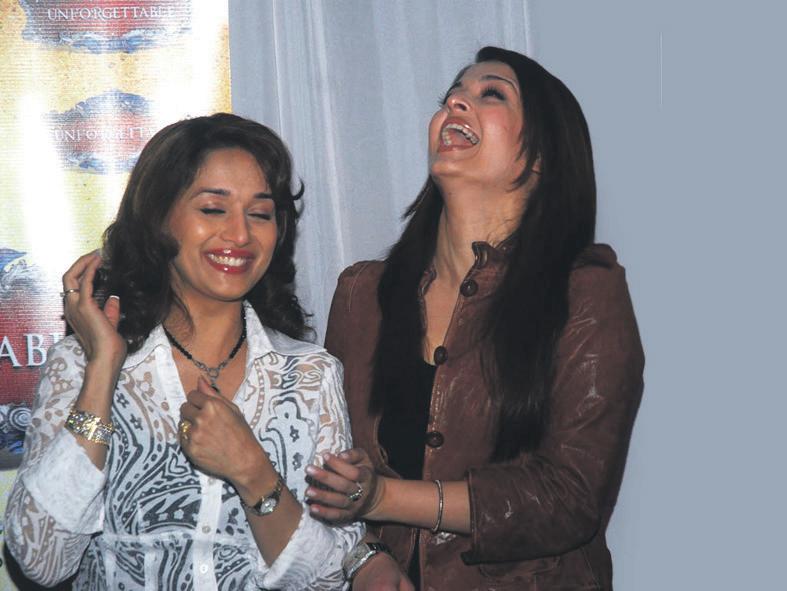
Mads: I’ve got to say, it’s much easier when the woman wears the pants in the relationship…
Aish: I know exactly what you mean!

Roopal Mahatta
Sylvania Waters NSW
Roopal wins a ticket to new Hindi film Chennai Express
LAST ISSUE cApTION cONTEST wINNING ENTry Share
STArrIng: Aida Al-Kashef, Neeraj Kabi and Sohum Shah
DIreCTOr: Anand Gandhi HHHHH
Sometimes ailing and healing become a unified process. Just as suffering is a precursor to wisdom, so too a film about the curative process can, and in this case, does, provide some profound insight into the workings of the human heart.
There are three stories of infinite reverberations in debutant director Anand Gandhi’s film. And what a debut Gandhi has made! Ship Of Theseus is so luminously layered, so spectacularly segmented, and yet so cohesively assembled, that you fear the entire burden of existence would weigh down the narrative. But no. The ‘Gandhian’ miracle is that there is a sense of lightness running through the three stories.
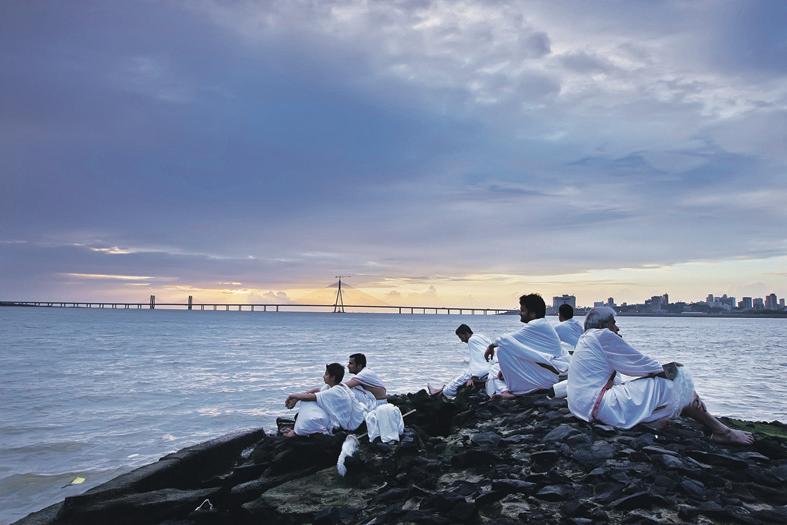
We can comfortably say, this is the neo-Gandhi’s ‘experiments with truth’.
Anand Gandhi doesn’t fear the unknown. he explores the darkest areas of the human soul and waits patiently for answers to emerge in the questioning light. Often we see the three protagonists walk that talk to an area of enlightenment through intersectional interactions that don’t subscribe to basic rules of engaging cinema.
The film’s three editors - Adesh Prasad, Sanyukta Kaza and Satchik Puranik (presume each edited one of the three stories), don’t prune down the shots to get our attention. Instead, we are invited into this world of spatial scrupulousness where cinematic rules of timemanagement are undermined for the sake of something much larger and vital. hence, when in my favourite story, the ailing monk (played with inscrutable veracity by Neeraj Kabi) speaks to his young beatnik lawyer-friend as they walk briskly across the bustling streets of Mumbai, the camera trails their dialogue without cuts.
No one would dare interrupt a discourse on the exigencies and practicalities of a non-violent protest against medical experiments on animals when two such iconoclasts are at it with an extempore exuberance.
The importance of this film lies in its complete eschewal of self-importance.
Anand Gandhi takes on questions that echo across eternities. Rather than assume a position of infinite disposition, the film’s tone is
maestro of the lens!) is given the daunting task of visually manifesting a series of abstract intangible images of suffering and redemption that run through the director’s head. The camera never lies. This film wouldn’t allow it to, even if it tried.
The visuals constantly assume positions that manifest the lost inner world of the characters while making sure not to lose sight of the ambience that fosters their individual space. As the characters seek to find a centre to their fractured conscience, we are privy to an extraordinary process of filmmaking where the director builds a connecting bridge between the world of ideas and their outward manifestation.

The most straightforward and the least lyrical of the three stories is the third story where Sohum Shah (born to play
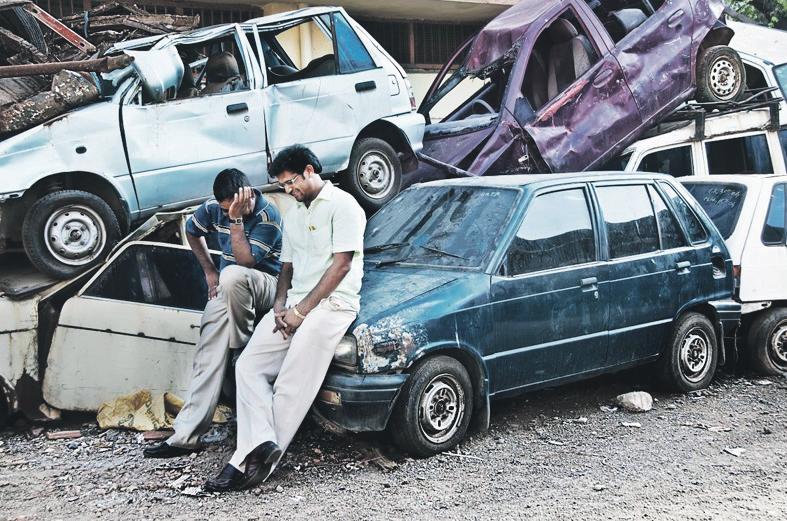
stolen kidney of a poor chawl dweller. Retrieval and redemption run across the length of this unconditionally nourishing cinema. Gandhi’s narration is so devoid of cinematic affectations and so emphatically rooted to a reality that shuns coyness, that we straightaway become a part of the world that the director has built brick by brick into this edifice of uncluttured beauty.
Indeed, the more profound the ideas get in Gandhi’s narration, the less complicated is the storytelling. Finally, when the three stories come together through the theme of organ transplant, we are no longer looking at and for binding threads. Ship Of Theseus takes us so far away from the acceptable prerequisites and definition of ‘good
Ship Of Theseus is a cinema of selfindulgence at its most sublime. Gandhi weaves his ideas into coiled urgent vignettes that tell us so much about the quality of life without engaging us in unnecessary polemics. This is a film of ideas.
What we come away with is a sense of loss even as the film weaves a hypnotic tale of repair, redemption and renewal.
This is a sombre, meditative, profound and yet weightless work of unfettered beauty. A life-changing experience.
No less. Anand Gandhi defines life’s mysteries in mysterious ways, showing a command over his mammoth philosophical world that Mani Kaul and Jean-Luc Godard would have envied.
Su BHASH K. J HA
STArrIng: Arshad Warsi, Riya Sen, Raj Babbar, Paresh Rawail, Sushmita Mukherjee, Tinu Anand, himani Shivpuri, Shakti Kapoor, Akash Chopra and Tahira Kochar
DIreCTOr: Amrit Sagar Chopra
HHHHH
Mira Nair’s Monsoon Wedding proved it once for all. Only Greek weddings need not be big and fat, Punjabi Indian weddings don’t lag far behind either.
Bollywood has over the years developed a peculiar partiality towards romantic-comedies set during wedding celebrations. Aditya Chopra’s Dilwale Dulhania Le Jayenge did it too. And got away with it with spectacular success.
Director Amrit Sagar Chopra, who has to his credit that very fine war epic 1971, returns to direction after six years. he certainly has not lost his spark as a storyteller, who can frame his characters in postures of flattering self-revelation even when caught with their pants down.
And pants certainly slip repeatedly to the ground in this sex comedy where no one really gets down to having sex. They just speak about sex, and that too in hushed wink-wink-nudgenudge tones. This “sex comedy” is astonishingly and refreshingly free of smut and suggestiveness.
Even when Arshad Warsi, that naturalborn scene-stealer, asks his kid-brother (newcomer Akash Chopra) if he had ever “done it” before his wedding, it’s done with wit, and a certain innocence.
The tale of a virgin-groom and his determination not to lose his cherry no matter how much he gets provoked by his randy brother, is told with a tonguein-cheek flair. The narration is easygoing and casually stylish. The going never gets garish or gross. And that, during these alarming times of grand masti, is a relief.
The wink and the smirk remain the prevalent moods until midway when, like most Bollywood comedies, the bantering boisterousness of a band-baaja baarati runs out of steam... and scream.
The second half whittles down to a whimper. The climax with Akash dangling from a window in a fortress is perhaps indicative of where the
Nonetheless, the theory that “all” men cheat on their wives is interestingly explored through the slimy characters played by Paresh Rawal, who proves his wife, the brilliant Sushmita Mukherjee, is clinically unhinged to get away with his womanising; Shakti Kapoor, who euphemistically describes fornicating as smoking, and Arshad, who fools his gullible wife Riya Sen into believing he is faithful to her.
The narrative remains faithful to the theme of unfaithful husbands. There are perky moments in the first-half where the writing outdoes the impending mood of sluggishness that creeps into the second-half.
With a cast that seems to have a blast, Akash makes a comfortable
STArrIng: Prateik, Amyra Dastur, Ravi Kishen, Rajeshwari Sachdev, Makarand Deshpande, Prashant Kumar and Prashant Narayanan
DIreCTOr: Manish Tiwary
Nothing prepares you for this.
Wonder what Shakespeare would have thought of director Manish Tiwary’s desi Varanasi must-see adaptation of one of his most famous works.
With considerable support from his co-writers Padmaja Thakore-Tiwary and Pawan Soni, Manish Tiwary has written a raw and rugged Romeo and Juliet, which has no balcony scene (thank god!) and yes, Juliet remains a proud virgin till the end. The deviations apart, Issaq is a frightfully fertile film filled with images of rancour and tenderness.
Tiwary wastes no time in getting into the thick of Montague-Capulet feud. here they are named the Mishras and the Kashyaps - but what’s in a name? These are families teeming with gun-toting leery men whose voracious appetite for killing is matched by their libidos.
But, if Tiwary chooses not to tamper with the original Shakespearean ending (down to the apothecary’s potion working cruel deceptions on the couple’s turbulent destiny), he makes radical changes in the play’s politics. Naxalism and Maoism are interwoven into the courtship, while the couple in love couldn’t care less if the world around them is going up in flames.
Manish Tiwary manages to make his lead pair look so much in love and so oblivious to its damning repercussions that we wonder if this pair’s karma is engendered by despair.
Indeed doom has seldom seemed so desirable on screen. Tiwary’s brilliant production designer Ashwini Shrivastav gives to Varanasi a look of lived-in and loved-in splendour. We’ve been through the crowded bylanes and river ghats of the holy city in a number of films. But somehow Varanasi looks... born again!
Vishal Sinha’s cinematography is plush and passionate and yet never garish.

Romeo and Juliet’s turbulent togetherness comes across well.
Rahul and Bachi, Tiwary’s desi Romeo and ghar ki Juliet, meet at a holi bash. As they stroll in a bangles market, the loud vibrant colours of the glass ornament
screaming out a riot of lovelorn messages.
This lush sequence transpires right after Rahul’s two sardonic friends (one of who will die a gangwar-infused fearless death soon after) discuss how nowadays Rahul has lost his machismo.
But we are jumping the gun. Can’t help it. Guns blaze all across this choleric love tale...
Manish Tiwary knows his Shakespeare as well as he knows the rugged north Indian hinterland of blood savagery and abuses!
Tiwary cleverly holds back the boorishness. There’s little or no vulgarity in the script. Issaq manages to project the perky innocence of firstlove without getting over-cute, cloying or cheesy.
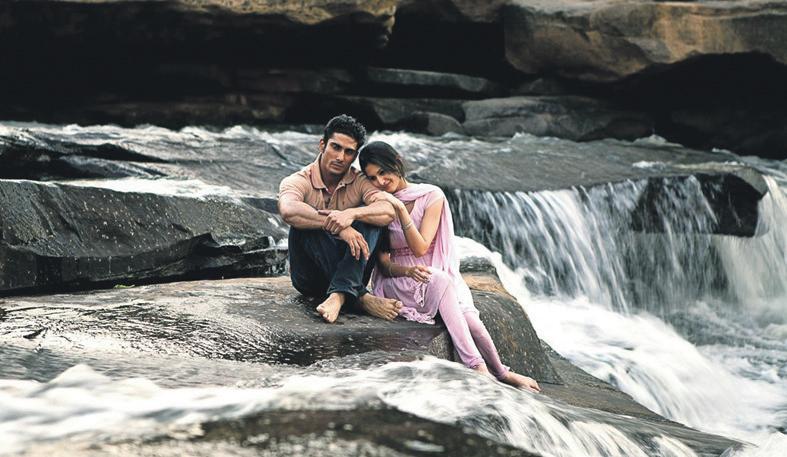
Much of the endearing and enduring impact of the romance comes from the two players.
Prateik’s smitten Romeo is so good that you tend to forgive his past embarrassing performances. There’s a marked improvement in his diction delivery. The UP accent does fall off, but what the heck! This Romeo is real. So are the songs, which mesh fluently
debut. Arshad Warsi’s incorrigible ‘Bade Bhaiyya’ act and his counseling on hormonal freedom are the film’s USP.
Arshad doles out brotherly advice like Gandhian wisdom, even bringing in a reference to ‘Bhagwan Ram’ that would have the director’s grandfather, the teleserial Ramayan maker Ramanand Sagar, blush.
Cinematographer Aseem Bajaj films the festivities with restrained gusto. Amrit Sagar is fully in control of the comic chaos in this big fat
slightly too ‘convent’ to be a Varanasi girl, but her radiant sincerity simply melts your misgivings.
Among the rest of the fine cast, Ravi Kishen is outstanding as Amyra’s protective, angry, violent uncle. Rajeshwari Sachdev as Amyra’s stepmom steps into a randy role with relish, bringing in a sexual frankness and a moral ambivalence on which hangs the impact of the tragedy.
Love and war come together in a passionate embrace.
Su BHASH K. J HAComplaining works as a kind of soothing balm to frazzled nerves. It absorbs our worries, our woes, our anxieties and the thousand natural shocks that flesh is heir to.
And what better way to complain than the feedback forms that organisations use to assess customer satisfaction.

These assessment sheets bombard the hapless consumer at every turn. From shopping centres to video stores, lecture halls and used car shows, we are finally being asked what we think. Questionnaires have suddenly become a necessity for corporations who have suddenly clued on to the fact that listening to and addressing customer concerns can actually improve profits.
I for one am a big fan of these assessment sheets and fill them out with a meticulous zeal and solemn gravity, weighing each response carefully like a guru issuing prophetic wisdoms.
These forms pander to the selfimportance that exists in all of us. It is a natural law of the universe that as soon as any regular Joe is asked for their opinion, they become a self-proclaimed expert swaggering forth with all sorts of gems.
For example recently my local supermarket revamped its layout with flashy colours and rearranged aisles.
No doubt some ingenious marketing hack in accounting had bloodlessly deduced (after careful study of the psychological make-up of us ‘consumers’) that somehow swapping cat food in Aisle 3 and bread in Aisle 2 and drowning the store in a horrid blood red colour would somehow cough up more pennies for the corporate coffers.
This method of seducing us to buy more only succeeded however in tormenting this customer, forcing me to navigate frightening new terrain after having just figured out where the stationary and hosiery were after the last revamp.
Needless to say I was incensed, and vented my frustration on the assessment form with gusto that no doubt some poor sod in a customer service centre somewhere is still deciphering. It went something along the lines of ‘Bright colours are infantile and abrasive,’ ‘Aisle 3 packaged goods inconvenient and clumsy,’ ‘Fruit aisles too big and overwhelming causing customer to ponder on the boundless and amorphous nature of existence, provoking existential angst and general despair causing said customer to lash out at shiny tomatoes’.
I must say though, venting has a brilliantly cleansing feeling, like purgatory or confession.
And thus to the heart of my diatribe.
My personal homage to this brilliant shock absorber - the assessment form.
I say, thank you my friend, for being there to chart the discontent of our lives. From faulty plumbing, shopping centre revamps, annoying commercials, uninspiring fads, banal celebrities and the hazards and perils of public transport. You were there through it all.
Sure you came from humble beginnings. A grumble there, a note here. But gradually you rose. Steadily gaining speed on the backs of whingers and complainers everywhere. You spoke to that deep visceral need in everyone - to have our complaints acknowledged, appreciated, accepted.
You took the place of the sympathetic friend, the halflistening partner. You did not judge or condemn, you merely listened.
Yes, you bring out the little old granny in all of us. That dark, complaining, annoying side which sees disturbance and righteous indignation at every possible human error and irritation.
But thankfully you allowed us
to purge these dark and abysmal thoughts. To give a forum from which our collective consciousness could rid itself of the hundred shocks and injustices of modern life. You made complaining fun, necessary, compulsory almost.
Rising from the ashes of irrelevance, a certain cachet began to be attached to you. Suddenly customer satisfaction became all the rage. Hotlines and focus groups popped up everywhere.
You gave complaining a competitive edge, made it an art to be striven for. A certain glamour infected the age-old tradition. Now not only was content important - a certain style was required. There was a race to be the most terribly injured, outraged and insulted. To be the most grieved, in the most flagrantly woe-is-me, helpless romanticheroine style manner.
You created hierarchies in the complainants’ code of conduct. The bitter edge that was the raison d’etre of every true blue complainant started to disappear. Instead posers started coming in, imposters with the flair and style, but lacking in that essential venom count.

Instead of baleful treatises on the futility of life and the human condition in general, theirs was only semi-wistful nostalgic
I say, thank you my friend, for being there to chart the discontent of our lives. From faulty plumbing, shopping centre revamps, annoying commercials, uninspiring fads, banal celebrities and the hazards and perils of public transport. You were there through it all
tracts artfully requesting or gently seeking a re-evaluation of things as they were - more politeness please, more civility in public life, let’s all be good citizens and live harmoniously together so all our problems miraculously disappear.
The power of the complaint began to be diluted. Political correctness began to infiltrate the complainer’s words watering down the pointed whinge to a pitiful whimper.
The true complainant never pleads, never compromises, never asks ohh so gently for things to change. We are not revolutionaries, in fact we are counter-revolutionaries. Our purpose is to remain in constant opposition. We truly know that life is a never-ending struggle against the ‘blows and arrows of outrageous fortune’. We shall continue to fight, to complain, to whinge. If we lived in a veritable utopia, we should find a flaw, a tragic error in the perfection of things. We work against silence, our style is bombastic, lacking in subtlety and full of contradictions. Nothing or no one is sacred and immune from our scrutinising glare - full of evaluation and judgment.
We are the complainers.
Do you know a super special dad out there in the community who deserves the title?
Fathers are those special people who are like our rocks in life. They’re our foundation and are there to help us out in times of need.
That’s why at Indian Link we would like to invite nominations for our inaugural Indian Link Father fo the Year Award 2013 from the Australian Indian community. If your father, husband, brother, friend, or anyone you know is a very special dad, you may want to nominate them for this award.
Tell us in 300 words or less why your nominee should win. Include photographs of the nominee, and any supporting documents.
Email entry to: win@indianlink.com.au
Get your entry in by 5pm on August 25, 2013 Prize?
The award-winning father will receive special prizes including $500 from Indian Link.

The award winner will also feature in the September edition of Indian Link, as well as on Indian Link Radio.
The nominee must be currently living in Australia as a permanent resident or an Australian citizen. The nominee must have certain special qualities that make him stand out from the crowd. Employees, as well as friends of family of employees of Indian Link cannot enter the competition.
We look forward to seeing your nominations!


